Sailboat Parts Explained: Illustrated Guide (with Diagrams)
When you first get into sailing, there are a lot of sailboat parts to learn. Scouting for a good guide to all the parts, I couldn't find any, so I wrote one myself.
Below, I'll go over each different sailboat part. And I mean each and every one of them. I'll walk you through them one by one, and explain each part's function. I've also made sure to add good illustrations and clear diagrams.
This article is a great reference for beginners and experienced sailors alike. It's a great starting point, but also a great reference manual. Let's kick off with a quick general overview of the different sailboat parts.

General Overview
The different segments
You can divide up a sailboat in four general segments. These segments are arbitrary (I made them up) but it will help us to understand the parts more quickly. Some are super straightforward and some have a bit more ninja names.
Something like that. You can see the different segments highlighted in this diagram below:

The hull is what most people would consider 'the boat'. It's the part that provides buoyancy and carries everything else: sails, masts, rigging, and so on. Without the hull, there would be no boat. The hull can be divided into different parts: deck, keel, cabin, waterline, bilge, bow, stern, rudder, and many more.
I'll show you those specific parts later on. First, let's move on to the mast.

Sailboats Explained
The mast is the long, standing pole holding the sails. It is typically placed just off-center of a sailboat (a little bit to the front) and gives the sailboat its characteristic shape. The mast is crucial for any sailboat: without a mast, any sailboat would become just a regular boat.
I think this segment speaks mostly for itself. Most modern sailboats you see will have two sails up, but they can carry a variety of other specialty sails. And there are all kinds of sail plans out there, which determine the amount and shape of sails that are used.
The Rigging
This is probably the most complex category of all of them.
Rigging is the means with which the sails are attached to the mast. The rigging consists of all kinds of lines, cables, spars, and hardware. It's the segment with the most different parts.
The most important parts
If you learn anything from this article, here are the most important parts of any sailboat. You will find all of these parts in some shape or form on almost any sailboat.

Okay, we now have a good starting point and a good basic understanding of the different sailboat parts. It's time for the good stuff. We're going to dive into each segment in detail.
Below, I'll go over them one by one, pointing out its different parts on a diagram, listing them with a brief explanation, and showing you examples as well.
After reading this article, you'll recognize every single sailboat part and know them by name. And if you forget one, you're free to look it up in this guide.

On this page:
The hull is the heart of the boat. It's what carries everything: the mast, the sails, the rigging, the passengers. The hull is what provides the sailboat with its buoyancy, allowing it to stay afloat.
Sailboats mostly use displacement hulls, which is a shape that displaces water when moving through it. They are generally very round and use buoyancy to support its own weight. These two characteristics make sure it is a smooth ride.
There are different hull shapes that work and handle differently. If you want to learn more about them, here's the Illustrated Guide to Boat Hull Types (with 11 Examples ). But for now, all we need to know is that the hull is the rounded, floating part of any sailboat.
Instead of simply calling the different sides of a hull front, back, left and right , we use different names in sailing. Let's take a look at them.

The bow is the front part of the hull. It's simply the nautical word for 'front'. It's the pointy bit that cuts through the water. The shape of the bow determines partially how the boat handles.
The stern is the back part of the hull. It's simply the nautical word for 'back'. The shape of the stern partially determines the stability and speed of the boat. With motorboats, the stern lies deep inside the water, and the hull is flatter aft. Aft also means back. This allows it to plane, increasing the hull speed. For sailboats, stability is much more important, so the hull is rounded throughout, increasing its buoyancy and hydrodynamic properties.
The transom is the backplate of the boat's hull. It's the most aft (rear) part of the boat.
Port is the left side of a sailboat.
Starboard is the right side of a sailboat
The bilges are the part where the bottom and the sides of the hull meet. On sailboats, these are typically very round, which helps with hydrodynamics. On powerboats, they tend to have an angle.
The waterline is the point where the boat's hull meets the water. Generally, boat owners paint the waterline and use antifouling paint below it, to protect it from marine growth.
The deck is the top part of the boat's hull. In a way, it's the cap of the boat, and it holds the deck hardware and rigging.
Displacement hulls are very round and smooth, which makes them very efficient and comfortable. But it also makes them very easy to capsize: think of a canoe, for example.
The keel is a large fin that offsets the tendency to capsize by providing counterbalance. Typically, the keel carries ballast in the tip, creating a counterweight to the wind's force on the sails.
The rudder is the horizontal plate at the back of the boat that is used to steer by setting a course and maintaining it. It is connected to the helm or tiller.
Tiller or Helm
- The helm is simply the nautical term for the wheel.
- The tiller is simply the nautical term for the steering stick.
The tiller or helm is attached to the rudder and is used to steer the boat. Most smaller sailboats (below 30') have a tiller, most larger sailboats use a helm. Large ocean-going vessels tend to have two helms.
The cockpit is the recessed part in the deck where the helmsman sits or stands. It tends to have some benches. It houses the outside navigation and systems interfaces, like the compass, chartplotter, and so on. It also houses the mainsheet traveler and winches for the jib. Most boats are set up so that the entire vessel can be operated from the cockpit (hence the name). More on those different parts later.
Most larger boats have some sort of roofed part, which is called the cabin. The cabin is used as a shelter, and on cruising sailboats you'll find the galley for cooking, a bed, bath room, and so on.
The mast is the pole on a sailboat that holds the sails. Sailboats can have one or multiple masts, depending on the mast configuration. Most sailboats have only one or two masts. Three masts or more is less common.
The boom is the horizontal pole on the mast, that holds the mainsail in place.
The sails seem simple, but actually consist of many moving parts. The parts I list below work for most modern sailboats - I mean 90% of them. However, there are all sorts of specialty sails that are not included here, to keep things concise.

The mainsail is the largest sail on the largest mast. Most sailboats use a sloop rigging (just one mast with one bermuda mainsail). In that case, the main is easy to recognize. With other rig types, it gets more difficult, since there can be multiple tall masts and large sails.
If you want to take a look at the different sail plans and rig types that are out there, I suggest reading my previous guide on how to recognize any sailboat here (opens in new tab).
Sail sides:
- Leech - Leech is the name for the back side of the sail, running from the top to the bottom.
- Luff - Luff is the name for the front side of the sail, running from the top to the bottom.
- Foot - Foot is the name for the lower side of the sail, where it meets the boom.
Sail corners:
- Clew - The clew is the lower aft (back) corner of the mainsail, where the leech is connected to the foot. The clew is attached to the boom.
- Tack - The tack is the lower front corner of the mainsail
- Head - The head is the top corner of the mainsail
Battens are horizontal sail reinforcers that flatten and stiffen the sail.
Telltales are small strings that show you whether your sail trim is correct. You'll find telltales on both your jib and mainsail.
The jib is the standard sized headsail on a Bermuda Sloop rig (which is the sail plan most modern sailboats use).
As I mentioned: there are all kinds, types, and shapes of sails. For an overview of the most common sail types, check out my Guide on Sail Types here (with photos).
The rigging is what is used to attach your sails and mast to your boat. Rigging, in other words, mostly consists of all kinds of lines. Lines are just another word for ropes. Come to think of it, sailors really find all kinds of ways to complicate the word rope ...
Two types of rigging
There are two types of rigging: running and standing rigging. The difference between the two is very simple.
- The running rigging is the rigging on a sailboat that's used to operate the sails. For example, the halyard, which is used to lower and heave the mainsail.
- The standing rigging is the rigging that is used to support the mast and sail plan.
Standing Rigging

Here are the different parts that belong to the standing rigging:
- Forestay or Headstay - Line or cable that supports the mast and is attached to the bow of the boat. This is often a steel cable.
- Backstay - Line or cable that supports the mast and is attached to the stern of the boat. This is often a steel cable.
- Sidestay or Shroud - Line or cable that supports the mast from the sides of the boat. Most sailboats use at least two sidestays (one on each side).
- Spreader - The sidestays are spaced to steer clear from the mast using spreaders.
Running Rigging: different words for rope
Ropes play a big part in sailing, and especially in control over the sails. In sailboat jargon, we call ropes 'lines'. But there are some lines with a specific function that have a different name. I think this makes it easier to communicate with your crew: you don't have to define which line you mean. Instead, you simply shout 'mainsheet!'. Yeah, that works.
Running rigging consists of the lines, sheets, and hardware that are used to control, raise, lower, shape and manipulate the sails on a sailboat. Rigging varies for different rig types, but since most sailboats are use a sloop rig, nearly all sailboats use the following running rigging:

- Halyards -'Halyard' is simply the nautical name for lines or ropes that are used to raise and lower the mainsail. The halyard is attached to the top of the mainsail sheet, or the gaffer, which is a top spar that attaches to the mainsail. You'll find halyards on both the mainsail and jib.
- Sheets - 'Sheet' is simply the nautical term for lines or ropes that are used to set the angle of the sail.
- Mainsheet - The line, or sheet, that is used to set the angle of the mainsail. The mainsheet is attached to the Mainsheet traveler. More on that under hardware.
- Jib Sheet - The jib mostly comes with two sheets: one on each side of the mast. This prevents you from having to loosen your sheet, throwing it around the other side of the mast, and tightening it. The jib sheets are often controlled using winches (more on that under hardware).
- Cleats are small on-deck hooks that can be used to tie down sheets and lines after trimming them.
- Reefing lines - Lines that run through the mainsail, used to put a reef in the main.
- The Boom Topping Lift is a line that is attached to the aft (back) end of the boom and runs to the top of the mast. It supports the boom whenever you take down the mainsail.
- The Boom Vang is a line that places downward tension on the boom.
There are some more tensioning lines, but I'll leave them for now. I could probably do an entire guide on the different sheets on a sailboat. Who knows, perhaps I'll write it.
This is a new segment, that I didn't mention before. It's a bit of an odd duck, so I threw all sorts of stuff into this category. But they are just as important as all the other parts. Your hardware consists of cleats, winches, traveler and so on. If you don't know what all of this means, no worries: neither did I. Below, you'll find a complete overview of the different parts.
Deck Hardware

Just a brief mention of the different deck hardware parts:
- Pulpits are fenced platforms on the sailboat's stern and bow, which is why they are called the bow pulpit and stern pulpit here. They typically have a solid steel framing for safety.
- Stanchons are the standing poles supporting the lifeline , which combined for a sort of fencing around the sailboat's deck. On most sailboats, steel and steel cables are used for the stanchons and lifelines.
Mainsheet Traveler
The mainsheet traveler is a rail in the cockpit that is used to control the mainsheet. It helps to lock the mainsheet in place, fixing the mainsails angle to the wind.

If you're interested in learning more about how to use the mainsheet traveler, Matej has written a great list of tips for using your mainsheet traveler the right way . It's a good starting point for beginners.
Winches are mechanical or electronic spools that are used to easily trim lines and sheets. Most sailboats use winches to control the jib sheets. Modern large sailing yachts use electronic winches for nearly all lines. This makes it incredibly easy to trim your lines.

You'll find the compass typically in the cockpit. It's the most old-skool navigation tool out there, but I'm convinced it's also one of the most reliable. In any way, it definitely is the most solid backup navigator you can get for the money.

Want to learn how to use a compass quickly and reliably? It's easy. Just read my step-by-step beginner guide on How To Use a Compass (opens in new tab .
Chartplotter
Most sailboats nowadays use, besides a compass and a map, a chartplotter. Chartplotters are GPS devices that show a map and a course. It's very similar to your normal car navigation.

Outboard motor
Most sailboats have some sort of motor to help out when there's just the slightest breeze. These engines aren't very big or powerful, and most sailboats up to 32' use an outboard motor. You'll find these at the back of the boat.

Most sailboats carry 1 - 3 anchors: one bow anchor (the main one) and two stern anchors. The last two are optional and are mostly used by bluewater cruisers.

I hope this was helpful, and that you've gained a good understanding of the different parts involved in sailing. I wanted to write a good walk-through instead of overwhelming you with lists and lists of nautical terms. I hope I've succeeded. If so, I appreciate any comments and tips below.
I've tried to be as comprehensive as possible, without getting into the real nitty gritty. That would make for a gigantic article. However, if you feel I've left something out that really should be in here, please let me know in the comments below, so I can update the article.
I own a small 20 foot yacht called a Red witch made locally back in the 70s here in Western Australia i found your article great and enjoyed reading it i know it will be a great help for me in my future leaning to sail regards John.
David Gardner
İ think this is a good explanation of the difference between a ”rope” and a ”line”:
Rope is unemployed cordage. In other words, when it is in a coil and has not been assigned a job, it is just a rope.
On the other hand, when you prepare a rope for a specific task, it becomes employed and is a line. The line is labeled by the job it performs; for example, anchor line, dock line, fender line, etc.
Hey Mr. Buckles
I am taking on new crew to race with me on my Flying Scot (19ft dingy). I find your Sailboat Parts Explained to be clear and concise. I believe it will help my new crew learn the language that we use on the boat quickly without being overwhelmed.
PS: my grandparents were from Friesland and emigrated to America.
Thank you Shawn for the well written, clear and easy to digest introductory article. Just after reading this first article I feel excited and ready to set sails and go!! LOL!! Cheers! Daniel.
steve Balog
well done, chap
Great intro. However, the overview diagram misidentifies the cockpit location. The cockpit is located aft of the helm. Your diagram points to a location to the fore of the helm.
William Thompson-Ambrose
An excellent introduction to the basic anatomy and function of the sailboat. Anyone who wants to start sailing should consider the above article before stepping aboard! Thank-you
James Huskisson
Thanks for you efforts mate. We’ve all got to start somewhere. Thanks for sharing. Hoping to my first yacht. 25ft Holland. Would love to cross the Bass Strait one day to Tasmania. 👌 Cheers mate
Alan Alexander Percy
thankyou ijust aquired my first sailboat at 66yrs of age its down at pelican point a beautifull place in virginia usa my sailboat is a redwing 30 if you are ever in the area i wouldnt mind your guidance and superior knowledge of how to sail but iam sure your fantastic article will help my sailboat is wings 30 ft
Thanks for quick refresher course. Having sailed in California for 20+ years I now live in Spain where I have to take a spanish exam for a sailboat license. Problem is, it’s only in spanish. So a lot to learn for an old guy like me.
Very comprehensive, thank you
Your article really brought all the pieces together for me today. I have been adventuring my first sailing voyage for 2 months from the Carolinas and am now in Eleuthera waiting on weather to make the Exumas!!! Great job and thanks
Helen Ballard
I’ve at last found something of an adventure to have in sailing, so I’m starting at the basics, I have done a little sailing but need more despite being over 60 life in the old dog etc, thanks for your information 😊
Barbara Scott
I don’t have a sailboat, neither do l plan to literally take to the waters. But for mental exercise, l have decided to take to sailing in my Bermuda sloop, learning what it takes to become a good sailor and run a tight ship, even if it’s just imaginary. Thank you for helping me on my journey to countless adventures and misadventures, just to keep it out of the doldrums! (I’m a 69 year old African American female who have rediscovered why l enjoyed reading The Adventures of Robert Louis Stevenson as well as his captivating description of sea, wind, sailboat,and sailor).
Great article and very good information source for a beginner like me. But I didn’t find out what I had hoped to, which is, what are all those noisy bits of kit on top of the mast? I know the one with the arrow is a weather vane, but the rest? Many thanks, Jay.
Louis Cohen
The main halyard is attached to the head of the mainsail, not the to the mainsheet. In the USA, we say gaff, not gaffer. The gaff often has its own halyard separate from the main halyard.
Other than that it’s a nice article with good diagrams.
A Girl Who Has an Open Sail Dream
Wow! That was a lot of great detail! Thank you, this is going to help me a lot on my project!
Hi, good info, do u know a book that explains all the systems on a candc 27,
Emma Delaney
As a hobbyist, I was hesitant to invest in expensive CAD software, but CADHOBBY IntelliCAD has proven to be a cost-effective alternative that delivers the same quality and performance.
https://www.cadhobby.com/
Leave a comment
You may also like, guide to understanding sail rig types (with pictures).
There are a lot of different sail rig types and it can be difficult to remember what's what. So I've come up with a system. Let me explain it in this article.

The Ultimate Guide to Sail Types and Rigs (with Pictures)

The Illustrated Guide To Boat Hull Types (11 Examples)

How To Live On a Boat For Free: How I'd Do It

How To Live on a Sailboat: Consider These 5 Things
Own your first boat within a year on any budget.
A sailboat doesn't have to be expensive if you know what you're doing. If you want to learn how to make your sailing dream reality within a year, leave your email and I'll send you free updates . I don't like spam - I will only send helpful content.
Ready to Own Your First Boat?
Just tell us the best email address to send your tips to:
No products in the cart.
Sailing Ellidah is supported by our readers. Buying through our links may earn us an affiliate commission at no extra cost to you.
The Different Parts Of A Sailboat Explained
A sailboat consists of hundreds of parts, each with its specific term and function. From stern to bow, keel to mast, each part and its equipment plays a vital role in making the vessel seaworthy and able to sail.
In this guide, I’ll show you most of the components so you can better understand what they are and their function. We’ll begin with the main components, move to the basic features, and finish with our interior and equipment.
The main parts of a sailboat
The main parts of a sailboat are the key components that make it a vessel able to sail. You’ll notice that the structure has several distinct differences from powerboats.
We can categorize the main parts into the following:
- Hull: The main structure, or “body” part of a boat.
- Keel: The heavy fin at the bottom allows stability under sail.
- Rudder: The fin sticking down at the stern, allowing us to steer the vessel.
- Mast: The “spars” or “poles” holding the sails.
- Rigging: The standing rig is the wires that supports the mast. The running rigging is all the lines that control the sails.
- Boom: The horizontal spar supporting the bottom of the mainsail.
- Sails: The canvas used to harness the energy of the wind.
Let’s dig a bit deeper into each of the components.
Hull – The main structure
A sailboat’s hull is the vessel’s main body or structure. The shape is vital to the boat’s performance and stability, and you have probably seen boats in many different forms. Older vessels are typically narrow, with a rounded underbody and a small stern. Modern designs have a flatter belly and broad stern supporting dual helm stations.
One of the hull’s primary functions is to displace water and provide buoyancy to keep the boat afloat. The hull is also the structure that holds the vessel’s living compartments and all its equipment. The main structure must be strong enough to withstand the forces of the water and any rough weather conditions that Mother Nature might throw at it.
Fiberglass (GRP), steel, aluminum, and wood are the most commonly used hull materials, each with pros and cons.
You can learn more about hull materials and their strengths in this article .
A monohull is a type of sailboat that has a single hull. Monohulls are classified into two categories based on weight and shape: planing and displacement hulls.
Sailboats with more than one hull are called multihulls. There are two types of multihulls: catamarans, which have two, and trimarans, which have three. These boats are typically designed with planing hulls.
Keel – The fin under the boat
The keel of a sailboat is a structural fin that extends downward from the bottom of the hull. There are several types of keels, each with unique characteristics and advantages. They all serve the same fundamental purpose of stabilizing the boat when we sail by adding lateral resistance in the water and weight at the vessel’s bottom.
Standard keel designs include:
- Lifting Keel
Some sailboats have a retractable centerboard functioning as their keel, allowing them to take the boat into shallower areas.
Rudder – To steer the boat
The rudder is a flat surface that sits perpendicular to the waterline. It is connected to the boat by a pivot point, allowing it to swivel left and right. When the steering wheel or tiller is turned, the rudder moves, creating drag in the water causing the boat to turn. The size and shape of the rudder can vary depending on the size and type of boat.
The most commonly seen rudder designs:
- Full skeg-supported
- Semi skeg-supported
Skeg-supported rudders are structurally one of the most reliable and robust constructions, but they are less efficient than a balanced rudder performance-wise. Balanced rudders pivot around their vertical center, giving less drag in the water and higher maneuverability at the cost of being a more vulnerable construction.
Twin rudders are often seen on modern performance sailboats with a wide stern. When the sailboat heel over , the leeward rudder gets better track through the water than a single rudder placed at the vessel’s center line. Contrary to some misconceptions, they can’t be controlled individually, even if the boat has two steering wheels.
Mast and Rigging – Supporting the sails
The mast is the long vertical spar that extends upward from the deck of a sailboat and holds the sails. It is the tallest part of the boat and is typically made of wood, aluminum, or carbon fiber. The mast is held in place by stays and shrouds, which form the sailboat’s standing rigging.
Depending on the rig the boat is manufactured with, there are several different types of masts. For example, a sloop-rigged sailboat will have only one main mast, while a ketch-rigged vessel will have a smaller additional mizzen mast placed further aft from the main mast.
There are two types of rigging:
- The Standing rigging consists of the stays and shrouds that keep the mast or masts in place.
- The Running rigging is the lines we use to hoist, lower, and control the sails.
Pro Tip: “S par” is a general term for a pole made of a solid material like wood, metal, or composite and is used to support a boat’s sail. The mast, boom, spreaders, and poles are defined as spars.
Boom – Supporting the mainsail
The boom is a horizontal beam extending from the mast and supporting the mainsail’s tack and clew (bottom two corners). It is attached to the mast by a hinge called a Gooseneck .
We use the boom to control the shape and angle of the mainsail to optimize its efficiency and power. Some booms also have a Vang or Rod-Kicker installed to assist in trimming the mainsail.
Sails – The canvas used to harness the energy of the wind
Most vessels have at least two sails, depending on the rig type and boat setup.
The Mainsail flies behind the mast, on top of the boom. Although it may not always be the largest sail on the vessel, we commonly refer to it as “the main.”
The Headsail(s ), located in front of the mast, are often of different sizes and shapes, and many sailboats have more than one. The Jib and Genoa are two of the most common types.
Different types of sails are used for various sail plans and situations, and you can learn more about them in this guide .
Now that we had a look at the main parts of the boat, let us dive deeper and look at the rest of the vessel.
The starboard and port side of the boat
Learning about the boat’s components is very important, but we must also know how to orient ourselves on the vessel. Using the words “left and right” on onboard often leads to confusion.
If you refer to something on the left side of the boat, the person facing you will be confused. He won’t know if you are referring to his or your left. This is where the terms “Port” and “ Starboard ” make better sense.
When facing the front of the boat or the bow , your left side of the boat is the port side, and the right-hand side is the starboard . If you turn around and face the back of the boat or the stern , your right-hand side will be the port side.
- A red light identifies the port side of a vessel.
- A green light identifies the starboard side of a vessel.
Windward and Leeward
- The windward side of the boat is the side facing the wind. If the wind comes from your right-hand side while facing forward, the starboard side is windward. This will be the boat’s high side as the wind heels the boat over.
- The leeward side of the boat is the side opposite to the wind. This will be the lower side of the ship while sailing as the wind heels the boat over.
Windward and leeward are two of the most important aspects to understand when sailing and navigating. Not only to identify equipment and gear on each side of the boat but to avoid collisions when sailing close to other vessels. There are rules on the water dictating which boat is “Stand On” and which has to “Give Way” depending on whether you are the windward or the leeward vessel in the situation.
Read this article to access a free course on navigation rules .
Basic parts of a sailboat
The boat’s bow is the front part, typically shaped like a “V” to cut through the waves. Larger vessels often have a locker for their anchor chain in this section, holding the anchor at the front.
The midship section is the center of the boat. Some refer to this part as amidships.
The stern is the rear or back part of the boat. It is also referred to as the aft . I’ve had French crew calling the stern the butt of the vessel, which is funny but also correct!
The beam is the widest part of the boat. Also referred to as the sides on the middle.
The transom is a flat surface across the stern of the boat.
The waterline is the part where the hull (body) of the boat meets the water. Many vessels have a painted stripe to mark the waterline, indicating how loaded the ship is. If you have too much stuff on board, the waterline goes underwater, and it is time to do some housekeeping!
The freeboard is the vertical part of the ship side between the water and the deck. When you see a blue boat like Ellidah, the freeboard is the blue part.
The deck is the “floor” of the boat when you are outside. You have probably heard the term “All hands on deck!” The front deck is the deck space in front of the mast. Side decks are the decks on the boat’s sides.
The mid-deck is between the cockpit and the mast. The aft deck is the deck behind the cockpit. Sailboats with aft cockpits often don’t have any aft decks, but some have a swimming platform instead.
The cockpit is the boat’s steering position and where you will find the helm.
The helm is the position the helmsman uses to steer the boat. Smaller sailboats often use a tiller to navigate, while most bigger yachts have one or two steering wheels.
Main parts below deck (inside the boat)
Let us look at the interior to highlight and learn about the parts we have below the deck.
The Companionway
The companionway is the “front door” of the boat. This is where the steps lead from the cockpit or deck down below. It is usually opened and closed using a hatch, two doors, or a plate.
The Galley
The galley is the boat’s kitchen. This is where sailors prepare their delicious meals.
The Saloon
The saloon is basically the boat’s living room, usually where you find the settee and dinette. This is where delicious meals from the galley are served together with refreshing beverages in good company.
The settee is the sofa or couch in a boat. It is also used as a sea berth to sleep in when sailing.
The dinette is the area where you can sit down at a table and eat your dinner. It’s also perfect for consuming rum and a game of cards in good company.
A cabin is often used as a bedroom in a boat but is not necessarily where you sleep. Many boats have more than one cabin.
A berth is a place in the boat where you can sleep. This doesn’t necessarily have to be a bed and can often include the sleeping space in the saloon. Sea-berth usually refers to a sleeping position where you are tucked well in and can sleep when the boat is heeling over and moving around.
The head is the toilet on a boat. If your skipper tells you to go and clean the head, getting out the shampoo won’t do you any good!
Nav station
The navigation station is usually a chart table and a console with mysterious instruments like radios, switchboards, and complicated electronics. This is where adventures are planned and the skipper’s favorite seat onboard.
The bilge is a space in the bottom of the hull where water collects and sometimes a storage space for all sorts of things. It usually contains a bilge pump to pump out water that finds its way into the boat in various places.
A v-berth is a bed in the front cabin shaped like a V.
A bulkhead is a wall inside the boat, usually supporting the structure.
Hardware and Equipment
Sailboats come equipped with a variety of different hardware and equipment. While the specific items may vary from boat to boat, there are some essentials that nearly every sailboat has.
A winch is a metal drum that gives you a mechanical advantage and is used to control and tighten lines. These can be operated by turning a line around it and pulling manually or by a winch handle to get more force.
Most modern winches are so-called “self-tailing,” which means they lock the line on so you can winch the line without holding on to it. Some boats even have electrical winches operated by a button.
A cleat is a fitting used to fasten a rope. Most boats have at least 6 of these. One on each side on the bow, midship and stern. These are used to secure the boat to a mooring buoy or key. Many ships have more cleats than this for various lines and ropes, and they can be used for anything as they are strong points fitted to the hull.
The sprayhood is the boat’s windshield that protects the people in the cockpit from sea spray. Some vessels have a canvas sprayhood that can be folded down or removed. Others have solid sprayhoods, often called a hard dodger or a doghouse .
The bimini is the cockpit’s “roof.” It protects you from the elements and shelters you from spray, rain, and burning sun rays! A bimini can be made of canvas or hard material. A hard bimini can also be called a hardtop .
Dinghy
A dinghy is a little boat you use to get from the mothership to shore when you are at anchor, also called a tender or annex . It can be everything from a small inflatable rubber kayak to a RIB or even a solid boat.
An essential and valuable piece of kit as it is the daily driver for most cruisers. It is like the car of a land crab, used for all commuting on the water and hauling important stuff like beer, rum, and food onboard. Dinghies often have electric or petrol engines, which we call outboards.
Dinghies are also great to use for watersports, such as wakeboarding!
Like Captain Ron said in the movie, fenders are the rubber bumper things you hang off your boat to prevent it from scratching against something like the pontoon or another ship. It is conveniently also used to sit on or as a backrest while relaxing on deck.
A boat hook is a long stick with a hook at the end. Used to grab lines, items, and stuff that is too far to reach by hand, like cushions flying overboard. It is also convenient as a tool to push the boat away from another craft or the key. Most vessels have them on board.
The guard rail can be a flexible wire or a solid metal rail surrounding the boat to prevent us from falling overboard. Some also use a net as an addition for increased safety.
The pushpit is a metal guard rail around the stern of the boat. This is where the guard rail is secured on the stern: a common place to mount the BBQ, life raft, and the outboard for the dinghy.
The pulpit is the metal guardrail on the bow. This is where the guard rail is secured onto the bow.
The stanchions are the metal bars that keep the guard rail in place around the boat between the pushpit and the pulpit.
An arch is a typical structure made of stainless steel on the back of a boat and is often used to mount a variety of items like antennas, radars, solar panels, wind generators, etc. It is also convenient to use for lifting the dinghy and its outboard.
Ground Tackle
The ground tackle consists of several things:
- Your anchor
- Your anchor chain
- The link between the two
- The connection between the chain and your boat
It includes all equipment holding your boat to the ground. Larger boats sometimes have two anchors on the bow.
A windlass is a winch that hoists and lowers the anchor and chain. Most boats have one on the bow and some on the stern. These incredible things can be electrical or manual (some are both) and are essential to anchor your boat when not in a port or marina.
VHF stands for “Very High-Frequency Radio.” It broadcasts on the VHF network and allows you to communicate with others around you. Sadly, you won’t be able to tune in to your favorite radio show on these.
Still, they are essential for contacting other boats and port authorities. It is also the radio you will transmit an emergency mayday over in case of emergency. VHF radios sometimes require a license, depending on the country you are in.
Chartplotter
A Chartplotter is a navigation computer that shows various information on a screen, like charts, routes, radar images, etc. It is another vital piece of equipment that helps you navigate and maneuver the boat.
Final words
I hope this guide has been helpful and not too overwhelming for you. We’ve covered many of the parts of a sailboat and its terms and functions, but this article only touches on the basics. If you want to keep learning about sailing, I have written several other guides to help you get started.
Now that you have a basic understanding of sailboats, it’s time to take the next step and dive into a sailboat’s standing rigging .
Sharing is caring!
Skipper, Electrician and ROV Pilot
Robin is the founder and owner of Sailing Ellidah and has been living on his sailboat since 2019. He is currently on a journey to sail around the world and is passionate about writing his story and helpful content to inspire others who share his interest in sailing.
Leave a Reply Cancel reply
Your email address will not be published. Required fields are marked *
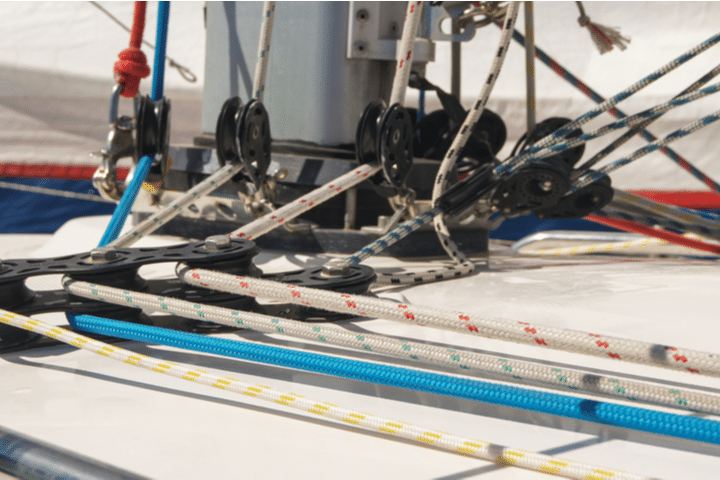
A Guide to the Different Parts of a Sailboat

Table of Contents
Last Updated on November 29, 2023 by Boatsetter Team
When you use Boatsetter, you have the opportunity to choose from a myriad of different sailboat rentals from all over the United States and beyond . A sailboat is a perfect way to relax on the water, either on a solo adventure or on an excursion with friends and family.
When you rent a sailboat with Boatsetter, you will have the option to book a captained sailboat to enjoy your day out on the water or book bareboat to hone your sailing skills. Either way, you may be interested in the intricacies of a sailboat and its different parts. If this sounds like you, you have come to the right place. In this article, we go in-depth about the different parts of a sailboat so that you can be more knowledgeable about whatever boat you may choose and come away from reading this feeling more confident about the whole sailing experience.
A basic sailboat is composed of at least 12 parts: the hull , the keel , the rudder , the mast, the mainsail, the boom, the kicking strap (boom vang), the topping lift, the jib, the spinnaker, the genoa, the backstay, and the forestay. Read all the way through for the definition of each sailboat part and to know how they work.
Explore sailboats for rent near you or wherever you want to go
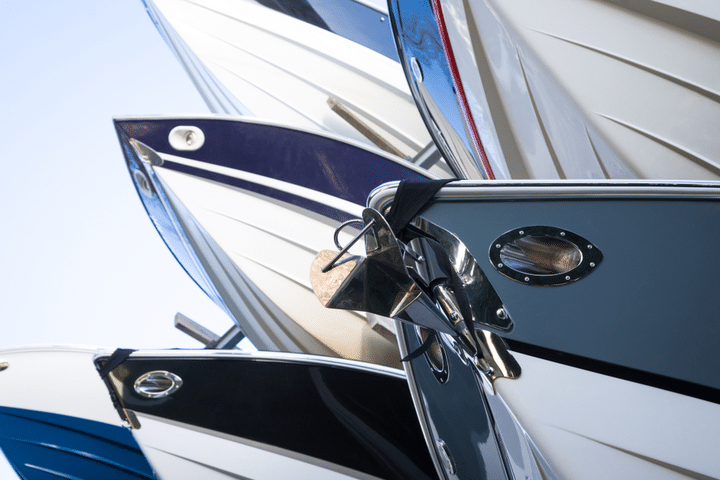
In short, the hull is the watertight body of the ship or boat. There are different types of hulls that a sailboat may have, and these different hulls will often affect the speed and stability of the boat.
Displacement Hulls
Most sailboats have displacement hulls , like round bottom hulls, which move through the water by pushing water aside and are designed to cut through the water with very little propulsion. The reason these are called displacement hulls is that if you lower the boat into the water, some of the water moves out of the way to adjust for the boat, and if you could weigh the displayed water, you would find that it equals the weight of the boat, and that weight is the boat’s displacement. One thing to know about displacement hulls is that boats with these hulls are usually limited to slower speeds.
Planing Hull
Another type of hull is a planing hull. These hulls are designed to rise and glide on top of the water when enough power is supplied. When there is not enough power behind the boat, these boats often act as displacement hulls, such as when a boat is at rest. However, they climb to the surface of the water as they begin to move faster. Unlike the round bottom displacement hulls, these planing hulls will often have flat or v-shaped bottoms. These are very common with motor-driven water vessels, such as pontoon boats, but they can also be found on smaller sailboats which allow them to glide quickly over the water.
Finally, sailboats can differ depending on the number of hulls that they have. There are three options: monohulls (one hull), catamarans (two hulls), and trimarans (three hulls).
Monohulls , which have only a single hull, will usually be the typical round bottom displacement hull or occasionally the flat bottomed or v-shaped planning hull. Catamarans have two hulls with a deck or a trampoline in between, with the extra hulls providing increased stability. Finally, trimarans have three hulls — a main hull in the middle and two side hulls used for stability. These trimarans have gained popularity because of their excellent stability and ability to go at high speeds.
When evaluating a sailboat , it is important to pay attention to the type of hull that the boat has because the type of hull a sailboat has can drastically change the sailing experience, especially when it comes to stability and speed.
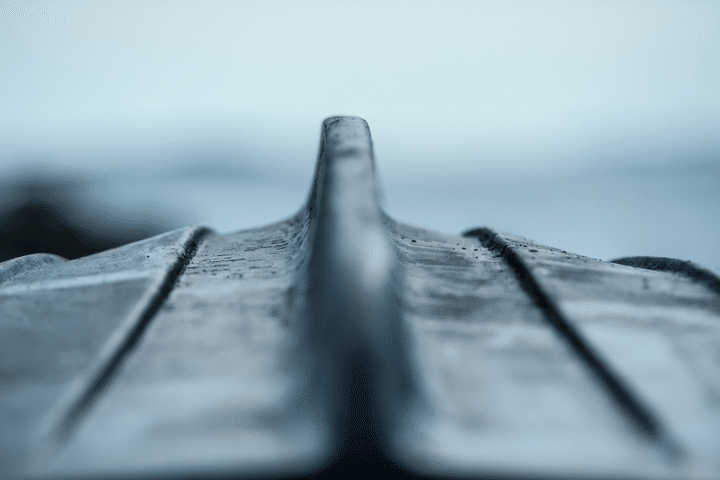
All sailboats have a keel, a flat blade sticking down into the water from the sailboat’s hull bottom. It has several functions: it provides counterbalance, life, controls sideways movement, holds the boat’s ballast , and helps prevent the boat from capsizing. When a boat leans from one side to the other, the keel and its ballast counteract the movement and prevent the boat from completely tipping over.
As with hulls, there are a number of different types of keels, though the two most common types of keels on recreational sailboats are the full keel or the fin keel. A full keel is larger than a fin keel and is much more stable. The full keel is generally half or more of the length of the sailboat. However, it is much slower than the fin keel. A fin keel, which is smaller than the full keel, offers less water resistance and therefore affords higher speeds.
A more recent feature on sailboats is the “winged keel,” which is short and shallow but carries a lot of weight in two “wings” that run sideways from the keel’s main part. Another more recent invention in sailing is the concept of the canting keels, which are designed to move the weight at the bottom of the sailboat to the upwind side. This invention allows the boat to carry more sails.
The Rudder
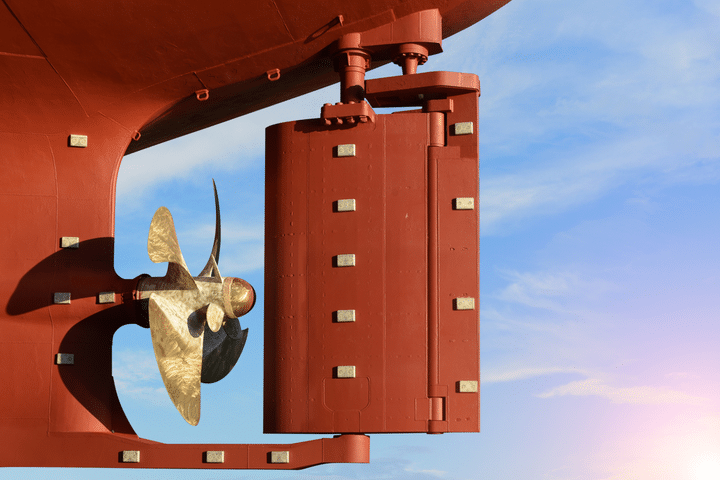
A rudder is the primary control surface used to steer a sailboat. A rudder is a vertical blade that is either attached to the flat surface of the boat’s stern (the back of the boat) or under the boat. The rudder works by deflecting water flow. When the person steering the boat turns the rudder, the water strikes it with increased force on one side and decreased force on the other, turning the boat in the direction of lower pressure.
On most smaller sailboats, the helmsman — the person steering the boat — uses a “ tiller ” to turn the rudder. The “tiller” is a stick made of wood or some type of metal attached to the top of the rudder. However, larger boats will generally use a wheel to steer the rudder since it provides greater leverage for turning the rudder, necessary for larger boats’ weight and water resistance.
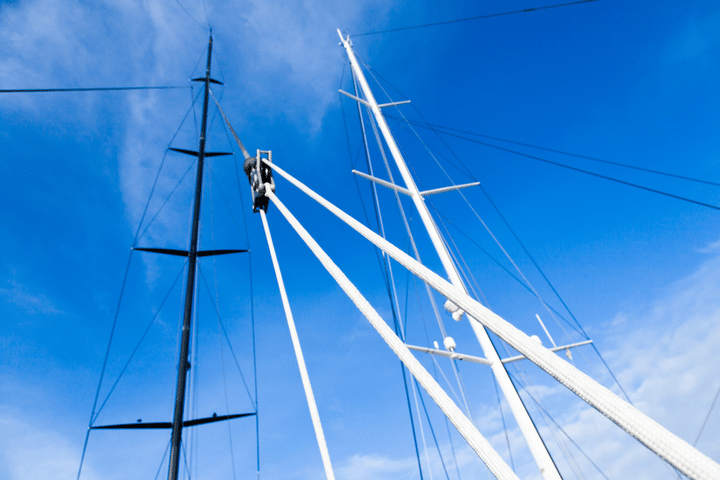
The mast of a sailboat is a tall vertical pole that supports the sails. Larger ships often have multiple masts. The different types of masts are as follows:
(1) The Foremast — This is the first mast near the bow (front) of the boat, and it is the mast that is before the mainmast.
(2) The Mainmast — This is the tallest mast, usually located near the ship’s center.
(3) The Mizzen mast — This is the third mast closest to the stern (back), immediately in the back of the mainmast. It is always shorter than the mainmast and is typically shorter than the foremast.
The Main Sail
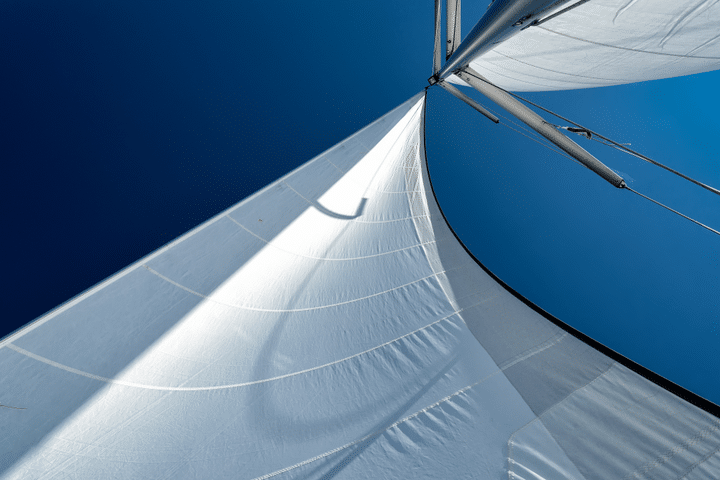
The mainsail is the principal sail on a sailboat, and it is set on the backside of the mainmast. It is the main source that propels the boat windward.
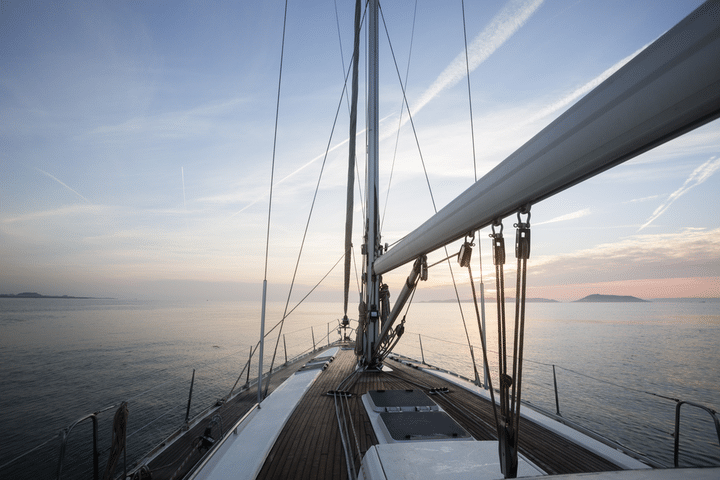
A boom is a spar (a pole made of wood or some other type of lightweight metal) along the bottom of a fore-and-aft rigged sail, which greatly improves the control of the angle and the shape of the sail, making it an indispensable tool for the navigation of the boat by controlling the sailes. The boom’s primary action is to keep the foot (bottom) of the sail flatter when the sail angle is away from the centerline of the sailboat.
The Kicking Strap (Boom Vang)
The boom vang is the line or piston system on a sailboat used to exert a downward force on the boom, enabling one to control the sail’s shape. The vang typically runs from the base of the mast to a point about a third of the way out the boom. It holds the boom down, enabling it to flatten the mainsail.
The Topping Lift
The topping lift is a line that is a part of the rigging on a sailboat, which applies an upward force on a spar (a pole) or a boom. Topping lifts are also used to hold a boom up when it’s sail is lowered. This line runs from the free end of the boom forward to the top of the mast. The line may run over a block at the top of the mast and down the deck to allow it to be adjusted.
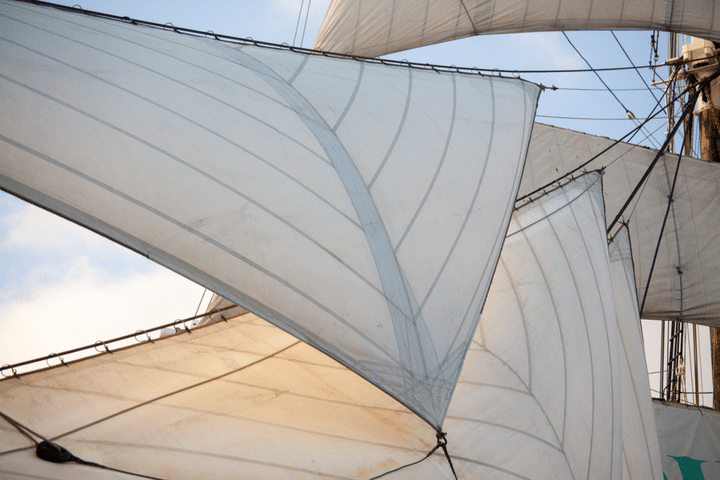
A jib is a triangular staysail set ahead of the foremost mast of a sailboat. Its tack is fixed to the bowsprit, the bow, or the deck between the bowsprit and the foremost mast. Jibs and spinnakers are the two main types of headsails on modern boats.
The Spinnaker
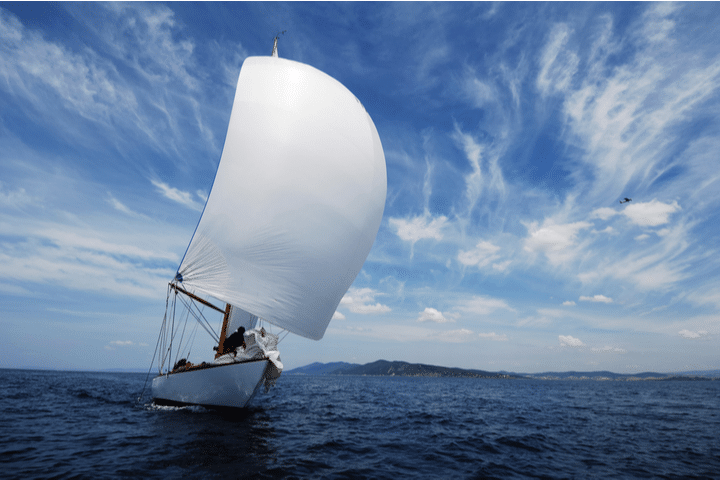
A spinnaker is a type of sail designed specifically for sailing off the wind from a reaching downwind course. The spinnaker fills up with wind and balloons out in front of the sailboat when it is deployed. This maneuver is called “flying.” The spinnaker is constructed of very lightweight material, such a nylon fabric and on many sailing vessels, it is very brightly colored.
Another name for the spinnaker is the “chute” because it often resembles a parachute, both in the material it is constructed from and its appearance when it is full of wind.
People often use the term genoa and jib as if they were the same thing, but there is a marked difference between these two types of sails. A job is no larger than a foretriangle, the triangular area formed by the mast, the deck or bowsprit, and the forestay. On the other hand, a genoa is larger than the jib, with part of the sail going past the mast and overlapping the mainsail. These two sails, however, serve very similar purposes.
The Backstay
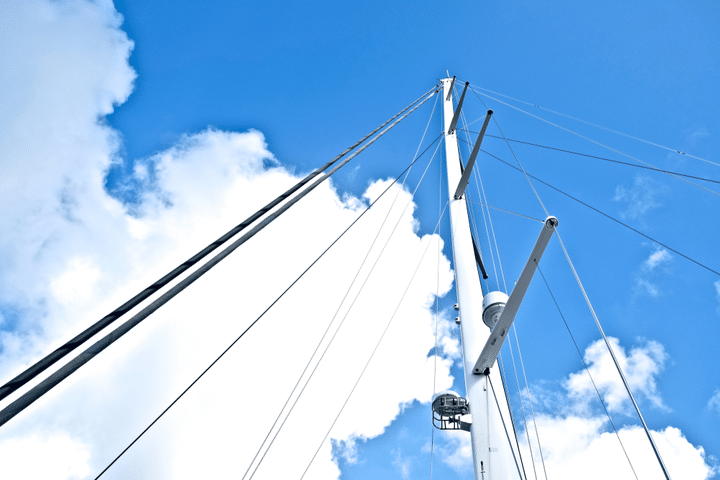
The backstay is a standing rigging that runs from the mast to the transom (the vertical section at the back of the boat), counteracting the forestay and the jib. The backstay is an important sail trip, control and directly affects the mainsail’s shape and the headsail.
There are two general categories of backstays:
1) A permanent backstay is attached to the top of the mast and may or may not be readily adjustable.
2) A running backstay is attached about two-thirds up the mast and sometimes at multiple locations along the mast. Most modern sailboats will have a permanent backstay, and some will have permanent backstays combined with a running backstay.
The Forestay
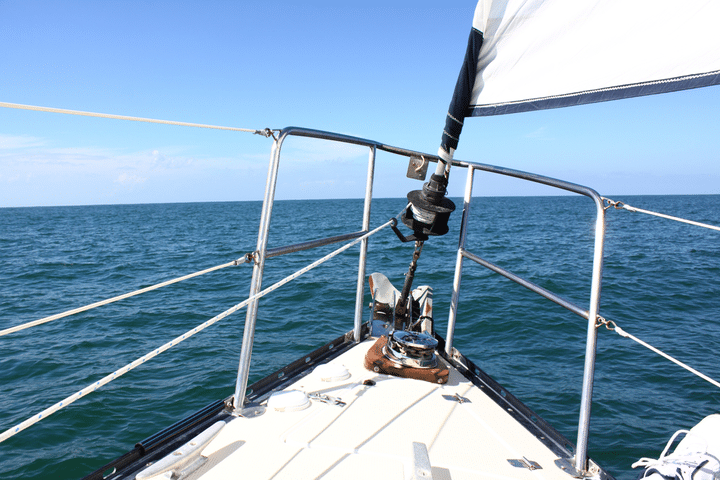
A forestay is a piece of standing rigging that keeps the mast from falling backward. It is attached at the very top of the mast, or at certain points near the top of the mast, with the other end of the forestay being attached to the bow (the front of the boat). Often a sail, such as a jib or a genoa, is attached to the forestay.
A forestay might be made from stainless steel wire, stainless steel rod or carbon rod, or galvanized wire or natural fibers.
Parts of a sail
Sails are vital for sailboats, made up of complex parts that improve performance and maneuverability. In this section, we’ll take a closer look at the different parts of that make up the sails.
Luff – The luff is a vertical sail part that maintains its shape and generates lift by interacting with the wind. It attaches securely with a bolt rope or luff tape for easy hoisting.
Leech – The leech controls air flow and reduces turbulence. Battens or leech lines are used to maintain shape and prevent fluttering.
Foot – The foot of a sail connects the luff and leech at the bottom edge. It helps define the sail’s shape and area. The outhaul is used to adjust its tension and shape.
Head – The sail’s head is where the luff and leech meet. It has a reinforced section for attaching the halyard to raise the sail.
Battens -The b attens are placed horizontally in sail pockets to maintain shape and optimize performance in varying wind conditions. They provide structural support from luff to leech.
Telltales – Sailors use telltales to adjust sail trim and ensure optimal performance.
Clew – The clew is important for shaping the sail and connecting the sheet, which regulates the angle and tension, producing energy. It’s located at the lower back corner of the sail.
Sailing is a favorite pastime for millions of Americans across the country. For some, there is nothing better than gliding across the water propelled by nothing more than the natural force of the wind alone. For both experienced and non-experienced sailors alike, Boatsetter is the perfect place to get your ideal sailboat rental from the mouthwatering Florida keys to the crystal blue waters of the Caribbean .
Smaller sailing boats are perfect for a single day out on the water, either by yourself or with friends and family. In comparison, larger sailing boats and sailing yachts can allow you days of luxury on longer excursions full of adventure and luxury.
Whatever your sailing dreams are, it is always good to know, for both the experienced sailor and the novice, all about the sailboat’s different parts. In this article, we learned all about the boat’s hull, the keel, the rudder, the mast, the mainsail, the boom, the kicking strap (boom vang), the topping lift, the jib, the spinnaker, the genoa, the backstay, and the forestay, which make up the basic parts of any sailboat you might find yourself on.
About us
Boatsetter is the go-to app for boat rentals and on-water experiences. Whatever the adventure, we’ve got a boat for that—Set sail , start the party , go yachting , make your trophy catch , and hone your watersports skills! Download the Boatsetter app ( App Store | Google Play ). Make sure to follow @boatsetter on Instagram, and tag us in all your boat day pictures for the chance to be featured.
Rent. List. Share—Only at Boatsetter

Boatsetter empowers people to explore with confidence by showing them a world of possibility on the water. Rent a boat, list your boat, or become a Boatsetter captain today.
Browse by experience

Explore articles
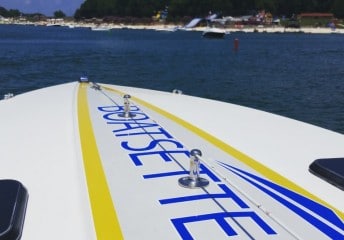
How To Have An Unforgettable Spring Break On A College Budget
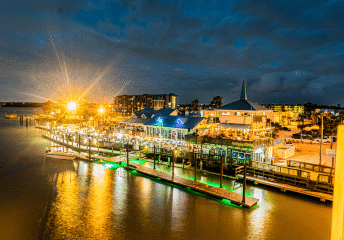
7 Best Tampa Restaurants on the Water to Get to By Boat
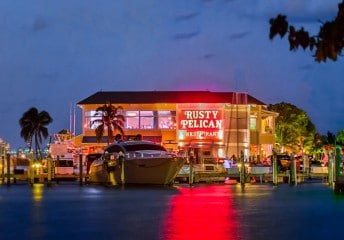
South Florida Waterfront Dining: 5 Reasons to Start Planning Your Weekend Now!
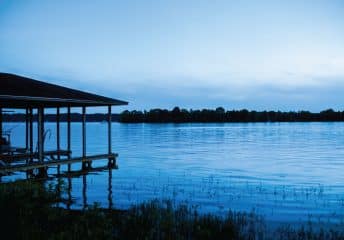
Lake Gaston Boating Guide
Parts of the Boat: A Comprehensive Guide to Understanding Every Component
by Emma Sullivan | Jul 14, 2023 | Sailboat Gear and Equipment

Short answer parts of the boat:
The main parts of a boat include the hull (the bottom part that touches water), deck (top surface), bow (front end), stern (back end), and keel (the centerline running beneath). Other essential components are the rudder, propellers, mast or sail, and various navigation equipment.
Understanding the Different Parts of a Boat: A Comprehensive Guide
Whether you’re a seasoned sailor or an aspiring boat enthusiast, having a thorough understanding of the various parts that make up a boat is essential. From the bow to the stern, every component plays a crucial role in ensuring smooth navigation and safety on the water. So, let’s embark on this comprehensive guide as we explore each part with professional finesse, witty flair, and clever explanations.
1. Bow: Ahoy! We begin our journey at the front of the ship – the bow. It’s not just a fancy term for “front” but rather an integral part designed to cut through waves effortlessly. Don’t mistake it for being all aesthetics; this sleek pointy section helps maximize speed and minimize resistance like Batman’s aerodynamic cape.
2. Hull: Ah, the hull! Think of it as the skin of your boat – protecting everything inside from those sneaky underwater critters and harsh elements. The hull also provides buoyancy and stability because nobody wants their vessel acting like a drunken sailor during rough weather conditions.
3. Deck: Picture yourself on deck, wind weaving through your hair, soaking in picturesque views – ah, pure bliss! That magical space where you chillax while catching some sun rays or shout with glee when spotting dolphins is none other than…the deck! This horizontal platform provides extra structural integrity (bonus points for double-decker boats) and more room to party like Jack Sparrow.
4. Cabin: Time to take shelter belowdeck in what sailors refer to as “the cabin.” Forget cramped quarters; this snug living space is perfect for overnight stays or hiding from blistering heatwaves (cue dramatic pirate narration). If you think boat cabins are cramped dark spaces, think again – welcome to luxurious floating hotel rooms!
5. Cockpit: No need for pilot licenses here; entering the cockpit unleashes your inner sea captain skills without a hitch. Contrary to what it sounds like, it’s not where chickens hang out but the control center of your vessel. Packed with nifty gadgets like steering wheel, throttles, and instruments that rival NASA’s spacecraft, this is where you’ll navigate your boat – without any chicken-related distractions.
6. Mast: Ahoy again! As we lift our gaze skyward, we encounter a captivating structure known as the mast. Rising majestically above the deck (and usually adorned with sails), the mast helps bring your boat to life on wind-powered adventures. It’s analogous to a wizard’s wand, channeling magical gusts to propel you on fantastical voyages across the water.
7. Keel: Wait! Before you dive into maritime jargon-induced confusion, let us explain what keels are all about. Think of them as underwater stabilizers; they prevent tipping over or sailing sideways during choppy conditions – basically acting like the rock-solid friend who keeps you grounded at parties.
8. Rudder: Steering a boat without a rudder is like trying to cross the ocean with an invisible paddle – not very effective! The rudder may seem unassuming but is vital for changing course with precision and grace. Also known as the “steering oar,” it allows you to navigate through even stormy seas with ease.
9. Buoyancy Tanks: Oh buoy! (Pun intended) These cleverly placed compartments keep your boat from taking an unintended nosedive after hitting a rogue wave or cramming too many friends aboard for that epic party weekend. They trap air inside, helping maintain optimal buoyancy lest your vessel becomes more submarine than pleasure craft!
Now that we’ve unveiled this comprehensive guide exploring various parts of a boat in professional detail – complete with wit and cleverness – you can confidently set sail on your next maritime adventure armed with knowledge befitting Captain Jack Sparrow himself. Bon voyage!
How Do the Various Parts of a Boat Work Together?
Boats have long fascinated people with their ability to traverse water, allowing us to explore new horizons and enjoy recreational activities. But have you ever wondered how all the different parts of a boat work together seamlessly? From the hull to the propeller, each component plays a vital role in ensuring smooth sailing. So let’s dive into the nautical world and unravel the intricate web of boat anatomy.
First and foremost, we have to give credit where it’s due – to the unsung hero of any vessel – the hull. Acting as both an outer shell and a structural foundation, it not only keeps us afloat but also provides stability and buoyancy. Crafted from various materials like fiberglass or aluminum, this sturdy frame resists water pressure while gliding smoothly through waves, making sure our on-board experience remains stable and enjoyable.
Now that we’re comfortably positioned within this floating fortress, let’s take a closer look at how propulsion is achieved – enter stage right: The engine room! It houses those mighty mechanical beings known as marine engines. These powerhouses are responsible for transforming stored energy into motion by burning fuel (usually gasoline or diesel) in cylinders that move pistons up and down.
As these pistons swivel away with coordinated precision inside their chambers, they generate linear energy that ultimately drives the crankshaft – all thanks to combustion wizardry! This rotational force is then transmitted through various gears within the transmission system, which transfers it to our beloved propeller. And just like that, we’ve unlocked Mother Nature’s pragmatic lottery ticket for movement in water!
Ah yes, our shining star: The Propeller! This wonderous contraption features rotating blades specifically designed to push or pull water backward with exceptional force known as thrust. Channeling Newton’s third law (every action has an equal and opposite reaction), this generated thrust propels our vessel forward against resistance provided by the surrounding liquid. It’s like nature’s very own revving racecar, but on water!
But how do we steer this magnificent machine? The humble tiller or steering wheel is our trusty companion in navigating the seas. Connected to the rudder – located beneath the transom at the stern of the boat – it allows us to control the direction of travel. By turning left or right using either a mechanical linkage or hydraulic mechanism, we can gracefully maneuver through even the choppiest waters.
Safety should always anchor our adventures on water, which is why every vessel boasts an array of auxiliary systems aimed at keeping us secure and comfortable onboard. From bilge pumps that expel unwanted water from the hull, preventing flooding, to electrical circuits for lighting and navigation instruments, these critical components ensure a smooth sailing experience while adapting to various environmental conditions.
Now that we’ve explored some key elements intertwining perfectly in harmony aboard a boat let’s not forget about teamwork – that invisible sailor who orchestrates all these intricate operations: The skipper! With their knowledge and expertise handling both navigation and emergency situations, they’re like conductors overseeing this symphony of interconnected components ensuring our safety and enjoyment on water.
So next time you board a boat, take a moment to appreciate how each part seamlessly collaborates with its neighbors. From hull to engine room, propeller to steering system, they work together like talented dancers performing an artful piece – expressing not just function and utility but also undeniable elegance. May your nautical journey be one filled with wonder and admiration for these remarkable achievements of human ingenuity!
Step-by-Step: Exploring the Essential Parts of a Boat
Title: Step-by-Step: Delving into the Essential Parts of a Boat
Introduction: Smoothly gliding across the water, a boat exemplifies both adventure and relaxation. However, have you ever wondered about the intricate machinery that propels these floating marvels? In this article, we will embark on an exploration of the essential parts that make up a boat’s anatomy, unraveling the magic behind their functionality and unveiling how they come together to create a seamless boating experience.
1. Hull – The Backbone of Stability: Let us begin with the hull, which serves as the foundation for any boat. This vital component provides buoyancy and structural integrity to ensure stability on water. Crafted from various materials such as fiberglass or aluminum, each hull design caters to specific needs – whether it be speed or leisurely cruising.
2. Propulsion Systems – Powering Your Journey: Next, let’s delve into the propulsion systems responsible for thrusting boats forward. Depending on your vessel type and preference, power can come from either outboard motors or inboard engines neatly tucked within the stern. Each system has its advantages; outboards are versatile with easy maintenance access while inboards offer better weight distribution for stability.
3. Steering Mechanisms – Navigating Your Course: While a boat may possess incredible power, it means little without proper steering mechanisms guiding its path through waterways. Traditional vessels often employ mechanical or hydraulic systems connected to a rudder at the stern to control direction effectively. However, modern boats utilize electric steering technologies for easy maneuverability and enhanced precision.
4. Electrical Systems – Illuminating Possibilities: Boats are not just meant for daytime adventures; preparing for nighttime escapades is equally crucial! This brings us to electrical systems installed onboard. Lighting fixtures keep paths illuminated after dark while allowing visibility within cabins and workspaces. Furthermore, electrical systems power navigation equipment such as GPS units and communication devices that always keep you connected.
5. Navigation Equipment – Finding Your Way: For any aspiring mariner, the ability to navigate with precision is paramount. Advanced navigation equipment such as chartplotters and radar systems are essential tools in redefining your seafaring experience. These marvels of technology provide accurate positioning, illustrating charts and helping avoid hazards for a safe voyage.
6. Safety Equipment – Preparing for the Unexpected: While a boat offers pure enjoyment, it is crucial to prioritize safety above all else. Equip your vessel with various safety features like life jackets, fire extinguishers, distress signals, and first aid kits – these essentials ensure peace of mind during any excursion.
Conclusion: Exploring the intricate parts of a boat serves as an ode to its engineering genius. From the steadfast hull to powerful propulsion systems, precise steering mechanisms, electrical components, essential navigation equipment, and invaluable safety gear – every bit contributes to shaping your boating experience. So next time you set sail on shimmering waters or admire boats from afar, take a moment to appreciate their underlying craftsmanship that makes aquatic adventures so memorable!
Frequently Asked Questions about the Different Parts of a Boat
Title: Navigating the Seas of Boating: A Comprehensive Guide to Frequently Asked Questions about Different Parts of a Boat
Introduction: Ahoy there, fellow boating enthusiasts! As you embark on your journey through the vast sea of knowledge about boats, it’s essential to acquaint yourself with the different parts that make up these magnificent vessels. This guide aims to steer you in the right direction by answering some frequently asked questions regarding boat components. From stern to bow and everything in between, we’ll explore the intricacies of various boat parts with a touch of professionalism and sprinkle of wit.
1. What is a Hull, and why is it important? At the heart and core of every boat lies its hull. Comparable to a sturdy exoskeleton, the hull provides buoyancy while protecting against water intrusion. Designed meticulously to glide smoothly through waves, this critical part enhances stability and ensures your vessel remains seaworthy. Picture it as an armor that allows your boat to navigate even the roughest waters—truly a force to be reckoned with!
2. How do Outboard Motors work? Think of outboard motors as adrenaline-inducing rockets strapped onto your boat’s transom – they provide power and propel you forward! Combining an engine, gearbox, propeller driveshaft, and steering system into one compact package, outboard motors offer tremendous versatility while being easily removable for maintenance or transport purposes. These mechanical marvels allow us to conquer both calm rivers and wild horizons!
3. Understanding Propellers: Power Behind Every Turn If boats were magical creatures like unicorns (bear with us), their propellers would be their horns – graceful yet instrumental in maneuvering through water currents! Shaped like twisted wings or corkscrews attached at the rear end (stern) underwater, propellers generate thrust by spinning rapidly inside submerged driveshafts connected to engines or electric motors. They are true superheroes responsible for turning every boat trip into an adventure!
4. The Deck: Where the Action Unfolds Imagine a boat as a magnificent stage, with the deck being its grand performance area. This expansive platform offers space to walk, sit, socialize, or dance while serving important functions like distributing weight evenly and providing stability. It is here where you’ll find cabins, seating areas, control consoles, hatches leading to storage areas below deck – essentially everything needed to keep your nautical experience elegant and enjoyable.
5. Let’s Talk Rigging: Sailing Simplicity Explained Rigging is the intricate system of ropes (or lines) and fittings used to control sails on sailboats. These ropes connect masts, booms (horizontal poles), and other related parts to harness the wind’s power effectively. Each line has a specific name and purpose – halyards hoist up sails; sheets adjust their angle; and downhauls control tension – all working together in harmony like an invisible crew choreographing synchronized sailing symphonies.
6. Anchors Away! Understanding Anchor Systems: Anchors are more than just heavy metal objects dropped into the water; they symbolize security amidst adventurous sailing escapades. Equipped with sharp flukes that latch onto seabeds for grip, these metallic guardians prevent boats from drifting away freely when it’s time for a temporary stop or overnight sleepovers at sea. Different anchor types serve diverse purposes ranging from sandy bottoms to rocky terrains—always ensuring safe moorings wherever you choose to drop your musical anchor!
Now that we’ve sailed through these frequently asked questions about various boat parts, breeze through your boating conversations with confidence! From understanding the hull’s significance to appreciating the underlying magic of propellers’ thrust generation – consider yourself equipped with knowledge as vast as the ocean itself.
Bon voyage on your future boating endeavors filled with smooth waters and exciting adventures!
A Closer Look at the Must-Know Parts of a Boat
Setting sail on a boat can be an exhilarating experience, whether you’re a seasoned sailor or someone new to the world of boating. While many people may admire boats from afar, not everyone is familiar with the intricate parts that make up these vessels. In this blog, we will delve into the must-know parts of a boat, uncovering their functionality and significance in ensuring smooth sailing.
1. Hull: The Backbone of the Boat Starting from the bottom up, let’s first explore the hull – arguably the most crucial part of any boat. The hull is essentially the main body or backbone of the vessel that provides buoyancy and stability in water. Typically made from fiberglass, wood, metal or even inflatable materials, hulls come in various shapes and sizes based on their specific purpose – be it cruising, fishing or racing. An understanding of different hull designs can greatly influence your choice when it comes to buying or renting a boat.
2. Bow and Stern: Leading and Trailing Ends Moving further along our exploration of boat parts, let’s examine two vital (yet often misunderstood) sections – the bow and stern. The bow refers to the front end or forward part of the boat, while the stern denotes its rear or aft section. But these terms go beyond mere nautical jargon; they serve essential functions as well: steering control systems are typically located at one end (often at the stern), while important navigation lights are usually found on both ends for increased visibility during nighttime voyages.
3. Deck: A Platform for Various Activities Up next is an area where boaters spend most of their time – yes, we’re talking about decks! Decks are not just flat surfaces; they play integral roles in ensuring safety and efficient movement onboard. They act as platforms for fishing activities, sunbathing spots for leisure seekers or even provide storage space for additional equipment. Understanding the importance of deck layouts, materials (such as non-slip coatings), and proper maintenance can greatly enhance your overall boating experience.
4. Cockpit: Where the Captain Takes Charge Venturing deeper into the boat’s structure, we find ourselves in the cockpit – also known as the helm or control station. Acting as the nerve center of the vessel, this is where the captain takes charge, steering and controlling various aspects of navigation. Here you’ll find a myriad of important components such as navigational instruments, gauges, throttle controls, and steering wheels. Gaining familiarity with these essential features will allow you to confidently take control of your own boating adventures.
5. Engine: The Powerhouse that Drives It All Lastly, we cannot forget one vital part that propels any boat forward – its engine! Without an engine, our beautiful boats would be nothing more than floating vessels aimlessly drifting across waters. Engines vary in size and power depending on boat type and purpose – from small outboard motors to large inboard engines. Familiarizing yourself with basic engine operations can come in handy for minor maintenance tasks or troubleshooting issues while out at sea.
In conclusion, exploring the must-know parts of a boat grants us not only valuable knowledge but also a better appreciation for these magnificent vehicles that have carried seafarers through centuries of nautical adventures. By understanding how each part contributes to safe and enjoyable voyages, you’ll embark on your boating journeys with confidence and an elevated sense of admiration for these marvelous creations.
Mastering the Anatomy: Unraveling the Mystery behind Boat Components
Whether you’re a seasoned sailor or a budding boating enthusiast, understanding the various components that make up your boat is crucial. Mastering the anatomy of your vessel not only enhances your overall boating experience but also ensures safety and proper maintenance. So, let’s embark on a journey together as we unravel the mystery behind boat components.
1. Hull: The Backbone of Your Boat The hull forms the foundation of any watercraft. Generally made of fiberglass, aluminum, or wood, it provides buoyancy and structural integrity. Its design – whether planing (flat bottom) or displacement (V-shaped) – dictates how the boat moves through water. Remember to regularly inspect and maintain your hull to prevent any potential issues.
2. Deck: A Haven Above Water The deck is where you spend most of your time onboard – sunbathing, fishing, or simply enjoying the scenery. Made from non-skid materials like gelcoat or teakwood, it offers traction while walking around and serves as a protective shell for compartments below deck.
3. Transom: Gateway to Adventure Situated at the back of the boat, the transom acts as both a mounting point for an outboard engine and as a barrier against water intrusion. It needs to be sturdy enough to handle mechanical stress while providing support for propellers and swim platforms.
4. Motor: The Heartbeat of Your Vessel An essential component responsible for powering your boat forward is its motor – typically either an inboard or outboard engine. Inboards are fixed within the hull, offering greater control and durability but often necessitate more maintenance compared to their outboard counterparts mounted externally.
5. Propeller: Converting Power into Thrust Fitted onto the motor’s driveshaft, propellers transform rotational energy into forward momentum by creating thrust using specially designed blades. Proper selection based on factors like boat size and desired performance is vital for optimal efficiency.
6. Steering System: Directing Your Path Controlling the direction of your boat is made possible by the steering system, which varies based on boat type. Traditional cable and pulley systems allow manual control, while more advanced vessels may feature hydraulic or electronic systems for smoother responsiveness.
7. Bilge Pump: Keeping Your Boat Afloat Boats aren’t entirely waterproof, and water inevitably finds its way in. Enter the bilge pump – a mechanical device designed to remove excess water from the bilge (lower part of boat interior). Regular inspection and maintenance of your bilge pump ensures it operates smoothly when needed.
8. Navigation Lights: Guiding Your Way When sailing during darker hours or reduced visibility conditions, navigation lights become vital aids for both your safety and that of other vessels nearby. These lights indicate your vessel’s position, direction, and status to ensure effective communication at sea.
9. Electrical Systems: Powering Onboard Convenience Modern boats often feature electrical components such as lighting fixtures, navigational equipment, radios, sound systems, and other amenities that require power sources like batteries or generators. Understanding their functions aids in preventing electrical failures and maintaining efficiency.
10. Safety Equipment: The Lifesavers Never forget to equip your boat with essential safety gear like life jackets (one for each person onboard), flares, fire extinguishers, first-aid kits, distress signals, and an anchor in case of emergencies. Being prepared can make a crucial difference on the water.
Mastering the anatomy of your boat goes beyond just recognizing individual components; it involves understanding their interplay to ensure seamless operation and a pleasurable boating experience overall. So dive deeper into this oceanic world by exploring different resources available – you’ll unlock a wealth of knowledge waiting to be discovered!
Recent Posts

- Sailboat Gear and Equipment
- Sailboat Lifestyle
- Sailboat Maintenance
- Sailboat Racing
- Sailboat Tips and Tricks
- Sailboat Types
- Sailing Adventures
- Sailing Destinations
- Sailing Safety
- Sailing Techniques
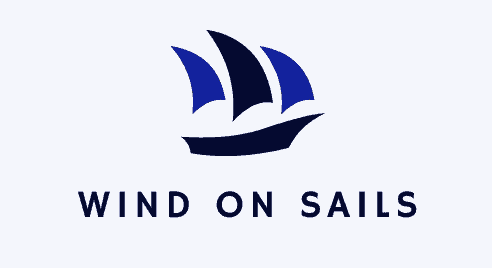
Understanding the Parts of a Sailboat: A Comprehensive Guide to Sailboat Anatomy in 2023
- June 10, 2023

Sailboats are fascinating vessels that rely on the power of the wind to navigate the open waters. Understanding the parts of a sailboat are essential whether you’re a seasoned sailor or someone who’s just getting started. In this comprehensive guide, we will delve into the anatomy of a sailboat, exploring each component and its role in harnessing the wind and propelling your vessel forward. So, grab your sailing hat and let’s embark on this educational journey!
Table of Contents
Hull and keel.
The hull forms the main body of the sailboat and provides buoyancy and stability. It keeps the boat afloat and acts as a protective shell. Typically constructed from materials like fiberglass, wood, or metal, the hull’s shape and design impact the boat’s performance and seaworthiness.
Located beneath the hull, the keel is a weighted fin or centreboard that provides stability and prevents sideways drift. It counterbalances the force of the wind on the sails, helping to maintain the sailboat’s upright position and minimizing the risk of capsizing. Check out this article for further information.
The rudder is a vertically mounted flat plate or fin located at the stern (rear) of the sailboat. It is responsible for steering the boat by controlling the flow of water passing by it. Connected to the helm or tiller, the rudder allows the sailor to change the boat’s direction and navigate through the water.
Motor and Propeller
Some sailboats are equipped with an auxiliary motor for manoeuvring in tight spaces or when there is no wind. The motor propeller helps propel the boat when the sails alone are insufficient.
Deck and Cockpit
Positioned on top of the hull, the deck is a flat surface that serves as a platform for crew members to move around. It also houses various fittings and equipment.
Found in the rear portion of the deck, the cockpit is the area where the helmsman or skipper steers the sailboat. It is typically equipped with the helm, tiller, or steering wheel, as well as necessary instruments and controls.
Winches are mechanical devices used to handle and control the tension of the lines on a sailboat. They consist of a drum and a crank handle. By turning the handle, sailors can increase or decrease the tension of the lines, allowing for efficient control of the sails and the various rigging elements.
Cleats are fittings found on the deck used to secure lines and ropes. They provide a means of temporarily holding the lines in place, allowing sailors to free up their hands and focus on other tasks. Cleats come in various shapes and sizes and are essential for maintaining control and stability while sailing.
Anchor and Windlass
The anchor and windlass are essential for mooring the sailboat. The anchor secures the boat in place, while the windlass is a mechanical device used to raise and lower the anchor efficiently.
Mast, Boom, and Rigging
The mast is a tall, vertical spar located on the deck, extending upward. It provides support for the sails and enables their efficient capture of wind. Typically made of aluminium or carbon fibre, the mast plays a vital role in the boat’s stability and performance.
Connected to the mast, the boom is a horizontal spar that holds the lower edge of the mainsail. It allows for control over the sail’s position and shape, influencing the boat’s speed and maneuverability. The boom is pivotal in adjusting the angle and tension of the mainsail.
The rigging refers to the network of cables, wires, and lines that support and control the sails. This includes components such as shrouds, forestays, backstays, and halyards. Rigging plays a crucial role in maintaining the mast’s stability, tensioning the sails, and controlling their position.
Sails and Related Components
The mainsail is the largest sail on a sailboat, positioned on the mast and boom. It captures the wind’s power and generates forward propulsion. Adjusting the mainsail’s angle and tension influences the boat’s performance.
Jib and Genoa
The jib and genoa are smaller headsails located at the bow or front of the boat. They work in conjunction with the mainsail to optimize sail area and enhance manoeuvrability.
The spinnaker is a larger, lightweight sail used for downwind sailing. It is typically deployed when the wind is coming from behind the boat.
The berths are sleeping quarters on a sailboat. These are designated areas, often equipped with cushions or mattresses, where crew members can rest during extended voyages. Berths come in various sizes and configurations, ranging from single to double or bunk beds.
The head refers to the sailboat’s bathroom facilities. It typically includes a toilet, sink, and sometimes a shower. On smaller sailboats, the head may be compact and shared, while larger vessels may have multiple heads for increased convenience.
The galley is the sailboat’s kitchen area. It usually includes a stove, sink, and storage space for food and cooking utensils. Some sailboats may also feature a refrigerator or icebox for preserving perishable items during longer journeys.
The saloon is the main living area of the sailboat. It often serves as a multipurpose space, combining seating, dining, and socializing. The saloon may feature a table, seating benches or settees, and storage compartments for personal belongings.
Navigation Station
The navigation station is a dedicated area on the sailboat where navigational equipment, such as charts, compasses, and GPS systems, are kept. It serves as a central hub for planning routes, monitoring the boat’s position, and communicating with other vessels or shore stations.
Understanding the different parts of a sailboat is fundamental to becoming a proficient sailor. By familiarizing yourself with the anatomy of your vessel, you gain the knowledge and confidence to navigate the open waters with skill and precision. From the hull and deck to the mast, sails, and rigging, each component plays a crucial role in harnessing the wind’s power and propelling your sailboat on unforgettable adventures. So, keep learning, keep exploring, and may fair winds always fill your sails!
Related Posts

Exploring the Different Types of Sailboats and Their Versatile Uses
- May 20, 2023
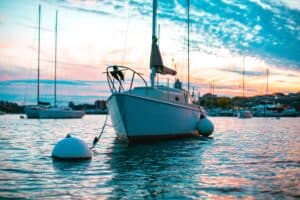
Keelboat Sailing 101: A Beginner’s Guide to Navigating the Seas with Stability
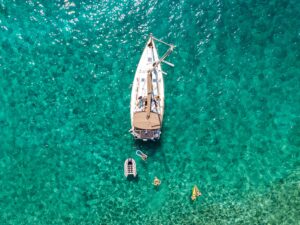
Yacht Sailing 101: A Beginner’s Guide to Embarking on Luxurious Adventures

My Cruiser Life Magazine
Illustrated Guide to Sailboat Parts [Updated 2023]
The lingo of sailing is baffling to many newcomers. While the actual sailing is pretty easy, it’s hard to wrap your mind around the bookwork when it seems like every little thing on a boat goes by its own nautical term.
Here are a few names for parts of a sailboat that you might not have thought about before. For even more nautical word play, check out our complete guide to sailing terms .

Parts of Sailboat Hulls
The boat’s hull is its main body. Most are made of fiberglass, but there are a few aluminum sailboat models out there too. Wood is more traditional but more difficult to maintain than these modern alternatives. Sailboat hulls are displacement hulls, which means they sit low in the water and move relatively slowly. The hull’s job is to displace water, so you stay afloat!
Bow The forward “pointy end” of the boat.
Stern The rear end of the boat.
Transom If the stern of a boat has a flat section, it is called the transom. (I wrote about it in detail here: What Is the Transom on a Boat )
Canoe Stern or Double-Ender Some boats lack a transom; instead, their stern comes to a point like a bow. This is a “double ender” or a canoe stern.
Port and Starboard Sides Port is the left side, and starboard is the right side.
Freeboard This is the height of the sides of the boat above the water.
Deck The upper portion of the boat that you walk on.
Sheer Sheer is the curve of the deck when viewed from the side. Some boats have none, and some boats have a lot.
Cabin Coach Roof Most sailboats have a raised coach roof on top of the cabin area.
Bottom of a Sailboat – Keels and Things
There are tons of parts on a sailboat that you only ever see if it’s out of the water. Boats are hauled out at boatyards by giant cranes, or a special machine called a travel lift .
Keel The boat’s keel is the underwater feature that counters the effects of wind pressure on the sails. It keeps the boat from tipping over, but it also keeps the boat going in a straight line as it moves through the water. If a boat has no keel, the wind will push it downwind.
A keel is heavy–it is weighted with thousands of pounds of ballast (usually lead). So when someone refers to a “keelboat,” they mean that it is a big boat with a weighted keel built for cruising. The built-in weight of a keel keeps the boat from capsizing. Also, the water flow over the curved surface of the keel helps the boat sail into the wind.
Smaller boats with centerboards or daggerboards are on the opposite end of the spectrum from keelboats. These aren’t weighted and could tip over (capsize) in the wrong conditions.
Types of Keels
Full Keel A classic and time-tested design, full keel boats are favorites among passage-making and ocean-crossing cruisers. They’re stable and comfortable at sea and very safe. However, they have a reputation for being slow compared to more modern designs.
Modified Full Keel The modification is a cut-away forefoot. That means it looks like a full keel, but there isn’t as much keel up near the bow. This reduces the underwater “wetted surface area” and makes the design a little bit faster while preserving the other good things about full keel designs.
Fin Keel The fin keel looks like a shark’s fin pointed downward. Some are narrow and very deep, while others are longer and shallow. Fin keels are bolted to the bottom of an otherwise flat-looking hull design. The fin has a foil shape that creates a lifting force as water flows over it. In addition to its ballasted weight, this opposes the sails and leeway. Most modern sailboats have some version of a fin keel.
Bulb Keel The ballast should be placed as low as possible to lower the boat’s center of gravity. The bulb keel is a fin keel with a lead bulb added to the bottom. The bulb has an efficient shape, making it more efficient than just the fin alone.
Wing Keel Like a bulb, a wing keel works by adding more weight and hydrodynamic force to the bottom of the keel. As a result, the wings look like a little airplane mounted on the bottom of a fin keel.
Swing Keel A swing keel is a fin that pivots up and into the boat, meaning that you can have a very shallow draft when you are docking or anchoring but also a very deep draft when you are sailing in open waters. This heavy keel requires a powerful and complicated electric or hydraulic-electric system.
Lifting Keel A lifting keel is similar to a swing keel, only the keel lifts up into the hull vertically.
Bilge Keels A bilge keel boat has two fin keels mounted at 45-degree angles below the hull. The advantage is that the boat can “dry out.” This makes them very popular in harbors around England, where the massive tidal range means that the harbor is only mud for half the day.
Centerboard Centerboards look like swing keels, but the “keel” part is just a board. It isn’t weighted with lead or iron, so it doesn’t change the ballast of the boat any. They are often found on smaller sailboats like sailing dinghies, but there are also large cruising boats that have full keels or long-fin keels with centerboards, too.
Daggerboard A daggerboard is like a centerboard, only it doesn’t swing. Instead, it goes straight up and down like a dagger into its sheath. They’re not only common on very small sailing dinghies but also large cruising catamarans.
Canting Keel Canting keels are some of the latest technology items in racing, so they aren’t found on cruising boats yet. They move from side to side, allowing the crew to precisely control the forces made by the keel.
Types of Rudders – What Steers a Sailboat
As with keels, you’ll see various types of rudders on sailboats. The rudder is one of the most critical parts of a sailboat’s equipment, so the differences in rudders are mostly about how protected it is from damage.
Rudder The rudder is the thing that steers the sailboat. It’s mounted on the back of the boat, sometimes looking a bit like a second keel. When the operator turns the steering wheel or tiller, it moves the rudder one way or the other. That, in turn, turns the yacht’s bow left or right.
Transom-Hung Rudder The most basic type of rudder is hung on the transom. It’s usually controlled with a tiller instead of a wheel. You can see a transom-hung rudder above the water.
Keel-Mounted Rudder On a full keel boat, the rudder will be mounted on the back edge of the keel. This protects it completely from damage since anything the boat might hit will hit the keel first.
Skeg-Mounted Rudder The rudder might be mounted to a skeg if a boat has a fin keel. A skeg is a small fixed surface that holds the rudder and supports it. In the case of a full skeg, it also protects the rudder as a full keel would.
Spade Rudder Spade rudders have no skeg, so the entire underwater surface moves when you turn the wheel. Most modern yachts have spade rudders because they are incredibly effective. They are easily damaged, however, which is why some offshore sailors still prefer skeg-hung rudders.
Bottom of Sail Boat – Running Gear
Running gear is the generic name given to all equipment under the boat that connects to the engine and moves the boat under power. It consists of the propeller, prop shaft, and supports.
Propeller Also called the prop or screw, the prop is what converts the engine power into thrust. The water flow over its blades creates a pushing force that moves the boat. Since the sailboat doesn’t use the propeller when it is sailing, sailboats often have folding or feathering props that stop moving.
Prop Shaft The metal shaft that connects the engine to the propeller is called the prop shaft.
Cutlass Bearing Where the prop shaft exits the hull, a rubber cutlass bearing keeps it centered and rotating freely.
Saildrive A saildrive is a common arrangement on modern sailboats that uses a vertical drive leg with the propeller. The saildrive installs on the back of the engine and includes the transmission. It’s like the lower unit of an outboard motor, but you cannot raise it out of the water.
Up Top – Types of Sailboat Designs
Aft Cockpit The “classic” design of the modern sailboat, if there is such a thing, is called the aft cockpit. This layout has the cockpit in the rear-most section of the hull, behind the cabin.
Center Cockpit The center cockpit sailboat has the cockpit closer to the mast. That leaves a lot of space in the rear of the hull for a huge stateroom. This design means that the cockpit will be closer to the boat’s center, making handling easier. But it is also higher, making more windage and motion at sea.
Pilot House A pilot house sailboat has a second helm inside a protected area. These are popular in colder climates, where the pilot house provides a warm place to steer the boat from. The rear cockpit is usually smaller than a typical aft cockpit, but it’s still where the sail handling occurs. A pilot house has a raised level, so the salon typically surrounds the interior helm to utilize that space and visibility when not underway.
Deck Salon Like a pilot house, a deck salon has big windows and better visibility than a typical sailboat cabin. But it lacks a true interior helm. Many, however, have nav stations with forward visibility and autopilot controls, making it a comfortable place to sit and keep watch during a passage.
Flush Deck Most sailboats have a raised coach roof where the interior cabin is. But some designers make their decks flush with the sides of the boat, making a wide open deck that is easy to move around on.
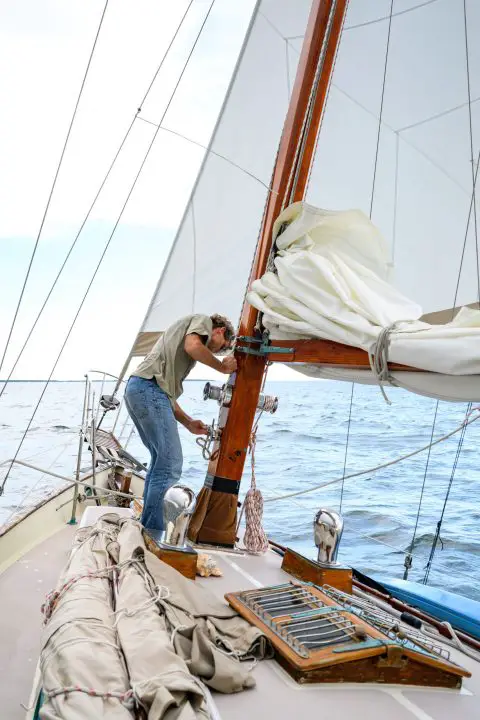
On Deck Sailboat Components – Sailboat Front
The deck of a sailboat is all about safety at sea. Most modern cruising boats are rigged such that there are few things you might need to go “out on deck” or “go forward” for. Instead, these things are rigged back to the cockpit, so you can stay safe and dry while doing your thing.
Since the wet pitching deck of a sailboat at sea is tricky, many of the things you’ll find there are safety-related.
Handholds Places to grab should be located all over the boat, so there’s never a risk of not having something to hold onto to stabilize yourself.
Lifelines Lifelines run the perimeter of the boat and provide a last-ditch safety device. You can grab them, and they should be high enough that they’ll keep you from going overboard.
Stantions The stands that lifelines attach to.
Bow Pulpit The solid rail around the front of the boat provides a safe handhold and a starting point for the lifelines.
Stern Pushpit The same, but on the stern of the boat.
Bulwarks The raised edges of the deck on the sides so that you can’t slip overboard on accident.
No-Skid Decks In areas where people will be walking, the deck is treated with a special product to make the deck “no-skid.” That way, it isn’t slippery, even when wet.
Harness Sailing harnesses are designed to clip onto the boat and keep a sailor onboard even if the boat takes a huge wave or the sailor slips. The harness is the staple of offshore safety.
Jack Lines Jack lines are temporary lines secured on the deck where sailors can attach their harnesses.
Safety Rails Many boats also have extra rails and handholds located in spots where sailors might work on deck, like around the base of the mast.
At the bow of the sailboat, you’ll find her ground tackle.
Bowsprit The bowsprit is the spar that extends from the deck forward of the bow. They’re used on sailboats to gain more sail area since getting the sail farther forward means you can fit a bigger sail. Some have just a spar, while others have a bow platform that is part of the deck.
Ground Tackle The generic word for the anchor, chain, and all the equipment needed to use it.
Anchor The anchor is “the hook” that digs into the seabed and keeps the boat in the same place. Anchors are safety devices since they allow you to stop in shallow water. But they also provide access to areas with no marinas since you can anchor offshore and go in on your dinghy.
Windlass A winch that pulls up the anchor and chain. They can be manual, with a handle, or electric, with a button.
Anchor Rode The generic name for the anchor line. It can be a chain or rope.
Snubber A short length of rope that attaches to the chain to secure it to the boat.
Cleat A horn-shaped piece of deck hardware used to secure a line or rope.
Dorade A large vent opening on the deck of a boat which is designed to let air in but not water.
Hatch Hatches are upward-facing windows that you can open to increase ventilation in the cabin.
Locker A generic term for a cabinet or compartment on a boat.
Going Aloft – Basic Boat Parts of a Sailing Rig
The rig of a boat is the mast and all of its associated parts. If you’re wondering about the many different kinds of rigs that are out there, check out our rundown on sailing terms . There you’ll find definitions for boats with just one mast or multiple masts, like sloop rig and what a boat with two sails in front might be called. It’s a cutter, if you’re wondering.
Spar A generic name for a mast, boom, or any other long pole used to hold a sail. It can be wood or metal or vertical or horizontal.
Mast A vertical spar upon which a sail is hoisted.
Boom A horizontal pole that holds a sail and gives it shape.
Standing Rigging The wires or rope that holds the mast upright.
Stay Standing rigging that goes fore to aft. The head stay runs from the masthead to the bow, and the backstay runs from the masthead to the stern.
Shroud Standing rigging that goes to the sides of the boat. From the masthead to each side runs a cap shroud. Some masts also have intermediate and lower shrouds.
Running Rigging All lines that are used for sail handling are called running rigging.
Halyard A halyard hoists a sail to the top. Each halyard is named for the sail it hoists, i.e., main halyard, jib halyard, spinnaker halyard.
Sheet The sheet controls the sail. If you ease the sheet, the sail is loosened. If you winch the sheet in, it is tightened. Like all running rigging, each sheet is named for the sail it controls, i.e., main sheet, jib sheet, etc.
Traveler If a sail has a boom, the traveler can be used to adjust it from side to side. The sheet is attached to the traveler. Most main sail travelers are located near or in the cockpit.
Gooseneck Fitting The articulating attachment that holds a boom on a mast.
Topping Lift A line that holds the rear end of a boom up. It runs from the masthead to the boom.
Vang A control line pulls the boom down and puts pressure on the sail to keep it flatter. Large boats may have hydraulic or solid vangs.
Blocks The rest of the world would call this a pulley, but sailors call it a block.
Fairleads Deck organizers that keep the lines tidy and running in the direction they should go on deck.
Furler Wraps the sail around the stay so that it doesn’t not have to be raised and lowered each time. Instead, you pull on the sheet and the sail unrolls or “unfurls.”
On Deck – Back of Sailboat
On most boats, the cockpit is located at the back.
Cockpit The main operations center and party central on a sailboat. This is where the skipper sits at the helm, and the linesmen control the sheets.
Coaming The cockpit is protected from waves and splashes by the coaming, the tall walls that enclose it. It also makes the cockpit safe since you are unlikely to get swept overboard from here.
Lazarette The main storage locker in the cockpit.
Helm The station where the skipper steers the boat from.
Tiller If a boat doesn’t have a wheel, it will have a tiller. A tiller is just a handle connected to the rudder, and the skipper pushes or pulls it to steer. Even if a boat has a wheel, it probably has an emergency tiller in case the steering system breaks.
Winch Winches provide a mechanical advantage to make it easier to haul in lines. In the cockpit, all the sheets have winches.
Rope Clutch A clutch locks a rope in place so it can be taken off a winch, even when loaded.
Jammer A jammer does the same as a clutch, but it’s a simpler device found on smaller boats.
Weathervane Steering A weathervane is used to steer the boat like an autopilot but uses wind direction and mechanical linkages. As a result, they use no power and never complain about their workload. They mount on the stern of the boat and are controlled by simple lines to the cockpit. Windvanes are often referred to by their brand name, i.e., Monitor or Hydrovane
Davits Arms on the back of the boat that lift the dinghy or tender.
Swim Platform A flat area on the transom that allows you easy access in and out of the water. A standard feature on newer boats but not on older ones that just had long swim ladders.
Catamaran Sailboat Parts Explained
For the most part, the components of a catamaran share the same terms and labels that they would on a monohull. Cats often have a few extra features with other names, however.
Hulls A catamaran is made with two hulls connected together. Each hull has an interior, just like a monohull sailboat does. The cabins and heads are usually located in the hulls, and sometimes the galley is also down below.
Owner’s Version A catamaran layout that is made for private owners. Usually, one hull will be dedicated to the owner’s stateroom with a private door, a huge head with a walk-in shower, and a large berth.
Charter Version It has more staterooms and heads than an owner’s version does. Usually, a charter cat has at least two staterooms and heads in each hull.
Bridge Deck The deck connects the two hulls, which usually has the salon and cockpit. If the design is “galley up,” the galley will be on the bridgedeck with the salon.
Cockpit Just like on a monohull, the cockpit is the operations center. But catamarans have huge cockpits, and there is usually a large outdoor dining table and entertainment area as well.
Forward Cockpit Some designs have lounge seating forward of the salon on the bridgedeck.
Flybridge Some designs have the main helm mounted on top of the salon on an upper level. It’s almost the catamaran equivalent of a center cockpit.
Trampolines Forward of the salon, the bridge deck stops, and a trampoline connects the hulls over the water. This is a great place to hang out, but it’s an integral safety feature for a catamaran. The trampolines allow any water to immediately drain away, not weighing the boat down on the bow. This prevents a pitchpole when a boat capsizes by tipping forward into the water.
Cross Beam and Dolphin Striker Since there is no center bow to mount the head stay and foresail, catamarans use a cross beam that connects the hull. A piece of rigging keeps this in place, and it’s called the dolphin striker. No dolphins were hurt in the rigging of these boats, however.
Anchor Bridle Instead of a single snubber line on the anchor, catamarans use a wide bridle that connects each hull bow to the anchor line.
Parts of a Sail Boat FAQs
What are parts of a sailboat called.
Sailing is a challenging hobby, and one reason it’s so difficult for beginners is because every part of a sailboat has its own name. From each wire and rope to every piece of deck hardware, a beginner must learn the basics before they can even start.
What is the front part of a sailboat called?
The front part of a sailboat is called the bow. Many boats also have a spar extending forward of the hull, called the bowsprit.
What are the 5 basic parts of every sailboat?
Every sailboat has at least these five parts, but most boats have many more. Hull Keel Rudder Rigging Sails
Matt has been boating around Florida for over 25 years in everything from small powerboats to large cruising catamarans. He currently lives aboard a 38-foot Cabo Rico sailboat with his wife Lucy and adventure dog Chelsea. Together, they cruise between winters in The Bahamas and summers in the Chesapeake Bay.
Leave a comment
Your email address will not be published. Required fields are marked *
Save my name, email, and website in this browser for the next time I comment.

- Types of Sailboats
- Parts of a Sailboat
- Cruising Boats
- Small Sailboats
- Design Basics
- Sailboats under 30'
- Sailboats 30'-35
- Sailboats 35'-40'
- Sailboats 40'-45'
- Sailboats 45'-50'
- Sailboats 50'-55'
- Sailboats over 55'
- Masts & Spars
- Knots, Bends & Hitches
- The 12v Energy Equation
- Electronics & Instrumentation
- Build Your Own Boat
- Buying a Used Boat
- Choosing Accessories
- Living on a Boat
- Cruising Offshore
- Sailing in the Caribbean
- Anchoring Skills
- Sailing Authors & Their Writings
- Mary's Journal
- Nautical Terms
- Cruising Sailboats for Sale
- List your Boat for Sale Here!
- Used Sailing Equipment for Sale
- Sell Your Unwanted Gear
- Sailing eBooks: Download them here!
- Your Sailboats
- Your Sailing Stories
- Your Fishing Stories
- Advertising
- What's New?
- Chartering a Sailboat
The Parts of a Sailboat (of which there are a great many!)
Some parts of a sailboat are very small and cheap, but are far from insignificant. Take the humble clevis pin for example; find one of these on the foredeck and you've cause to be concerned for the security of your rig!
If we were going to discuss all the parts of a sailboat here, it would be a very long article indeed - but relax, that's not going to happen.
Let's make a start with...
The Parts of a Sailboat Above Deck
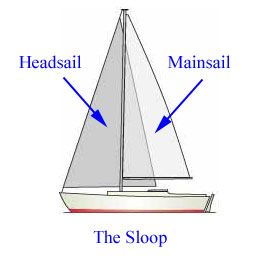
Dacron is the usual choice of sailcloth for cruisers although laminated sails are becoming more common, and moulded sails are the first choice for racing sailors.
Read more about sails...
The Rigging
The standing rigging , generally made up in 1x19 stainless-steel wire, supports the mast.
The forestay and backstay secure the mast in the fore-and-aft plane, and the shrouds secure it athwartships.
The ends of the stays and shrouds are secured to the structural elements of the hull via chainplates.
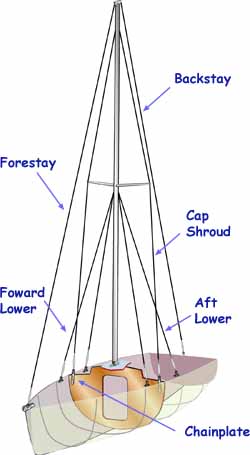
The running rigging is the collective name for the lines (halyards, sheets, topping lifts, uphauls, downhauls etc) that control the sails. Their working ends are attached either directly to the sails or, in the case of the headsail, to the boom.
Read more about sailboat rigging...
These are the rigid struts, generally fabricated in alloy, wood or carbon fibre whose job it is to deploy the sails. For example:
- The spinnaker pole;
- The whisker pole;
- The bowsprit;
- The boomkin.
Read more about sailboat masts...
The Cockpit
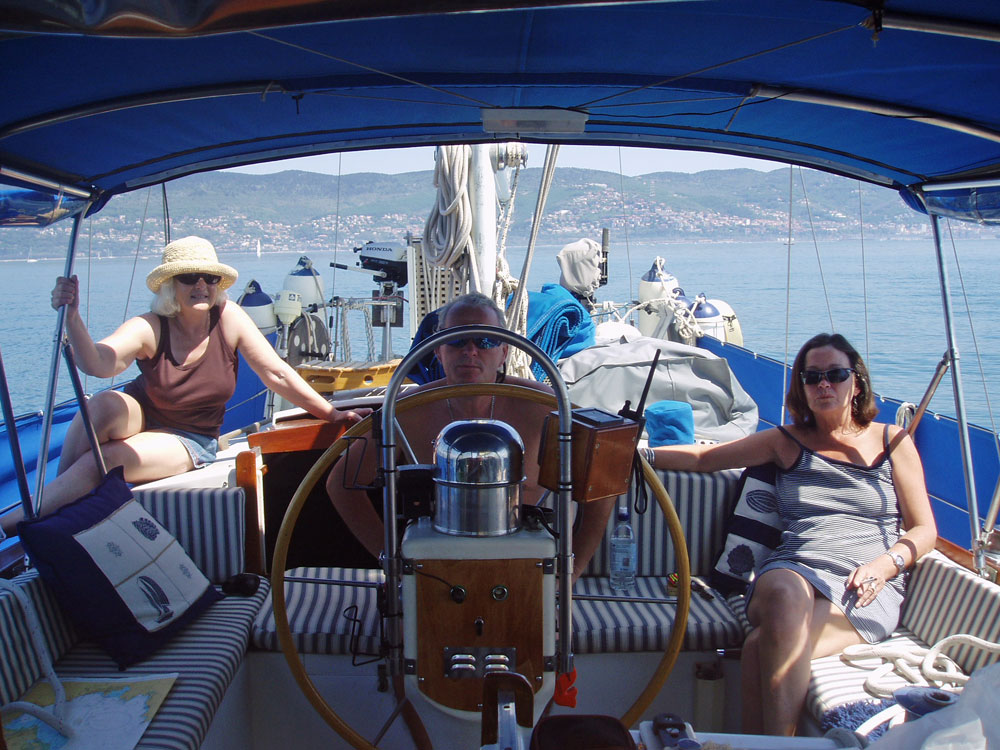
Like many cruising boats, the Ted Brewer designed Whitby 42 ketch pictured above has a centre-cockpit, which allows for the provision of a sumptuous aft-cabin below. Nevertheless, aft-cockpit boats have a great following with seasoned cruisers too. So what the aft versus centre-cockpit pro's and con's?
Tillers and Wheels
Smaller boats tend to be tiller-steered while larger ones, as in the image above, have wheels. Tillers are attached directly to the rudder stock; wheels are located remotely and operate the tiller through chain or hydraulic linkage.
Each approach has their devotees, but what are the arguments for and against?
The Parts of a Sailboat Below the Waterline
Keels & rudders.
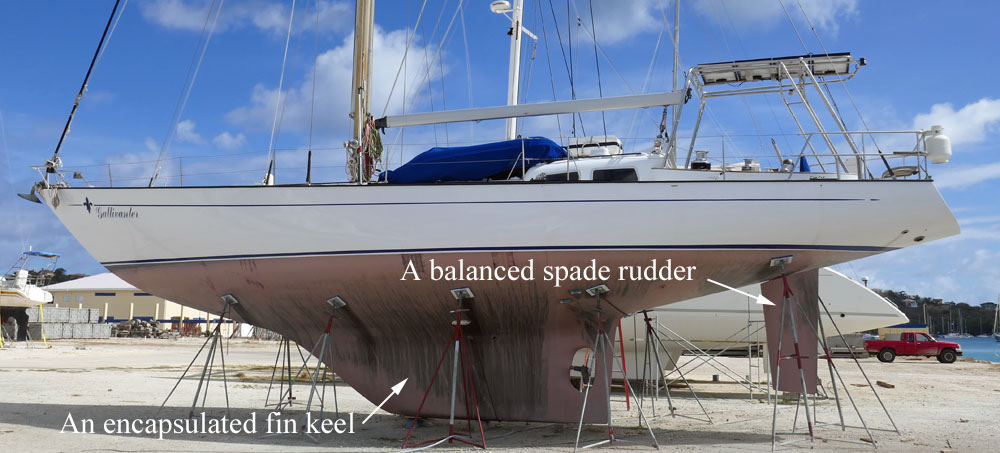
Keels provide three key attributes in varying amounts depending on their design : directional stability, ballast, and lift to windward.
Rudders provide steerage and a small contribution towards lift to windward. They are either:
- Outboard or inboard rudders, which can be
- Unbalanced, balanced or semi-balanced, and be
- Keel-hung, skeg-hung, transom-hung or spade rudders.
Rudder types are discussed here...

Driven by the boat's diesel engine, the propeller allows good progress to be made when the wind is not cooperating.
Under sail though the propeller is redundant and the fixed blades provide nothing but unwanted drag. This is greatly reduced if the blades can fold aft in a clamshell arrangement or feather in self-alignment with the water flow.
Sailboat propellers are either 2 or 3-bladed - and you can read more about them here...
Below Decks

There's no 'standard' layout for the below-decks accommodation on a sailboat, although the one shown above is a popular choice.
Some layouts work well for offshore sailing whereas others are much less suitable - here's why some succeed where others fail...
Recent Articles
The Nicholson 32 Mk10 Sailboat
May 13, 24 11:45 AM
The Sadler 32 Sailboat
May 13, 24 10:33 AM
The Allures 45.9 Sailboat
May 13, 24 07:04 AM
Here's where to:
- Find Used Sailboats for Sale...
- Find Used Sailing Gear for Sale...
- List your Sailboat for Sale...
- List your Used Sailing Gear...
Our eBooks...

A few of our Most Popular Pages...

Copyright © 2024 Dick McClary Sailboat-Cruising.com

Basic Sailing Terminology: Sailboat Parts Explained
Sailing is a timeless activity that has captivated the hearts of adventurous souls for centuries. But, let’s face it, for beginners, sailing can be as intimidating as trying to navigate through a dark, labyrinthine maze with a blindfold on. The vast array of sailing terminology, sailboat parts and jargon can seem like a foreign language that only the most experienced seafarers can comprehend.
Fear not, intrepid sailor, for this comprehensive guide on basic sailing terminology for beginners will help you navigate the choppy waters of sailing jargon with ease. From learning the difference between the bow and stern to mastering the intricacies of sail trim, this article will equip you with all the knowledge you need to confidently take to the seas. So hoist the mainsail, batten down the hatches, and let’s set sail on this exciting journey of discovery!
Parts of a Sailboat
Before you can begin your sailing adventure, it’s important to familiarize yourself with the different parts of a sailboat. From the sleek bow to the sturdy keel, each component plays a vital role in keeping your vessel afloat and propelling you forward through the waves.

- Hull The main body of the boat that sits in the water and provides buoyancy and stability.
- Bow The front of the boat that meets the water and helps to determine its direction.
- Stern The rear of the boat where the rudder and motor are located.
- Deck The flat surface of the boat that you stand on, which can include various features such as seating, storage compartments, and hatches.
- Cockpit The recessed area of the deck where the skipper and crew sit or stand while sailing, which allows for easy access to the sail controls and provides protection from the wind and waves.
- Keel The long, fin-shaped structure beneath the waterline that helps to keep the boat stable and upright.
- Rudder The flat, vertical surface located at the stern of the boat that is used to steer and control the direction of the boat.
- Tiller or wheel The mechanism used to steer the boat, either in the form of a tiller (a handle attached to the rudder) or a wheel (similar to the steering wheel of a car).
- Mast The tall, vertical pole that supports the sails and allows you to catch the wind and move through the water.
- Boom The horizontal pole extending off the bottom of the mast that holds the bottom edge of the mainsail.
- Mainsail The large, triangular-shaped sail attached to the mast and boom that captures the wind’s power to propel the boat forward.
- Jib The smaller, triangular-shaped sail attached to the bow that helps to steer the boat and balance the force of the mainsail.
- Rigging The network of ropes and cables that hold the mast and sails in place and help control their movement.
Sail Terminology
Understanding the terminology associated with sails is critical to becoming a successful sailor. Here are 12 of the most important sail terms you should know, along with brief explanations for each:

- Luff The forward edge of a sail that is attached to the mast, allowing you to adjust the sail’s shape and angle to catch more wind.
- Leech The aft edge of a sail that is attached to the boom, which helps to control the sail’s shape and release the wind as needed.
- Foot The lower edge of a sail that is attached to the boom, which helps to control the sail’s shape and power.
- Head The top of a sail that is attached to the mast and controls the sail’s overall shape and angle.
- Battens The long, thin strips inserted into the pockets of a sail to help maintain its shape and stiffness.
- Clew The bottom corner of a sail that is attached to the boom or sheet, which helps to control the sail’s shape and power.
- Tack The bottom forward corner of a sail that is attached to the boat or a line, which helps to control the sail’s shape and power.
- Sail Area The total area of a sail, which is measured in square feet or meters.
- Sail Draft The curve or depth of a sail, which affects its performance and power.
- Sail Shape The overall form and contour of a sail, which is critical for catching the wind effectively.
- Reefing The process of reducing the sail area by partially lowering or folding the sail, which can be necessary in strong winds or heavy seas.
- Furling The process of rolling or folding a sail to reduce its size or stow it away, which is often used when entering or leaving port or in rough conditions.
Wind Direction and Sail Positioning
Understanding wind direction and sail positioning is crucial for successful sailing. Here are the key terms you need to know:
Types of Wind

- Apparent Wind The wind that is felt on the boat, which is a combination of the true wind and the wind generated by the boat’s movement.
- True Wind The actual direction and strength of the wind.
Points of Sail
You can find a detailed explanation of the points of sail here

- Close-Hauled Sailing as close to the wind as possible, with the sail set at a sharp angle to the boat.
- Beam Reach Sailing perpendicular to the wind, with the sail set at a right angle to the boat.
- Broad Reach Sailing with the wind at a diagonal angle behind the boat, with the sail angled away from the boat.
- Running Sailing directly downwind, with the sail on one side of the boat.
Other Terms
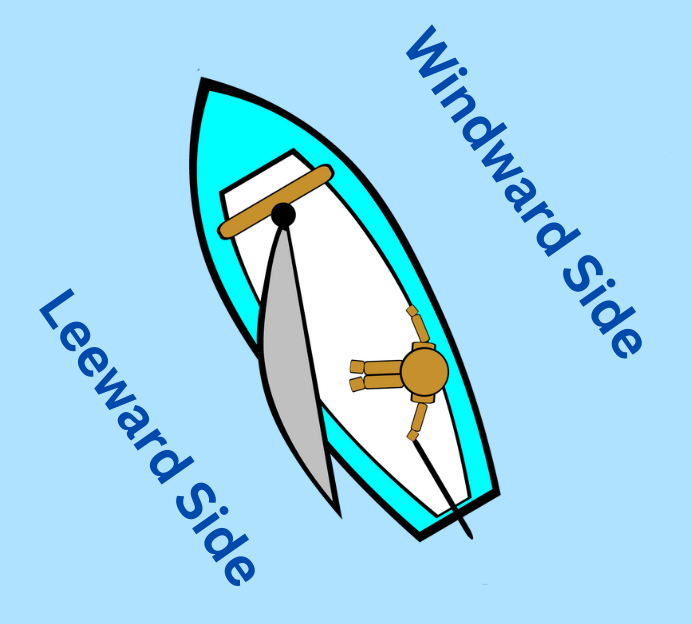
- Windward The side of the boat that is facing the wind.
- Leeward The side of the boat that is sheltered from the wind.
- Sail Trim Adjusting the sail and rigging to maximize the power and efficiency of the sailboat.
Navigation Terminology
Navigating a sailboat requires an understanding of a variety of nautical terms. Here are some of the most important terms you should know:
- Starboard Side The right side of a boat
- Port Side The left side of a boat
- Compass A device used for determining the boat’s heading or direction.
- Bearing The direction from the boat to a specific point on land or water.
- Chart A map or nautical publication that displays water depths, navigational aids, and other important information for safe navigation.
- Latitude The angular distance between the equator and a point on the earth’s surface, measured in degrees, minutes, and seconds.
- Longitude The angular distance between the prime meridian and a point on the earth’s surface, measured in degrees, minutes, and seconds.
- Course The direction in which the boat is traveling.
- Plotting The process of marking a course on a chart or map.
- Waypoint A specific point on a navigational chart or map that serves as a reference point for plotting a course.

- Tacking This maneuver involves turning the bow of the boat through the wind in order to change direction. To tack , the sailor will turn the helm towards the wind until the sails begin to luff, then quickly steer the boat in the opposite direction while adjusting the sails to catch the wind on the new tack.
- Jibing This maneuver is similar to tacking, but involves turning the stern of the boat through the wind. To jibe, the sailor will steer the boat downwind until the sails begin to luff, then quickly turn the stern of the boat in the opposite direction while adjusting the sails to catch the wind on the new tack.
- Heading up This maneuver involves turning the boat closer to the wind in order to sail upwind. To head up, the sailor will turn the helm towards the wind while simultaneously trimming the sails in to maintain speed and prevent the boat from stalling.
- Falling off This maneuver involves turning the boat away from the wind in order to sail downwind. To fall off, the sailor will steer the helm away from the wind while simultaneously easing the sails out to catch more wind and accelerate the boat.
- Docking This maneuver involves bringing the boat alongside a dock or other fixed object in order to moor or disembark. To dock, the sailor will typically approach the dock at a slow speed while using lines and fenders to control the boat’s position and prevent damage.
Knots and Lines
Learning the right knots and lines to use is essential for any sailor. Here are some of the most important knots and lines to know:
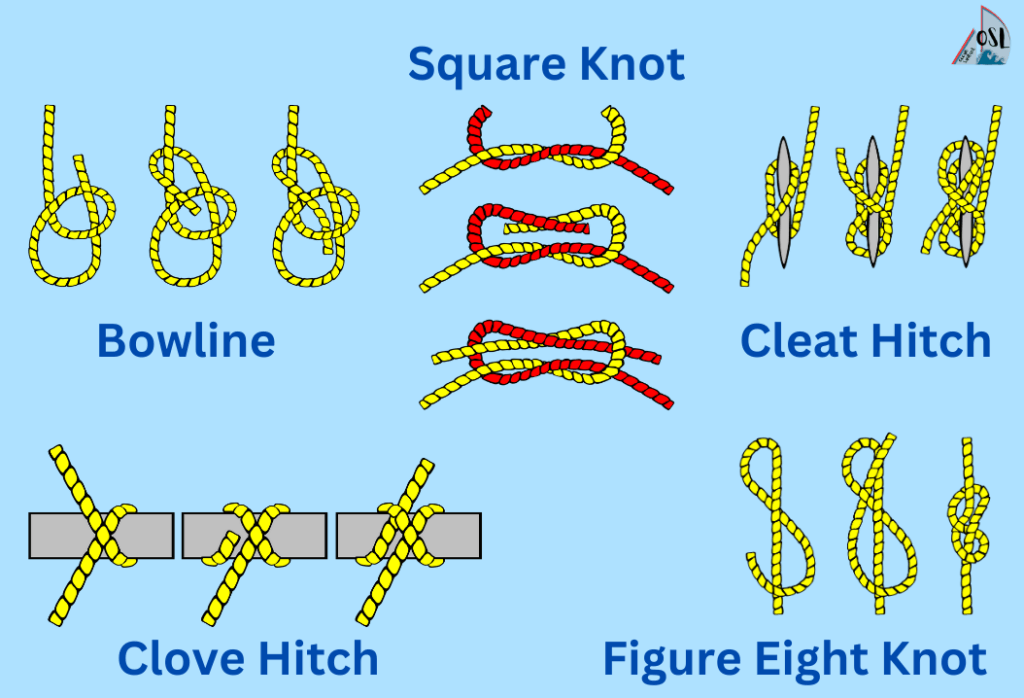
- Bowline This is a versatile knot used for many purposes, including attaching a line to a fixed object, such as a mooring or cleat.
- Square Knot A simple knot used to join two lines of the same diameter.
- Clove Hitch A quick and easy knot for attaching a line to a post or piling.
- Figure-Eight Knot A knot used to stop the end of a line from unraveling.
- Cleat Hitch A knot used to secure a line to a cleat.
- Sheet Bend A knot used to join two lines of different diameters.

- Main Halyard A line used to raise the mainsail.
- Jib Sheet A line used to control the angle of the jib.
- Mainsheet A line used to control the angle of the mainsail.
- Jib Furling Line A line used to furl the jib.
Sailing Safety
- Personal Flotation Devices (PFDs) These are the life jackets or vests that you must wear when on board to ensure your safety. Choose a PFD that fits you properly and is appropriate for your body weight.
- Tethers and Harnesses These are designed to keep you attached to the boat and prevent you from falling overboard. Make sure to clip yourself onto the boat when you’re on deck or going up to the mast.
- Man Overboard ( MOB ) Drill This is a critical safety procedure to practice with your crew. Learn how to quickly identify and recover someone who has fallen overboard.
- Emergency Position Indicating Radio Beacon (EPIRB) An EPIRB sends a distress signal and your location to rescue services in an emergency. Make sure it’s properly registered and in good working condition.
- Navigational Lights Ensure your boat has the required navigational lights and know how to use them properly. These lights help other boats see you in low-light conditions.
Remember that safety is always the top priority when sailing, and it’s essential to take it seriously.
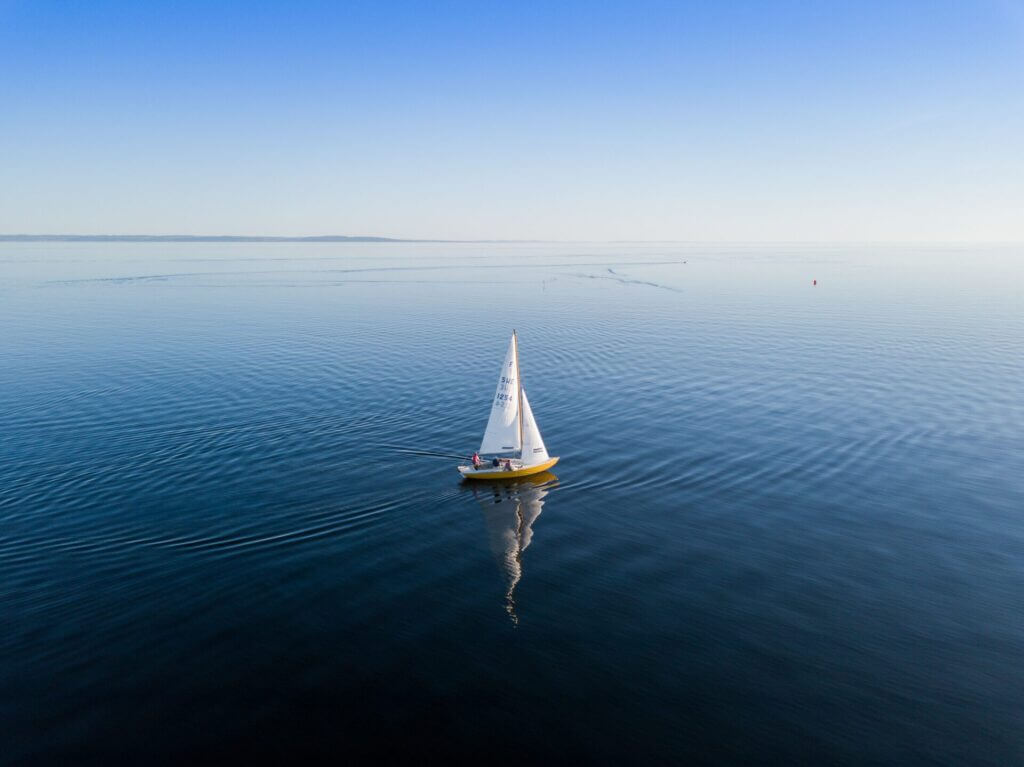
Sailing Terminology Conclusion
As we come to the end of our sailing terminology crash course, it’s important to remember that the world of sailing is vast and varied. Learning even the basics can be a daunting task, but with practice and perseverance, you’ll be able to hoist your sails and set a course for adventure.
Whether you’re a seasoned sailor or just starting out, understanding the terminology is crucial to ensure a safe and enjoyable voyage. From the parts of the boat to the knots and lines, each aspect plays a significant role in the overall sailing experience.
So, as you prepare to embark on your next sailing adventure, keep in mind the importance of safety, navigation, and proper etiquette on the water. And remember, when all else fails, just hoist the Jolly Roger and hope for the best! (Just kidding, don’t actually do that.) Happy sailing!
What is the difference between apparent wind and true wind?
Apparent wind is the wind felt by the sailor on the boat, while true wind is the wind direction and speed relative to the ground.
What are the points of sail?
The points of sail are the directions that a sailboat can travel in relation to the wind. They include upwind, close-hauled, beam reach, broad reach, and downwind.
What does it mean to be “on a reach”?
Being “on a reach” means sailing with the wind coming from the side of the boat, at a perpendicular angle to the boat’s direction.
What is tacking?
Tacking is the maneuver used to turn the boat’s bow through the wind, allowing the boat to change direction while still sailing upwind.
What is jibing?
Jibing is the maneuver used to turn the boat’s stern through the wind, allowing the boat to change direction while sailing downwind.
What is the difference between windward and leeward?
Windward is the side of the boat that is facing into the wind, while leeward is the side of the boat that is sheltered from the wind.
What is a boom vang?
A boom vang is a line used to control the position of the boom, which helps control the shape and position of the sail.
What is a cleat?
A cleat is a device used to secure a line to the boat, allowing the sailor to adjust the tension of the line without having to hold onto it constantly.
What is a winch?
A winch is a mechanical device used to control lines and adjust sails. It typically consists of a drum and handle that can be turned to wind or unwind a line.
Similar Posts

Mainsail Furling Systems – Which one is right for you?
With the variety of options of mainsail furling systems available, including slab, in-boom, and in-mast systems, it can be challenging to determine which one best suits your needs. In this comprehensive guide, we will explore the pros and cons of each system, enabling you to make an informed decision that aligns with your sailing requirements….
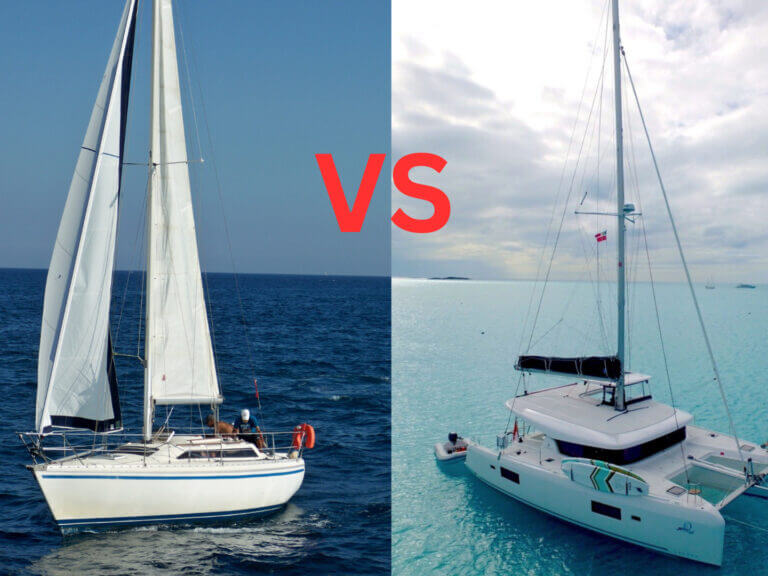

Monohulls vs. Catamarans: Which One is Best for You?
If you’re considering purchasing a sailboat, you might be wondering which type of vessel is best suited for your seafaring adventures. Fear not, for we’re here to help you weigh the differences between monohulls vs. catamarans to make an informed decision. Now, before we dive into the nitty-gritty details of hull design, sail handling, and…
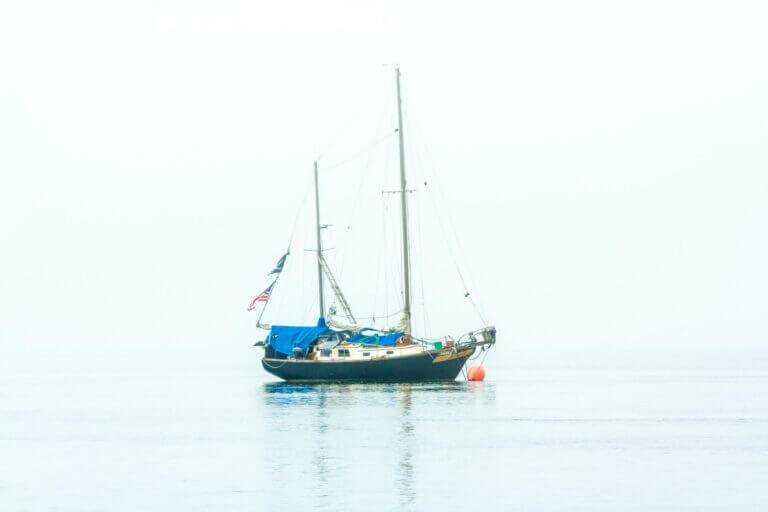
What is a Ketch Sailboat?
Ketch boats are frequently seen in certain regions and offer various advantages in terms of handling. However, what is a ketch and how does it stand out? A ketch is a sailboat with two masts. The mainmast is shorter than the mast on a sloop, and the mizzenmast aft is shorter than the mainmast. Ketches…
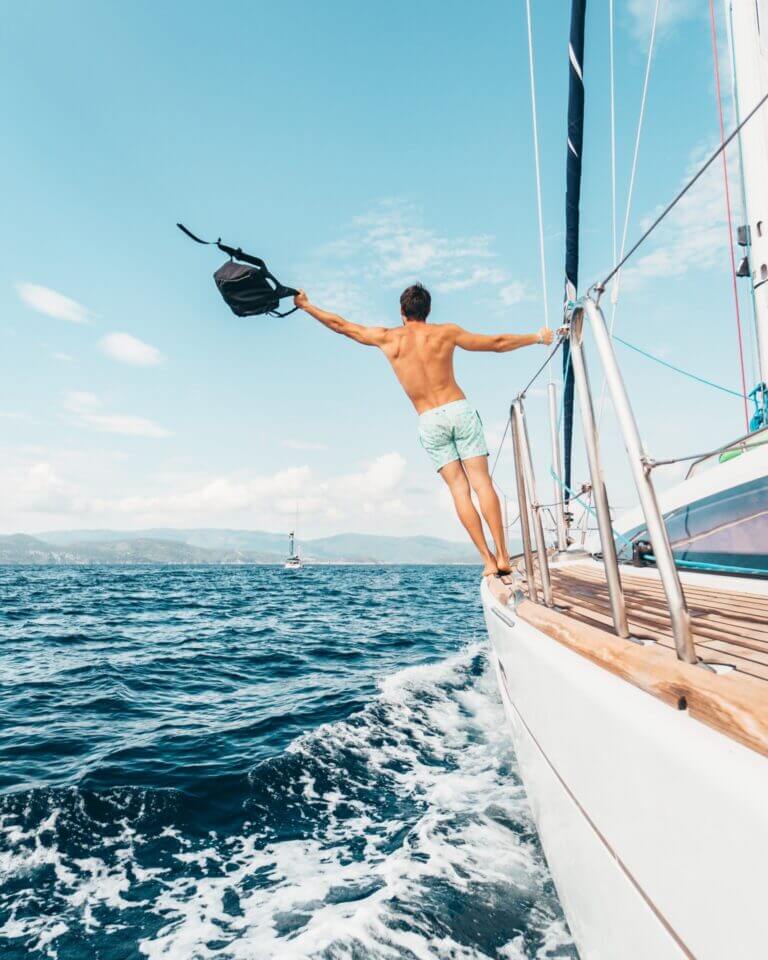
Navigating Life’s Storms: 7 Life Lessons from Sailing
Sailing is more than just a hobby; it is a lifestyle that can help you develop a wide range of skills and abilities. Whether you are a seasoned sailor or just starting, the 7 life lessons from sailing can be applied to various aspects of your life, from your personal relationships to your professional endeavors….

How do Boats Float? Exploring the Science Behind Buoyancy
Sailboats float because the average density of the boat is less than the density of water. When boats displace as much water as it weights, this is known as the buoyancy force generated by Archimedes’ principle. If you’ve ever wondered how do boats float and therefor enable us to embark on thrilling water adventures, you’ve…
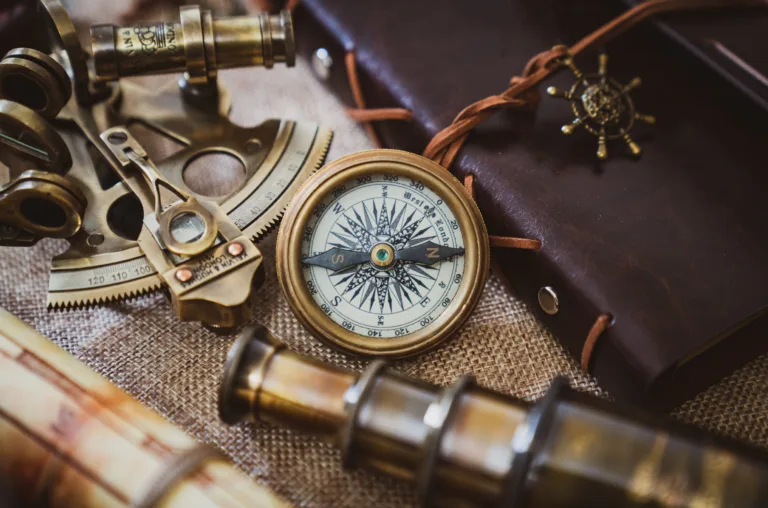
Sailboat Navigation: How to Navigate on Water
Mastering sailboat navigation is of paramount importance for sailors of all levels of experience. Whether you’re a seasoned sailor or a novice setting out on your first boating adventure, having a solid understanding of marine navigation is essential for your safety and confidence on the open waters. By honing your navigational skills, you can ensure…
The simplest entrance to the world of sailing
Parts of a Sailboat – A Practical Overview
Main parts of a sailboat are explained for a Bermuda rigged sloop. This is the most widespread modern type of sailing boat and it is the boat type considered in this blog, as well as in Your First Sailing Handbook . For overview of other sailboat types and their classification see our post: Types of Sailboats .
The sloop normally sails with two sails: one mainsail and one foresail that is called a jib. Larger boats use an inboard engine, while smaller boats (usually shorter than 25 feet) may have an outboard engine. The engine drives the propeller providing thrust when sails are not used.

A typical sloop is shown in the figures below. The front part of a boat is called the bow, while the rear part is called the stern. A cockpit is a working area, towards the stern of a boat, from which the boat is steered and controlled. A boat is steered by turning the tiller which results in turning the rudder, since these two are connected with a shaft. When the rudder is turned off the centerline it makes the boat turn left or right. On bigger boats a steering wheel is used instead of a tiller. Forestay, backstay and shrouds are steel wires or rods that support the mast (collectively called standing rigging).
Some important lines are drawn in various colors in the figures below (see the legend where colors tell you which line is which). Halyards and topping lift are led to the top of the mast, then down through the mast; they exit the mast near the deck and are then directed to the cockpit as shown in the figures. Similarly, outhaul is led from the rear end of the boom, through the boom towards the mast and then to the cockpit. The main halyard and outhaul are used to stretch the mainsail, while the jib halyard is used for hoisting the jib. The topping lift supports the boom when the mainsail is not hoisted and it is run in the same way as the main halyard.
Mainsheet and vang are used to control the boom and the mainsail during sailing. Traveler and jib car are adjustable blocks running along tracks, through which sheets (mainsheet and jib sheets) are attached to the deck. Jib sheets are used to control the jib during sailing. All the above mentioned lines are collectively called running rigging.
Remark: The term rig comprises mast, boom, sails and rigging (both standing and running). A Bermuda rigged sloop may have different rig configurations.

All the lines running from the mast to the cockpit are led through the system of blocks and then through rope clutches, so that they can be put on the winches. Each line has its own clutch and each clutch has two positions: opened and closed. When the clutch is opened, the line can move freely in both directions. When the clutch is closed, the line can be pulled in only one direction (towards the cockpit), while the other direction is blocked. For example, pulling a halyard from the cockpit results in a sail being hoisted (a clutch is normally closed). To lower a sail, halyard must be eased (a clutch must be opened).
Winches facilitate tightening of the lines when they are under tension. Lines must always be put on the winch in the clockwise direction with a suitable number of turns. The stronger the force on the line, the more turns should be put on the winch. When the tension in the line becomes too strong to be pulled by hand, a handle is used.
Winches can be standard or self-tailing. They are both operated in the same way, except when using a handle. In this case, standard winches are best operated by two persons, i.e. one is tailing (pulling the free end of the line) while the other is turning the handle. On the other hand, self-tailing winches allow simple one-person operation, since they have self-tailing jaws. After the line has been put in these jaws, it is tailed automatically as the handle is being turned.

Vedran Bobanac
Vedran Bobanac has been sailing since the age of 10, while he has been working as a skipper and as a sailing instructor for almost 20 years now. He also holds PhD degree in electrical engineering and he enjoys using his technical knowledge, as well as pedagogical skills to teach sailing and publish sailing handbooks .
Parts of a Sailboat: Essential Components Explained
Sailboats are fascinating vessels that have been used for centuries to explore and navigate the world's oceans. These boats harness the power of the wind to propel themselves across the water.
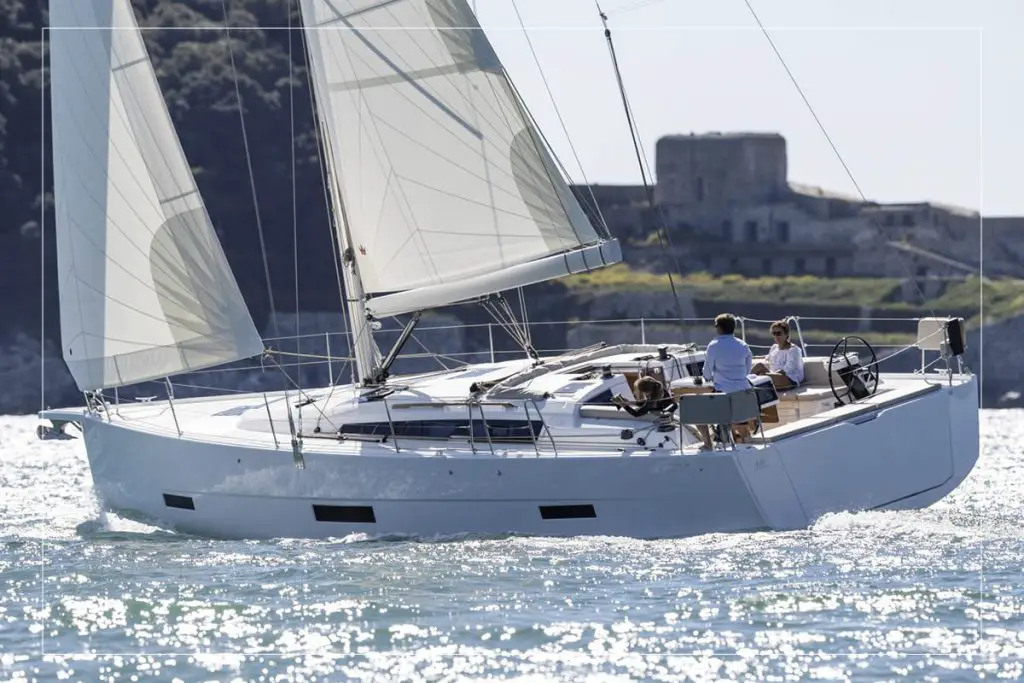
To fully appreciate and understand sailboats, it's important to familiarize yourself with their various parts and components.
There are several vital parts to a sailboat that help it function smoothly on the water. These components can be broadly divided into the hull, the sailing hardware, and the living quarters.
Understanding each component's role in maintaining the boat's speed, stability, and maneuverability will enhance your sailing experience and allow you to tackle various challenges out on the water.
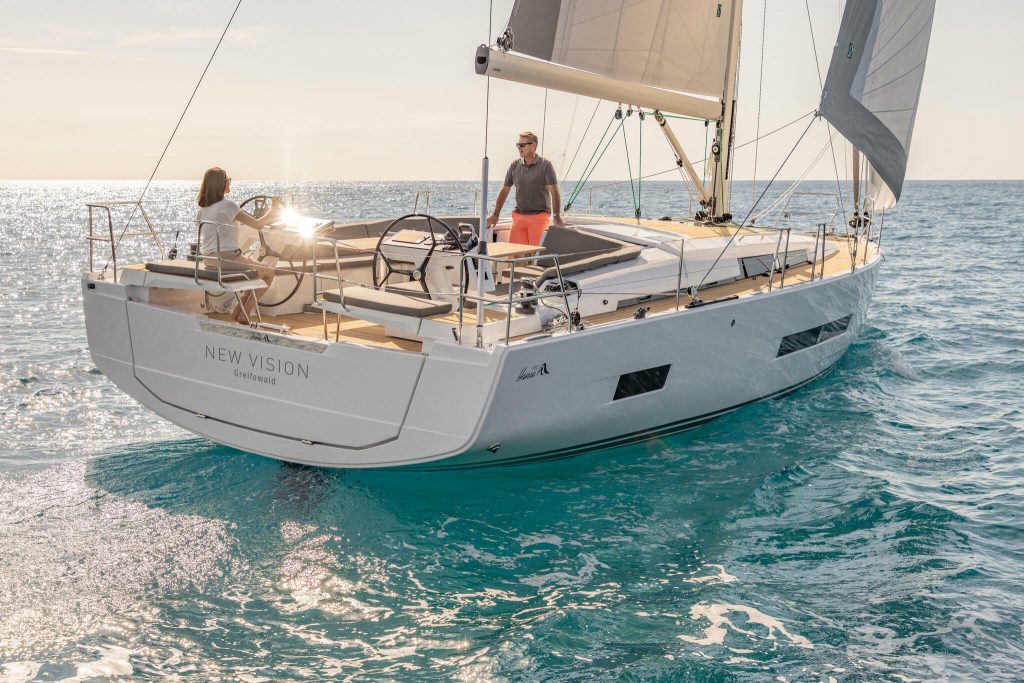
Key Takeaways
- Understanding sailboat anatomy is essential for appreciating the art of sailing
- Knowledge of rigging, sails, stability, and navigation is crucial for a smooth sailing experience
- Sailboats vary in types and size, each with its own unique characteristics and requirements
Sailboat Anatomy
The hull is the main body of a sailboat, providing buoyancy and stability in the water. It's crucial for keeping us afloat and is typically made of materials like fiberglass, wood, or metal 1 .
The shape and design of the hull can vary, depending on the type of sailboat.
There are various parts of the hull that are essential to know, such as the bow (forward part), stern (aft part), waterline, bilge, and rudder 1 .
The deck is the horizontal surface that covers the hull of a sailboat. It's where I walk, sit, and operate the boat.
The deck is an essential part of the sailboat because it provides structural strength and supports features such as the mast, rigging, and winches 2 .
Some key deck components include the bow, stern, lifelines, cleats, and hatches for accessing the cabin below.
The cockpit is the area where I control and steer the boat, usually located towards the stern 3 .
It can be either an open or enclosed space, depending on the boat's design and intended use.
Key components I find in the cockpit are the helm, tiller, or wheel for steering, as well as the navigation and communication instruments. The cockpit also usually contains the primary winches, lines, and clutches for sail control 3 .
The cabin is located below the deck and is the living space on a sailboat 4 .
It offers shelter from the elements and is typically where I find berths for sleeping, a galley for cooking, a head for bathroom facilities, and storage for personal belongings.
The cabin layout and size can vary greatly depending on the boat's size and design 4 .
Rigging Components
The mast is the tall vertical spar that supports and extends the sails on a sailboat . It stands on the boat's hull, usually at its center, and serves as the backbone of the sailboat's rigging system.
In my experience, there are various types of mast s, such as single masts, double masts, and even triple masts, depending on the design and size of the sailboat.
The boom is the horizontal, supporting spar that attaches to the foot (bottom edge) of the mainsail and runs perpendicular to the mast.
It helps control the shape and angle of the sail relative to the wind, enhancing the boat's performance.
I always make sure that the boom is securely attached to the mast and that all necessary hardware is in good working condition.
Standing Rigging
Standing rigging refers to the set of fixed components that support the boat's mast and keep it properly aligned and positioned.
The primary components in this category are the stays and shrouds.
Stays are the wires or rods that run forward, aft, or diagonally from the mast, while shrouds run from the mast to the sides of the sailboat.
These components are crucial to the structural integrity of the rigging, so I always check them for wear and tear, and proper tension.
- Stays : These can be further divided into forestays, backstays, and side stays.
- Shrouds : These include upper, intermediate, and lower shrouds, depending on their position.
Running Rigging
Running rigging encompasses the adjustable components of a sailboat's rigging system that help me control the sails' position and tension.
Key elements of running rigging are halyards, sheets, and blocks.
- Halyards : These are the lines (ropes) used to hoist (raise) and lower the sails. On my sailboat, I use a mainsail halyard, jib halyard, and a spinnaker halyard when needed.
- Sheets : They are the lines I use to control the angle of the sails relative to the wind, adjusting their trim for optimal efficiency. The mainsheet, jib sheet, and spinnaker sheet are the most common ones I encounter.
- Blocks : Blocks or pulleys are essential for making my work easier when handling the rigging. They help redirect the force in the lines and provide mechanical advantage when I need to tension the sails or handle the sheets.
Sails and Sail Handling
The mainsail is the primary sail on a sailboat and is attached to the mast and boom. It plays a crucial role in propelling the boat forward by capturing the wind.
The mainsail consists of three edges: the luff , which is the forward edge, the leech , the aft edge, and the foot , the bottom edge.
To control the shape of the mainsail, I can use the following techniques:
- Adjust the tension on the outhaul , which controls the foot tension.
- Adjust the tension on the halyard to control the luff tension.
- Modify the boom vang tension to control the leech tension.
Headsails are the sails located in front of the mast. They include the jib and the genoa .
A jib is a smaller sail, which is easier to handle and suitable for moderate to strong wind conditions. The genoa is a larger headsail that provides more power in lighter winds. Both these sails feature a luff, leech, and foot similar to the mainsail.
When using a jib or genoa, I can trim the sail by adjusting the sheet (the line that controls the angle of the sail relative to the wind) and the lead position (which is where the sheet attaches to the sail).
By properly trimming the headsail, I can optimize its performance and maintain a balanced sail plan. The guide to sail anatomy is helpful for understanding specific parts of a sail.
A spinnaker is a specialized sail designed for sailing downwind, away from the wind's source. It is a large, lightweight, and billowing sail, constructed from a thin fabric that captures the wind from behind and propels the boat forward.
When setting up a spinnaker, I handle the sail by using:
- Tack line : A line that controls the sail's lower corner, where it meets the bow of the boat.
- Halyard : A line that hoists and lowers the sail.
- Sheet : The line that controls the angle of the sail relative to the wind.
Spinnakers can be challenging to handle due to their size and sensitivity to wind gusts. However, with practice and proper sail handling techniques, I can use the spinnaker effectively to enhance my downwind sailing performance and enjoyment.
Keel and Stability
There are several types of keels that serve different purposes and provide varying levels of stability to a sailboat. The most common types of keels are fin keels , bulb keels , wing keels , bilge keels , and lifting keels .
- Fin keels are quite popular and extend straight down from the hull. They provide a great balance between stability, performance, and ease of movement in the water. You can read more about fin keels in this Illustrated Guide .
- Bulb keels consist of a fin keel with a heavy bulb at the bottom to lower the center of gravity and improve the boat's stability.
- Wing keels feature horizontal "wings" to enhance the sailboat's ability to sail close to the wind and minimize drift.
- Bilge keels are twin keels that run parallel along the port and starboard sides of the hull, typically found on smaller sailboats.
- Lifting keels are adjustable keels that can be retracted upwards to decrease the boat's draft, making it easier to navigate shallow waters.
Some sailboats also have canting keels , which can pivot from side to side to provide maximum stability when sailing at extreme angles.
A critical component of keel design is the ballast, which is typically made of heavy materials like lead or iron. The main purpose of the ballast is to provide stability by lowering the sailboat's center of gravity and counteracting the heeling forces generated by the wind on the sails.
Different types of keels have varying ballast configurations. For example, fin keels have ballast concentrated in a narrow fin, while bulb keels have the ballast located in a bulb at the bottom of the keel. In each case, the ballast ensures that the sailboat remains stable and upright, even in challenging sailing conditions.
In some smaller sailboats, such as dinghies, it's common to find a centerboard design instead of traditional keels. A centerboard is a retractable plate that provides lateral resistance, allowing the boat to sail upwind. In this case, the sailboat relies on the weight of the crew as ballast to maintain stability.
Steering System
The rudder is one of the essential components of a sailboat's steering system. It's mounted vertically on the stern (rear) of the boat and functions as the primary means of steering by deflecting water flow, which in turn changes the boat's direction.
There are different types of rudders such as the spade rudder, which is a common type used in modern sailboats. A spade rudder is fully submerged in water and not connected to the hull, giving it better maneuverability and control.
The tiller is a simple and traditional method for controlling the rudder. It is essentially a long lever attached directly to the top of the rudder.
I find that using a tiller offers me direct and immediate feedback from the rudder, making it easier to feel the boat's response to my steering inputs. Tiller steering is often preferred by many sailors on smaller sailboats due to its simplicity and connection with the sailing experience.
Larger sailboats tend to have wheel steering systems in place of a tiller. As a helmsman , I use the wheel to control the direction of the boat by turning it clockwise or counterclockwise.
The wheel is connected to a system of cables and pulleys, which in turn steer the rudder, allowing me greater leverage and control over the boat's steering.
Various parts of a sailboat's steering system:
Navigation and Safety Equipment
As a sailor, I rely on my compass to navigate and maintain a steady course.
There are two main types of compasses on sailboats, the fixed-mount compass and the handheld compass .
The fixed-mount compass is typically installed near the helm , providing me with continuous bearing information. Meanwhile, having a handheld compass on board serves as a backup in case the main compass fails or is damaged.
Safety is paramount when I am sailing, and having secure lifelines around the deck is essential.
Lifelines are made of stainless steel wire and are attached to the stanchions around the boat. I use them to minimize the risk of falling overboard while moving on the deck, particularly in rough seas or strong winds. They are crucial for my safety and the safety of my crewmates, ensuring we all stay onboard and secure.
When anchor ing my sailboat, I rely on an anchor and a windlass to secure the boat in place.
There are different types of anchors, such as the CQR , Danforth , and Bruce anchors, each with their unique design that suits different seabed conditions.
I typically use a windlass to deploy and retrieve the anchor. A windlass is a mechanical device that makes handling heavy anchors more manageable.
It is essential to regularly inspect and maintain the windlass and anchor to ensure they function as expected when anchoring in various weather conditions and locations.
In addition to the anchor, I also make use of a chain and rode , which connect the anchor to the sailboat:
- Chain: The chain attaches to the anchor and adds weight, helping the anchor dig into the seabed.
- Rode: The rode connects the chain to the boat and can be made of rope or a combination of rope and chain.
Sailing Hardware
Winches are an essential part of a sailboat. They help control the lines and sheets by providing mechanical advantage.
I find that winches are most commonly used for tightening or loosening the jib sheets and the mainsheet. They consist of a drum, a handle, and gears that allow for smooth operation.
The sailboat hardware available on the market today includes different types and sizes of winches to suit various boats and sailing needs.
When using a winch, it's important to wrap the line around the drum in a clockwise direction, making sure there are no overlaps or twists.
To control the tension, I always ensure that the winch handle is in the "ratchet" position. This allows me to easily apply force in one direction and hold the line in place when not turning.
Cleats are another vital piece of sailing hardware that come in various shapes and sizes. Their primary function is to secure lines, particularly when adjusting tension on sails.
I often use cleats on my boat to ensure that sheets and halyards stay in place while sailing.
Horn cleats are the most common type, with two projecting horns that allow the line to be passed around them in a figure-eight pattern.
Cam cleats, on the other hand, have two spring-loaded jaws that grip the line. This allows for easy adjustment and quick release if necessary.
In my experience, blocks are critical components of a sailboat's rigging system. They serve as pulleys that help redirect lines and reduce friction, making it easier to control sails.
Blocks are available in various materials such as stainless steel or aluminum . They also come with different configurations like single, double, or triple sheaves depending on the specific application.
For instance, I use a mainsheet block system in conjunction with a vang to control the tension and angle of the mainsail. Similarly, topping lift lines may pass through blocks to help raise and lower the boom easily.
Auxiliary Systems
One important auxiliary system in a sailboat is the motor . Sailboats often have an inboard or outboard engine , which provides extra maneuverability when needed.
This is particularly useful when the wind conditions aren't favorable. The motor's main components include the engine, transmission, and propeller . These work together to move the boat through the water when there's limited or no wind available.
A boat's electrical system is responsible for powering various devices onboard. The critical aspects of this system include the battery, alternator, and wiring, which connect different electronic components.
Some common devices that rely on the electrical system are navigation systems, LED lights, electronic sensors, and communication equipment.
In addition to navigation and communication, the electrical system also powers the bilge pump .
The bilge pump is a vital piece of equipment that helps remove water accumulated in the boat's bilges, preventing the vessel from flooding.
Here's a simple list of typical electrical system components:
- Switches and fuses
- Electronic devices (navigation, communication, etc.)
A sailboat's plumbing system usually consists of a freshwater system and a wastewater system.
The freshwater system supplies water to the boat's faucets, showers, and sometimes engine cooling. It includes a water tank, water pump, and piping to distribute the water.
The wastewater system, on the other hand, deals with disposing of used water and waste.
This generally includes a black water tank for toilet waste and a grey water tank for water from sinks and showers. These tanks need to be regularly emptied and maintained to prevent foul odors and maintain the boat's sanitation.
To recap, the plumbing system's main components are:
- Black water tank (toilet waste)
- Grey water tank (sink and shower waste)
Living Quarters
The galley is the sailboat's kitchen, where food is prepared and cooked. It's typically a small, compact area in order to maximize space and efficiency.
In most sailboats, the galley features a stove, sink, refrigerator, and storage.
Storage space, such as cabinets and drawers, is crucial because every inch of space is valuable on a sailboat.
To ensure user-friendly access to the utensils, cookware, and food items, sailboats may have organized storage solutions .
As for the saloon , it serves as the primary living area on a sailboat. This is where the crew gathers to relax, dine, and socialize.
The saloon usually features comfortable seating, a dining table, and additional storage space s.
I often find that this space is customizable, allowing for the conversion of tables into extra sleeping areas when necessary.
Natural light is also an essential aspect of the saloon, so it often has hatches and windows to allow sunlight in while providing a view of the surroundings.
Berths are the sleeping quarters on a sailboat. These designated areas, often equipped with cushions or mattresses, provide the crew with a place to rest during extended voyages.
Berths come in various sizes and configurations , ranging from single to double or bunk beds, depending on the size of the sailboat and the number of crew members.
As with other spaces on the sailboat, thoughtful design and attention to maximizing storage space is key.
In many berths, additional storage areas can be found under the beds or in nearby compartments.
Types of Sailboats
A monohull sailboat , as the name suggests, consists of a single hull. This design is common and comes in various forms, including cruising sailboats and racing sailboats .
One advantage of monohulls is that they generally have better upwind performance compared to multihulls.
A cruising sailboat is versatile and well-suited for long-distance sails, equipped with amenities to make life on board comfortable.
In contrast, racing sailboats prioritize speed and performance and often feature lightweight materials and specialized designs.
Multihull sailboats include both catamarans and trimarans, featuring two or three hulls connected by a central platform.
Catamarans have a pair of parallel hulls, which provides a wide and stable platform that reduces heeling. According to this guide , catamarans are known for their speed, comfort, and spaciousness, making them popular choices for vacationing and cruising.
Trimarans, on the other hand, have three hulls - a central hull flanked by two smaller outriggers.
The trimaran design offers a balance between stability, speed, and maneuverability, resulting in a quick, agile, and comfortable sailing experience.
A dinghy is a smaller sailboat , usually less than 15 feet in length.
Dinghies are simple, easy to maneuver, and relatively affordable. They can be used for various purposes, such as recreational sailing, sailing lessons, or as a tender for a larger sailboat.
Dinghies can have one or two sails and either a centerboard or a daggerboard to provide lateral resistance to the water.
Many beginners start their sailing journey with a dinghy because it's an excellent way to learn essential sailing skills before venturing onto larger sailboats.
Frequently Asked Questions
What are the different components of a sailboat's rigging?
The rigging on a sailboat consists of a system of ropes, wires, and chains that support the mast and sails. It can be divided into two main categories: standing rigging and running rigging.
Standing rigging includes the shrouds and stays, which are responsible for providing support to the mast.
Running rigging comprises all the lines used to control the sails, such as halyards, sheets, and outhauls.
Rigging components help sailors effectively control the sailboat and its movements.
How do the various parts of a sailboat function together?
The different parts of a sailboat work together to provide an efficient sailing experience.
The hull is the main body of the boat, while the keel provides stability and prevents sideways motion. The rudder is responsible for steering.
The mast and sails capture wind energy and enable propulsion. Rigging is crucial for controlling the position of the sails and ensures the boat's maneuverability.
This helpful guide offers an illustrated explanation of sailboat parts and their functions.
Can you name the sails typically found on a sailboat?
A common type of sailboat is the sloop, which has two sails: the mainsail and the jib.
Other sails that can be found on sailboats include the spinnaker, a large, lightweight sail used for downwind sailing, and the genoa, a larger version of the jib for increased sail area in light wind conditions.
You can read more about sail types in this comprehensive guide .
What is the purpose of the keel on a sailboat?
The keel is a critical component of a sailboat as it provides stability and prevents the boat from moving sideways in the water.
It acts as a counterbalance to the forces exerted by the wind on the sails and ensures directional control. The keel also contributes to the boat's hydrodynamic properties, reducing drag and promoting smooth movement through the water.
How is the mast of a sailboat structured and what are its key parts?
The mast is a vertical pole on a sailboat responsible for supporting the sails and rigging.
It is typically made of aluminum or carbon fiber for strength and lightness. Key parts of the mast include the spreaders, which help distribute the load along the shrouds, and the tangs, which are attachment points for stays and shrouds. Masts also have fittings for halyards and other rigging components essential to sail control.
What are the common features found in a sailboat's cockpit?
The cockpit is the central area of a sailboat where the crew controls the boat's operation. It typically includes the steering wheel or tiller (connected to the rudder), engine controls, and instruments for navigation and communication.
Additionally, the cockpit may feature winches and cleats for handling the sheets and other lines. You might also find seating or benches for the crew as well as storage compartments. More details on sailboat features can be found in this informative article .
Related Articles
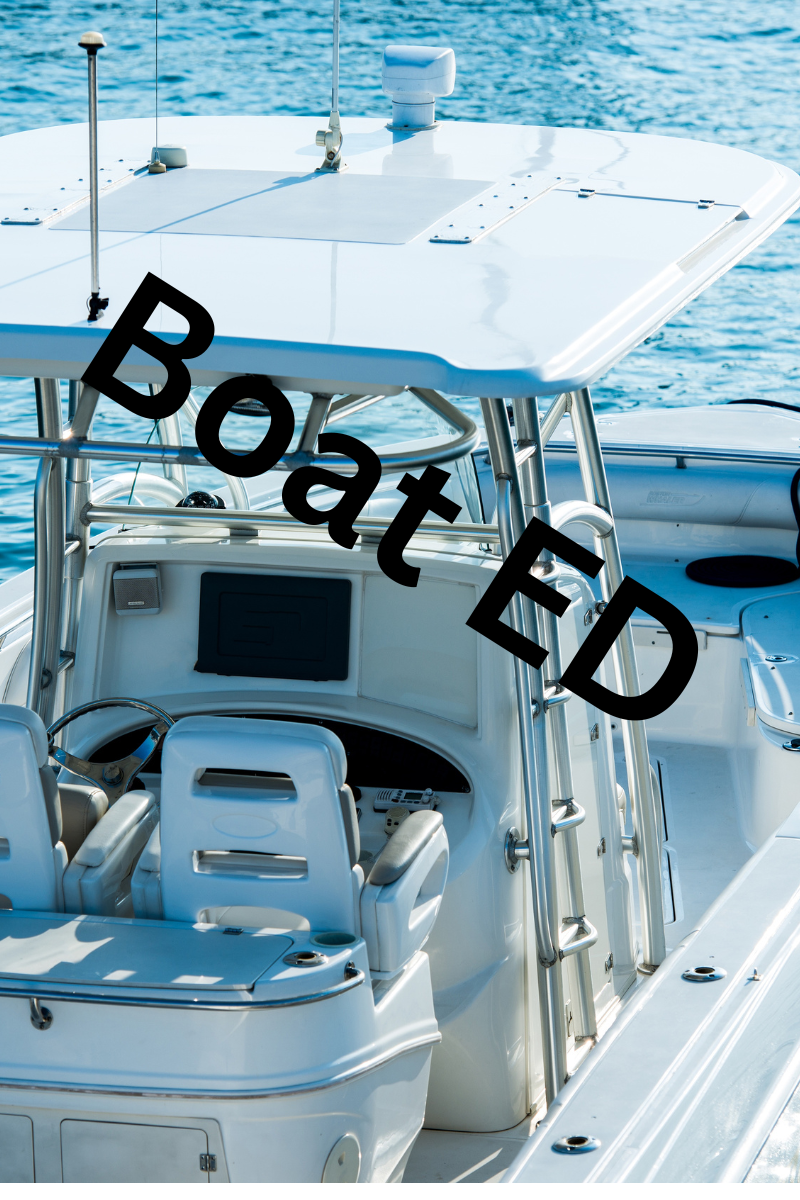
Boat ED- Ultimate Guide: Mastering Watercraft Safety and Skills
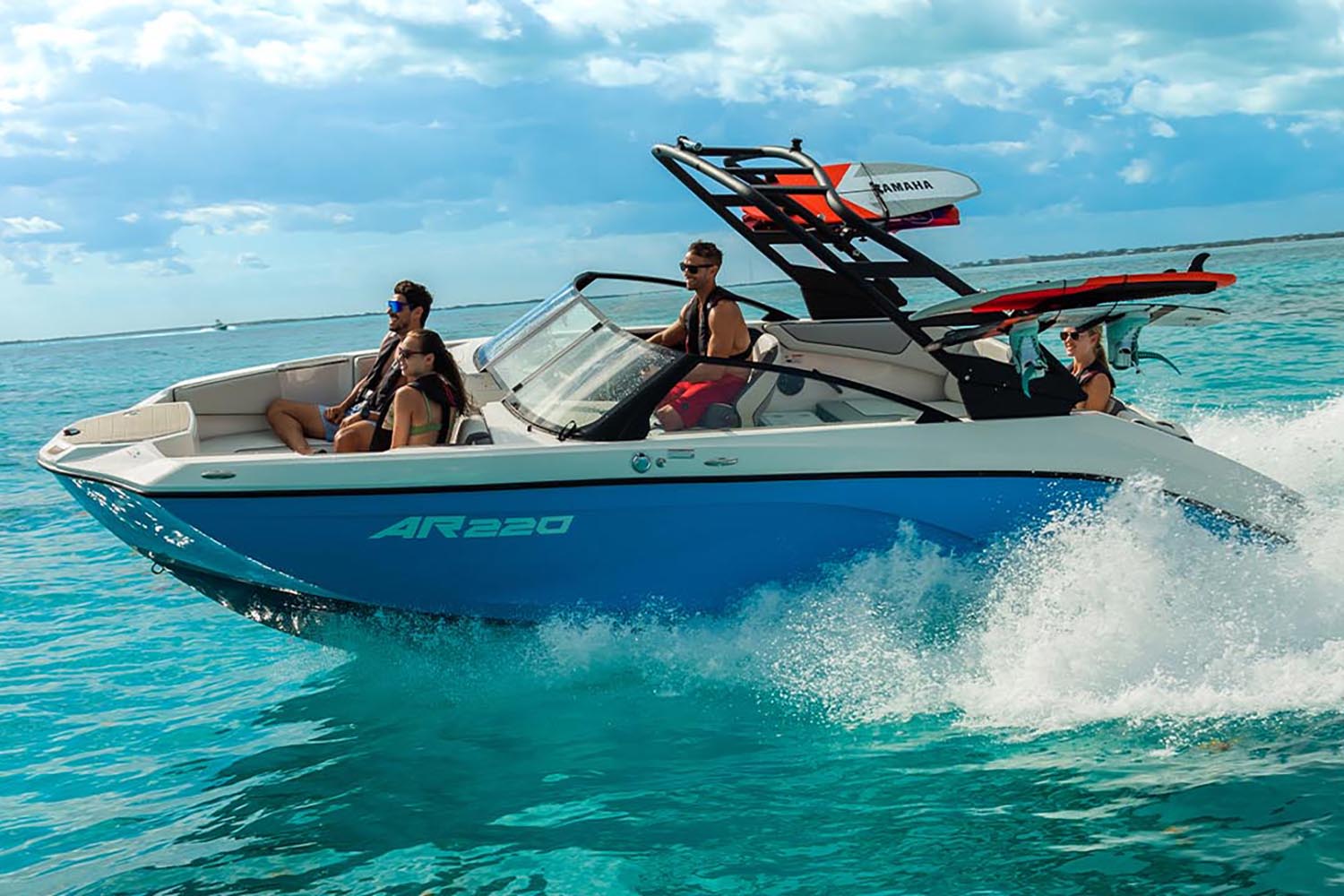
Jet Boat Essentials: A Comprehensive Guide for Enthusiasts
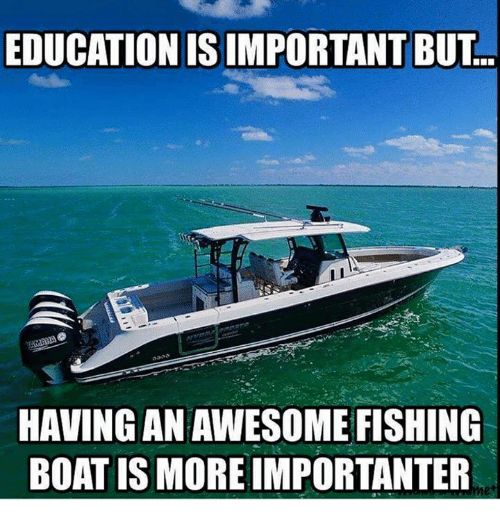
Boating Memes: A Comprehensive Guide to Nautical Laughs
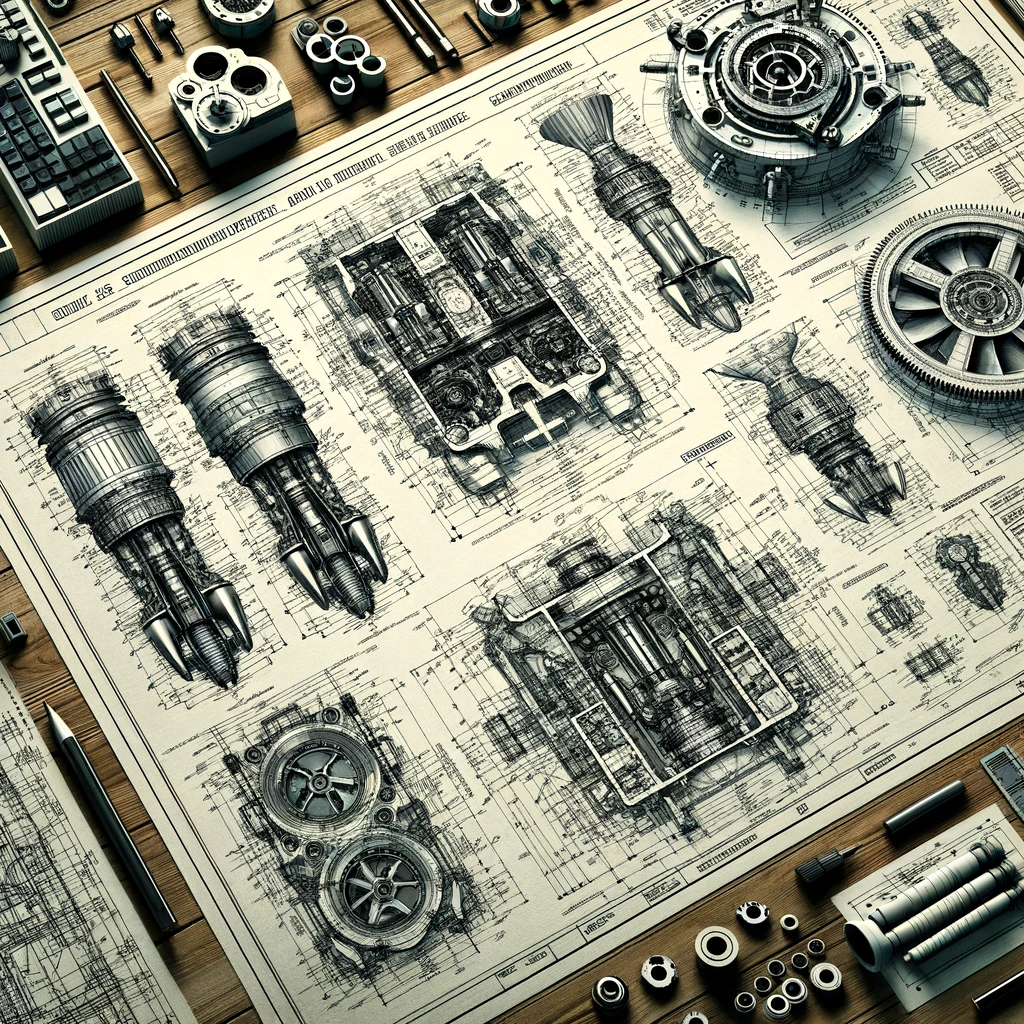
Marine Engineering: Essential Concepts for Aspiring Professionals

Small Boats Ultimate Guide with Options: Navigate Your Perfect Choice
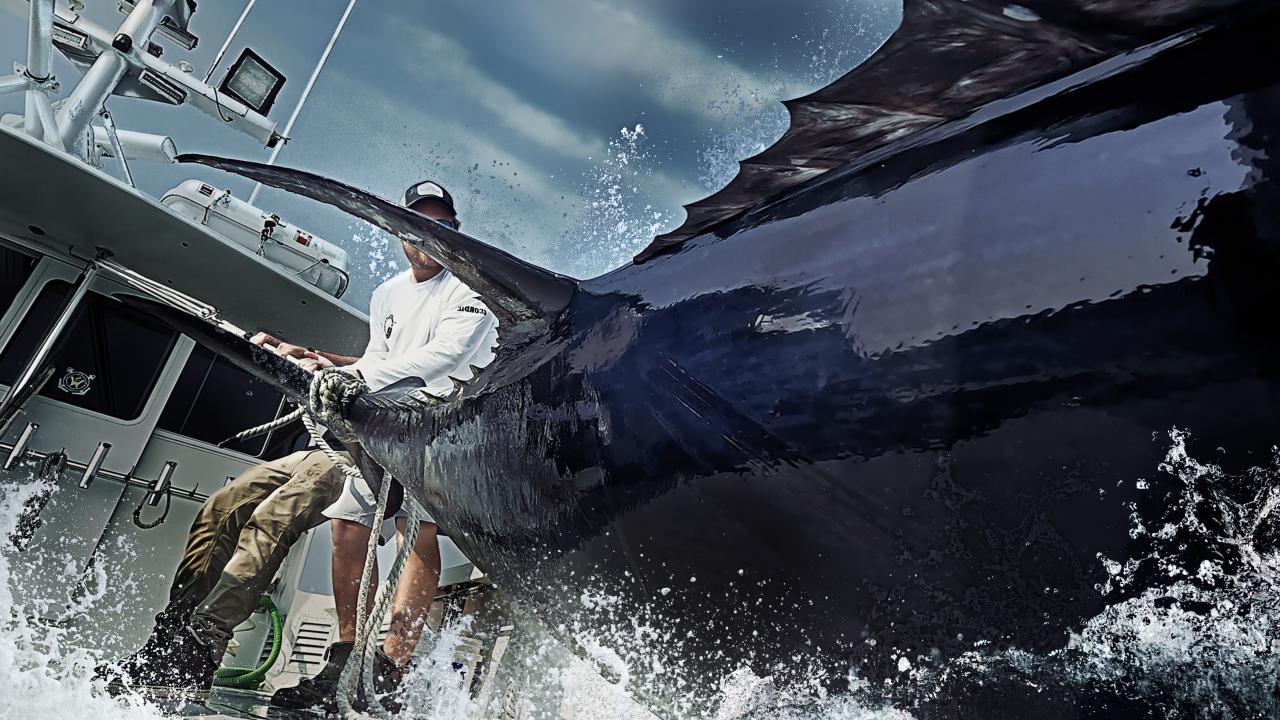
Wicked Tuna Cast 2024: Meet the Expert Fishermen Dominating the Seas

CATANA Group Unveils YOT, the Fresh Power Catamaran Sensation on the Seas
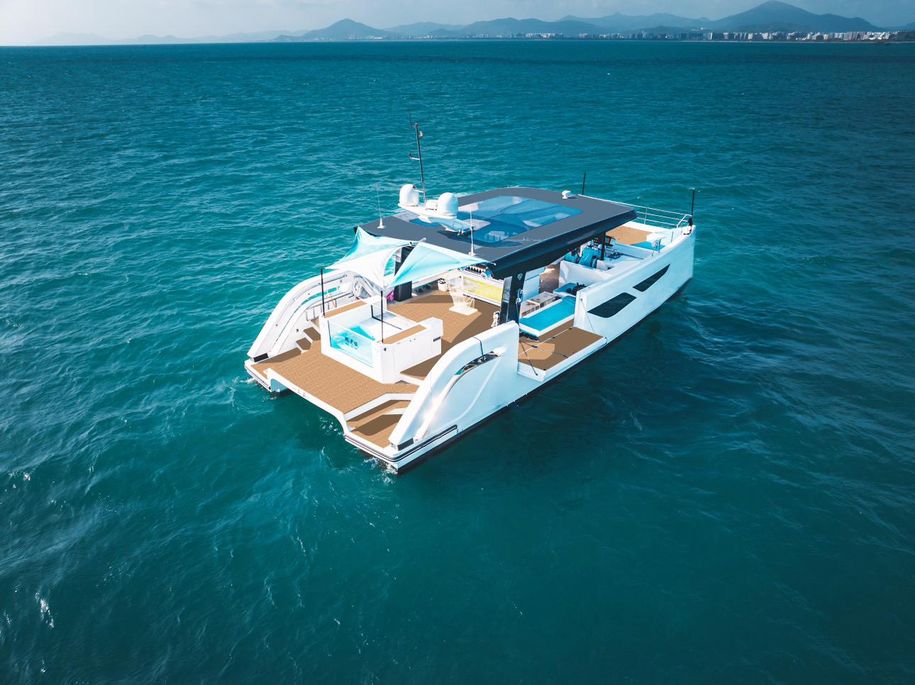
Catamaran Diamond Yachts P55: Unveiling the Ultimate Party Cat Experience
Parts of a Sailboat
The allure of sailing lies in the harmonious dance between wind and water, propelling sailboats on mesmerizing voyages across the open seas. However, before one can hoist the sails and embark on a maritime journey, it is essential to understand the intricacies of a sailboat’s anatomy.
In this article, we will delve into the captivating world of sailboats, unravelling the essential parts that compose these graceful vessels, allowing them to gracefully navigate the vast expanse of the ocean.
From the towering mast that reaches for the heavens to the delicate rigging that weaves the sails into the wind’s embrace, each component plays a vital role in the enchanting symphony of sailing. Whether you are an aspiring sailor or a seasoned mariner, join us on this enlightening voyage as we uncover the secrets behind the anatomy of a sailboat.
Hull and Deck
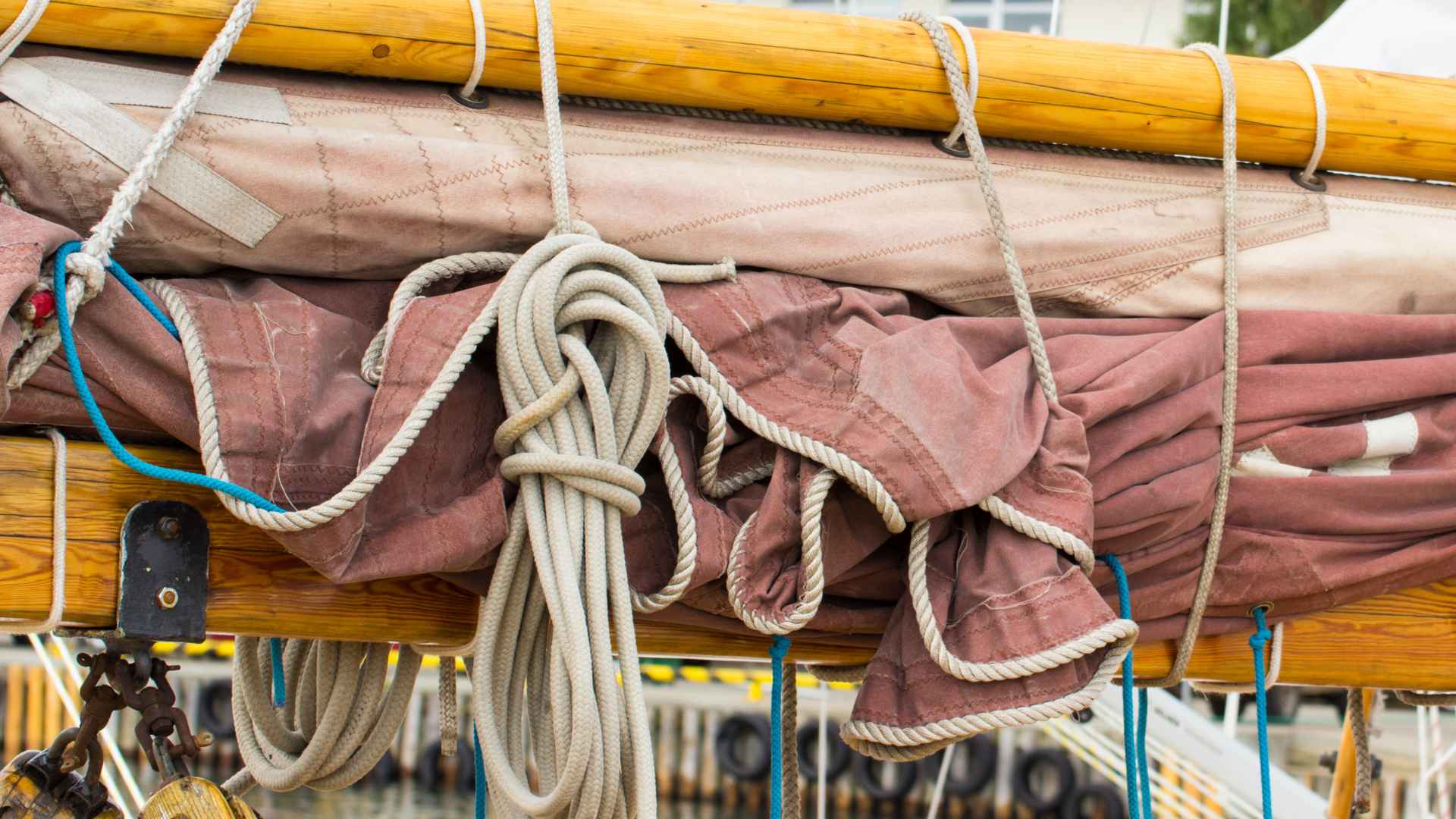
The hull of a sailboat is its foundational structure, serving as the backbone of the vessel. It is the part of the boat that interacts directly with the water, providing buoyancy and stability as it glides through the waves. Understanding the hull is essential for any sailing enthusiast, as it forms the basis of a sailboat’s design and performance.
The hull is typically made of a sturdy and watertight material, such as fiberglass, wood, aluminum, or even carbon fiber in high-performance racing boats. Its shape and design are carefully crafted to optimize the boat’s performance in different water conditions, ensuring a smooth and efficient sailing experience.
One of the primary functions of the hull is to provide buoyancy, allowing the boat to float on the water’s surface. It displaces water equal to its own weight, creating an upward force that keeps the boat afloat. This buoyancy is essential for the stability and safety of the sailboat.
Stability is another crucial aspect of the hull. Sailboats are designed to resist tipping over or capsizing, and the hull’s shape plays a significant role in achieving this stability. Sailboats can have either a monohull or a multihull design. Monohull sailboats have a single hull, while multihull sailboats, such as catamarans or trimarans, have two or more hulls. Each design has its advantages and characteristics, influencing the boat’s stability, speed, and comfort.
In addition to providing buoyancy and stability, the hull also houses various compartments and storage areas, including the cabin, where sailors can find shelter and accommodation during longer journeys. The deck, which is the upper surface of the hull, provides a platform for crew members to move around and perform various tasks while aboard the sailboat.
The hull and deck work together harmoniously to create a seaworthy vessel, capable of withstanding the forces of wind and waves. Whether you’re a seasoned sailor or a curious novice, understanding the importance of the hull is the first step toward unlocking the secrets of sailing and embracing the wonders of the open water.
What are the different hull types, such as monohull and catamaran, and their characteristics?
When it comes to sailboats, there are different hull types to choose from, each with its own unique characteristics and advantages. The two main types of sailboat hulls are monohull and catamaran. Let’s explore these hull types and their distinguishing features:
Monohull sailboats have a single hull, which is a single, continuous structure that runs from bow to stern. Monohulls are the most common type of sailboats and have been used for centuries. They offer several advantages:
- Versatility: Monohulls are versatile and well-suited for various sailing conditions, from calm coastal waters to rough offshore passages.
- Excellent upwind performance: Monohulls generally perform well when sailing upwind due to their ability to cut through the water and tack efficiently.
- Comfortable heeling: Monohulls have a natural tendency to heel, or lean to one side, which some sailors find enjoyable and exhilarating.
- Ample storage space: Monohulls often provide more interior space, including cabins, galleys, and storage compartments, making them suitable for longer journeys or living aboard.
Catamaran:
Catamarans have two hulls connected by a bridge or deck, creating a wide and stable platform. Catamarans have gained popularity in recent years, particularly for cruising and charter purposes. Here are some key characteristics:
- Stability: Catamarans offer exceptional stability, both at anchor and underway. The wider platform reduces heeling and provides a more comfortable experience, particularly for those prone to seasickness.
- Spaciousness: Catamarans generally have a larger interior living space, including multiple cabins, saloons, and outdoor areas. This extra space makes them popular for long-term cruising and leisure activities.
- Shallow draft: Catamarans have a shallower draft compared to monohulls, allowing them to navigate in shallower waters and access anchorages that may be inaccessible to deeper-draft boats.
- Speed potential: Due to their design and reduced drag, catamarans can achieve higher speeds, particularly reaching or running with the wind. This makes them popular among performance-oriented sailors.
Both monohulls and catamarans have their merits and are suitable for different sailing preferences and conditions. Ultimately, the choice between them depends on factors such as personal preferences, intended use (racing, cruising, chartering), and the specific requirements of your sailing adventures.
Whichever hull type you choose, the hull is the backbone of your sailboat, providing stability, buoyancy, and the foundation for an enjoyable and safe sailing experience.
What is the purpose and features of the deck?
The deck of a sailboat is the horizontal surface that covers the top of the hull. It serves several important purposes and is designed with various features to enhance functionality and safety. Let’s explore the purpose and key features of the deck:
- Cockpit: The cockpit is a designated area on the deck where the helmsperson controls the sailboat. It typically includes a steering wheel or tiller, compass, and various controls for sails, such as sheets and halyards. The cockpit provides a comfortable and secure space for the helmsperson to maneuver the boat and adjust while maintaining a clear view of the surroundings.
- Hatches: Hatches are openings on the deck that provide access to the interior compartments of the sailboat. They allow for ventilation, natural light, and access to storage areas, cabins, and engine compartments. Hatches are typically fitted with watertight seals to prevent water from entering the boat in rough seas or during heavy rain.
- Winches: Winches are mechanical devices mounted on the deck used to handle lines (ropes) on a sailboat. They provide mechanical advantage and make it easier to control and adjust the tension of the sails. Winches are commonly used for raising and trimming sails, adjusting the tension of halyards, and controlling the position of lines such as sheets and reefing lines.
- Cleats and Clutches: Cleats and clutches are deck fittings used to secure lines in place. Cleats are usually metal or plastic fixtures with two or more horns where lines can be wrapped or tied off to keep them secure. Clutches are cam-shaped devices that grip lines when engaged, allowing for easy adjustment and locking of lines without the need for tying knots.
- Toe Rails and Lifelines: Toe rails are raised ridges or rails running along the edge of the deck, primarily designed to provide foot support and prevent crew members from slipping overboard. Lifelines are horizontal safety lines that run along the perimeter of the deck, usually supported by stanchions. They serve as a barrier and help prevent crew members from falling off the boat.
Other deck features may include cleats, padeyes (attachment points for lines and hardware), handrails for stability, and various equipment for anchoring, such as anchor rollers and windlasses.
The deck is an essential component of a sailboat, providing a safe and functional platform for the crew. Its design and features are carefully considered to ensure comfort, control, and accessibility during sailing adventures.
Mast and Rigging

The mast is a fundamental component of a sailboat, serving as the vertical structure that supports the sails and plays a crucial role in the propulsion of the boat. Let’s delve into the characteristics and functions of the mast:
- Structure and Material: The mast is typically a tall, vertical spar made of materials such as aluminum, carbon fiber, or wood. It is designed to withstand the forces exerted by the wind on the sails and transfer them to the hull.
- Height and Length: The height and length of the mast can vary depending on the size and type of sailboat. Larger sailboats generally have taller masts to accommodate larger sail areas and provide more power and speed. Smaller sailboats, like dinghies or day sailors, have shorter masts.
- Step: The mast is stepped or secured at the bottom to the deck or keel of the sailboat. The step provides stability and ensures that the mast remains in an upright position.
- Spreaders: Spreaders are horizontal crossbars attached to the mast to prevent it from bending excessively under the pressure of the sails. They also help maintain the correct angle and shape of the shrouds (rigging wires that support the mast from the sides) and aid in distributing the forces evenly.
- Masthead and Headboard: The masthead is the topmost part of the mast, where various components, such as the sheaves for halyards (lines used to raise and lower sails) and the attachment point for the forestay (rigging wire that supports the front of the mast), are located. The headboard is a plate or fitting attached to the top of the mainsail, which slides into a track on the mast and helps secure the sail in position.
- Mast Tracks: Mast tracks are vertical grooves or slots running along the front of the mast. They allow the sails to be raised, lowered, and adjusted to different heights by means of halyards and sail slides.
The mast, along with its accompanying rigging, is an integral part of a sailboat’s propulsion system. It provides support for the sails, allowing them to capture the energy of the wind and transfer it into forward motion. The mast’s height, step, spreaders, and other components work together to ensure stability, proper sail shape, and efficient power transfer, contributing to the sailboat’s performance and maneuverability.
Let’s explore the various types of masts commonly found on sailboats:
Single-masted:.
- Single-masted rigs are the most common and versatile type of sailboat rigging. They feature a single mast that rises vertically from the deck.
- Single-masted rigs can support a variety of sail configurations, including a mainsail and one or more headsails (jibs or genoas).
- This rig is suitable for different types of sailboats, ranging from small day sailors to larger cruising and racing vessels.
Double-Masted:
- Double-masted rigs, also known as ketch or yawl rigs, consist of two masts: a main mast and a smaller mizzen mast located aft of the main mast.
- The mizzen mast is shorter than the main mast and is often positioned near the stern.
- Double-masted rigs provide additional sail area and flexibility in sail combinations, allowing for better balance and maneuverability.
- These rigs are commonly found on cruising sailboats and can handle a wide range of wind conditions.
Fractional Rigs:
- Fractional rigs are characterized by a mast that is shorter than the boat’s overall length.
- The mast is positioned further aft, and the forestay (rigging wire that supports the front of the mast) is attached at a point lower than the masthead.
- Fractional rigs offer increased control and versatility, making them popular on performance-oriented sailboats and racing yachts.
- They allow for easy adjustment of sail shape and balance, optimizing performance in different wind conditions.
Each type of rig offers its own advantages and characteristics. Single-masted rigs are versatile and suitable for various sailing applications. Double-masted rigs provide additional sail area and enhance maneuverability. Fractional rigs offer enhanced control and performance for competitive sailing. The choice of rig type depends on factors such as the boat’s size, intended use, and personal preferences of the sailor.
It’s important to note that there are additional rig variations beyond the ones mentioned here, including schooners, sloops, cutters, and more. Each rig type has its own unique features, and sailors often select the rig that best suits their sailing style, preferences, and the specific demands of their sailing adventures.
What are the key rigging components such as shrouds, stays, halyards, and sheets, and their functions?
Rigging refers to the network of wires, lines, and fittings that hold and control the sails on a sailboat. It plays a crucial role in maintaining the integrity of the mast and ensuring efficient sail handling. Let’s take a closer look at the components of rigging:
- Shrouds: Shrouds are thick stainless-steel wires or cables that extend from the mast to the sides of the boat. They provide lateral support and prevent excessive side-to-side movement of the mast. Shrouds help maintain the integrity and stability of the mast.
- Stays: Stays are like shrouds but are positioned fore and aft to control the forward and backward movement of the mast. The forestay is a forward-facing stay that connects the mast to the bow of the boat. Backstays, or backstay in the case of a single-masted rig, connect the top of the mast to the stern of the boat. Stays help counterbalance the forces exerted by the sails and provide additional support and stability to the mast.
- Halyards: Halyards are lines (ropes) used to raise and lower the sails. They are typically attached to the head (top) of the sails and run through pulleys or blocks. The main halyard is used to raise the mainsail, while jib halyards are used for headsails. Spinnaker halyards are used for spinnaker sails. By adjusting the tension of the halyards, sailors can control the position and shape of the sails.
- Sheets: Sheets are lines used to control the trim and shape of the sails. They are attached to the clew (lower aft corner) of the sails and run through blocks or winches. The mainsheet controls the mainsail, while jib sheets control the headsails. Spinnaker sheets are used for controlling spinnaker sails. By adjusting the tension and angle of the sheets, sailors can optimize the sail shape and adjust the power and efficiency of the sails.
- Blocks and Pulleys: Blocks and pulleys are essential components of the rigging system. They consist of one or more grooved wheels with a central axle. Lines are threaded through these wheels to change the direction and increase mechanical advantage when tensioning or releasing the rigging. Blocks and pulleys allow for smooth and efficient movement of the lines and reduce the effort required to control the sails.
These rigging components work together to hold and control the sails, allowing sailors to adjust their position, shape, and tension. By manipulating the shrouds, stays, halyards, and sheets, sailors can optimize the performance of their sailboat and adapt to changing wind conditions. Understanding and effectively using the rigging is crucial for safe and efficient sail handling.
Sails and Sail Controls
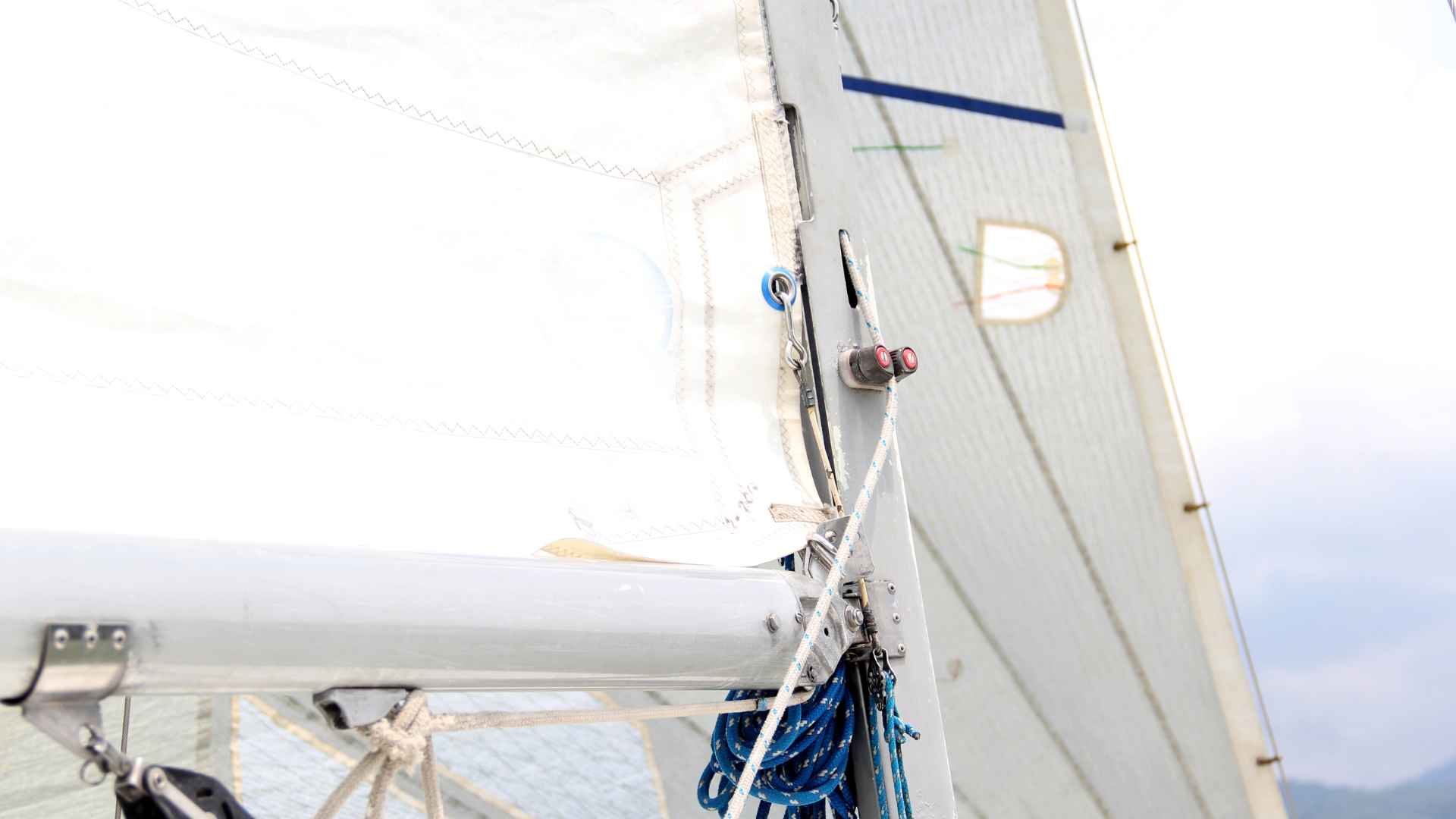
Sails, with their billowing canvas catching the wind, are the beating heart of a sailboat. They serve as the primary means of propulsion, transforming the invisible force of the wind into forward motion. The elegance and power of sails have allowed sailors to explore the world’s oceans for centuries, harnessing nature’s energy to embark on incredible journeys.
Sails come in various shapes and sizes, each designed to suit different sailing conditions and purposes. The mainsail is the largest and most significant sail, typically positioned behind the mast. It captures the wind from behind the boat and drives the vessel forward. Attached to the mast and boom, the mainsail can be adjusted to optimize its shape and angle to the wind, maximizing the boat’s speed and efficiency.
In addition to the mainsail, sailboats often have headsails, such as jibs or genoas, located near the bow of the boat. Headsails are smaller and more maneuverable than the mainsail, enhancing the sailboat’s performance and allowing it to sail closer to the wind. These sails are typically used in conjunction with the mainsail to provide additional power and control.
Specialty sails, such as spinnakers, are designed for specific sailing conditions and maneuvers. Spinnakers are large, colorful sails shaped like a balloon, which are used when sailing downwind or on a broad reach. They capture the wind from the front of the boat, significantly increasing the sail area and generating extra speed.
Sail controls play a vital role in managing the position, shape, and trim of the sails. Sail controls include various systems and mechanisms that allow sailors to adjust the sails to achieve optimal performance. These controls can include:
- Boom: The boom is a horizontal spar that extends aft from the mast and supports the foot (lower edge) of the mainsail. It helps control the shape and position of the sail.
- Traveler: The traveler is a movable track mounted on the deck or cockpit. It allows for lateral movement of the mainsheet and helps control the angle of the mainsail relative to the boat’s centerline.
- Cunningham: The cunningham is a control line attached to the luff (leading edge) of the mainsail. It allows sailors to tension the sail’s luff, flattening the sail and reducing its draft in stronger winds.
- Outhaul: The outhaul is a control line that adjusts the tension along the foot of the mainsail. By adjusting the outhaul, sailors can control the depth and shape of the sail.
- Reefing System: Reefing systems are used to reduce the area of the sails in strong winds. They allow sailors to partially lower or roll up the sails, reducing their overall size and power.
By skillfully adjusting these sail controls, sailors can optimize the shape, angle, and power of their sails, enabling them to sail efficiently, maintain control in varying wind conditions, and extract maximum speed from their sailboat.
Sails are not only functional but also beautiful, filling the horizon with their graceful forms. They capture the spirit of adventure, freedom, and the timeless allure of the sea. Understanding the intricacies of sails and their controls is essential for harnessing the wind’s power and unlocking the full potential of a sailboat’s performance.
Steering and Navigation
Steering a sailboat and navigating the waters require a combination of skill, knowledge, and the right equipment. Let’s explore the steering system, the role of the rudder, and the essential navigation instruments used on sailboats.
The steering system of a sailboat allows the helmsperson to control the direction of the boat. Depending on the boat’s design, you will find either a tiller or a wheel as the primary steering mechanism. The tiller is a long handle connected directly to the rudder, while the wheel is a circular device linked to a steering mechanism that transfers the movement to the rudder. By manipulating the tiller or turning the wheel, the helmsperson can steer the sailboat left or right, adjusting its course according to the wind and navigational needs.
The rudder, located beneath the waterline at the stern of the sailboat, plays a crucial role in maneuvering the boat. It is a vertical or horizontal fin-like structure that can be rotated from side to side. When the helmsperson steers the boat, the rudder responds, creating resistance against the water and redirecting the boat’s movement. By adjusting the angle of the rudder, the helmsperson can control the boat’s heading, making it possible to tack (change direction across the wind) or jibe (change direction with the wind from behind). The rudder is a fundamental component of sailboat control and is critical for maintaining stability and maneuverability.
In addition to steering, navigation instruments and equipment are essential for safe passage on the water. Here are a few key tools commonly found on sailboats:
- Compass: A compass is a navigational instrument that indicates the boat’s heading in relation to magnetic north. It provides a reliable reference point for maintaining a desired course and navigating with accuracy, even in the absence of electronic devices.
- GPS (Global Positioning System): GPS is a satellite-based navigation system that allows sailors to determine their precise location on the earth’s surface. GPS units on sailboats provide real-time positioning, speed, and course information, enhancing navigational accuracy and safety.
- Depth Sounder: A depth sounder, also known as a depth finder or echo sounder, measures the depth of the water beneath the sailboat. It helps sailors avoid shallow areas or underwater hazards, ensuring safe navigation.
- Charts: Nautical charts are maps specifically designed for navigation on the water. They provide important information about water depths, navigational aids, landmarks, and other details essential for planning and following a safe course. Charts are still a valuable tool, even with the advent of electronic navigation systems.
These are just a few examples of the many navigation instruments and equipment available to sailors. Depending on the complexity of the sailboat and the navigational requirements, additional tools such as radar, AIS ( Automatic Identification System ), wind instruments, and electronic chart plotters can also be found onboard.
Steering the sailboat and navigating the waters require a combination of traditional seamanship skills and modern technology. By mastering the steering system, understanding the role of the rudder, and utilizing navigation instruments effectively, sailors can confidently explore the seas, navigate challenging environments, and reach their destinations safely and efficiently.
Auxiliary Power and Safety Equipment
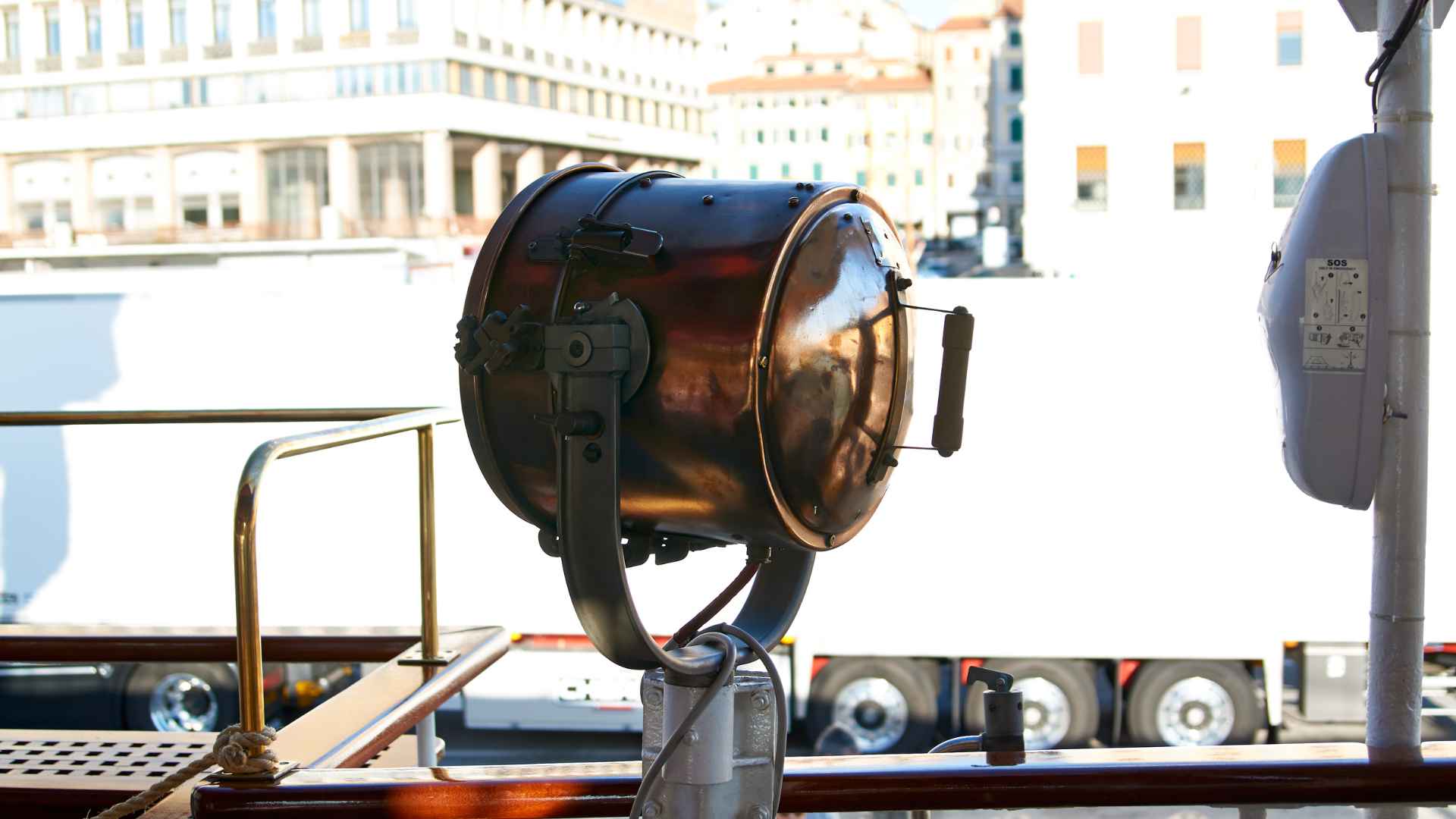
While sailboats primarily rely on the power of the wind to propel them, many sailboats are equipped with auxiliary power systems to provide additional maneuverability when needed. These auxiliary power systems typically consist of either an inboard or outboard engine.
An inboard engine is integrated into the hull of the sailboat and is positioned below deck. It offers advantages such as increased power, better fuel efficiency, and reduced noise compared to outboard engines. Inboard engines are typically larger and provide more torque, making them suitable for larger sailboats or those that frequently navigate in challenging conditions or against strong currents.
On the other hand, outboard engines are portable and mounted externally on the stern of the sailboat. They are versatile, lightweight, and easy to maintain. Outboard engines are popular among smaller sailboats or those that require occasional motorized propulsion.
The auxiliary power system, whether inboard or outboard, serves as a backup when wind conditions are light or during precise maneuvers in tight spaces, such as docking or maneuvering in crowded marinas. It provides sailors with increased control and helps ensure the safety of the vessel and its occupants in situations where sail power alone may be insufficient.
In addition to auxiliary power, ensuring the presence of proper safety equipment is crucial for any sailboat. Safety equipment helps to mitigate risks and ensure the well-being of everyone on board. Here are some essential safety items that should be present on a sailboat:
- Life jackets: Every person on board should have access to a properly fitting life jacket or personal flotation device (PFD). Life jackets are designed to keep individuals afloat and provide buoyancy in case of accidental falls overboard or emergencies.
- Fire extinguishers: Sailboats should be equipped with fire extinguishers suitable for extinguishing different types of fires. It’s important to have them readily accessible in case of a fire onboard.
- Distress signals: Distress signals, such as flares or electronic signaling devices, are crucial for attracting attention and signaling distress in emergency situations. These signals can aid in alerting nearby vessels or rescue services for assistance.
- Navigation lights: Sailboats must have properly functioning navigation lights, especially when operating during low visibility conditions or at night. Navigation lights allow other vessels to identify the sailboat’s position and determine the direction it is heading.
Complying with boating regulations regarding safety equipment is not only a legal requirement but also crucial for the well-being and security of everyone on board. It is essential to regularly inspect and maintain safety equipment to ensure it is in proper working condition and easily accessible in case of an emergency.
By understanding the role of auxiliary power systems and prioritizing the presence of essential safety equipment, sailors can navigate with confidence, knowing they have the necessary resources to handle various situations that may arise during their sailing adventures.
As we continue our journey through the anatomy of a sailboat, we uncover more elements that contribute to the joy and safety of sailing. Join us as we delve further into the intricacies of sailboat components and explore the secrets that make sailing a remarkable and secure experience.
Watch Parts of the boat and what they do | Video
Top 5 FAQs and answers related to What are the parts of a sailboat
What is the purpose of the mast on a sailboat .
The mast is the tall vertical structure on a sailboat that supports the sails. Its main purpose is to capture and harness the power of the wind, providing propulsion to the sailboat.
What are the different types of sails on a sailboat?
Sailboats have various types of sails, including the mainsail, headsail (jib/genoa), and specialty sails like spinnakers. The mainsail is the primary sail attached to the main mast, while the headsail is located at the front of the boat. Spinnakers are large, lightweight sails used for sailing downwind.
What are some important sail controls on a sailboat?
Sail controls play a crucial role in adjusting the shape and angle of the sails for optimal performance. Key sail controls include the boom, traveler, cunningham, outhaul, and reefing systems. The boom holds the foot of the mainsail, while the traveler allows sideways movement of the boom. The cunningham, outhaul, and reefing systems help control the tension and shape of the sails.
What is the purpose of the rudder on a sailboat?
The rudder is a vital component located beneath the waterline at the stern of the sailboat. Its primary purpose is to steer and maneuver the sailboat by redirecting the flow of water, allowing the helmsperson to control the direction of the boat.
What safety equipment should be on a sailboat?
Essential safety equipment on a sailboat includes life jackets or personal flotation devices (PFDs) for all passengers, fire extinguishers, distress signals such as flares or electronic signaling devices, and navigation lights. These items help ensure the safety of the crew and comply with boating regulations.
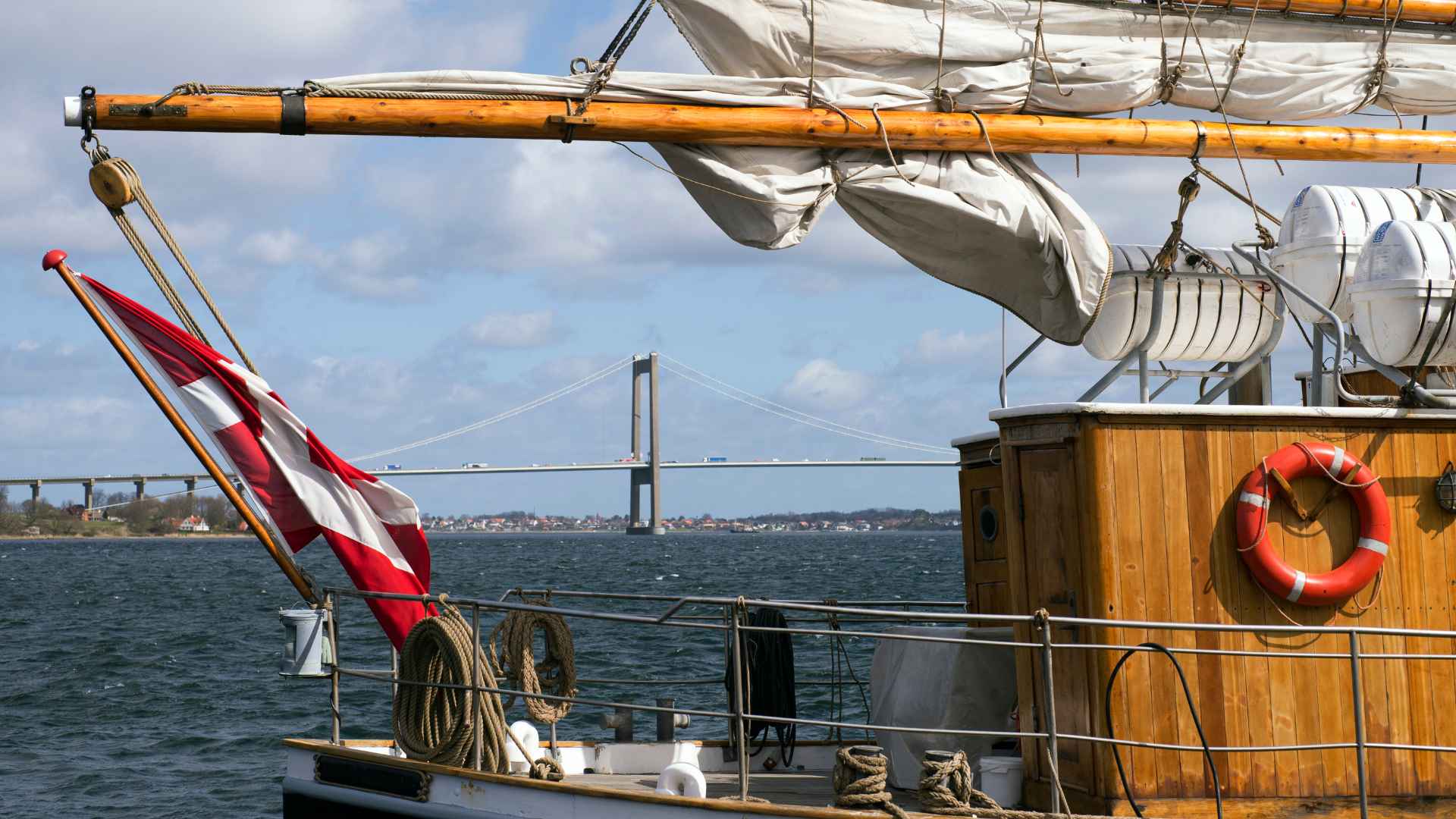
Understanding the various parts of a sailboat is fundamental to appreciating the art and science of sailing. From the sturdy hull and towering mast to the intricate rigging, sails, and navigation equipment, each component plays a vital role in the operation and performance of a sailboat.
We have explored the different types of hulls, the significance of the mast and rigging, and the versatility of sails and sail controls. We have also touched upon the importance of steering systems, the role of the rudder, and the essential safety equipment necessary for a safe and enjoyable sailing experience.
By recognizing the interconnectedness of these parts, we gain a deeper appreciation for the synergy between wind, water, and the intricate machinery of a sailboat. The thrill of harnessing the wind and propelling a vessel through the water becomes all the more captivating.
Whether you aspire to be a sailor, are already familiar with sailboats, or simply have a curiosity for the sea, there is always more to learn and discover. Dive into the world of sailing, explore the intricacies of sailboat design, and embrace the countless adventures that await on the open water.
So, hoist your sails, trim your sheets, and set a course for a lifetime of discovery. Let the wind guide you as you embark on your own sailing journey, where the beauty of nature and the art of sailing unite in a symphony of motion and tranquility.
Share What Are the Parts of a Sailboat and What They Do? Guide with your friends and Leave a comment below with your thoughts.
Read Is Boat Insurance Required in Michigan: Boat Owners Guide until we meet in the next article.
Similar Posts

What Does HMS Mean on a Ship?
The maritime world is a realm of immense significance, connecting continents, facilitating trade, and embodying a rich tapestry of history and innovation. Within this intricate domain, ship terminology serves as the foundation for clear communication and seamless operation. Often peppered with acronyms, these terms create a unique language understood by those who navigate the high…
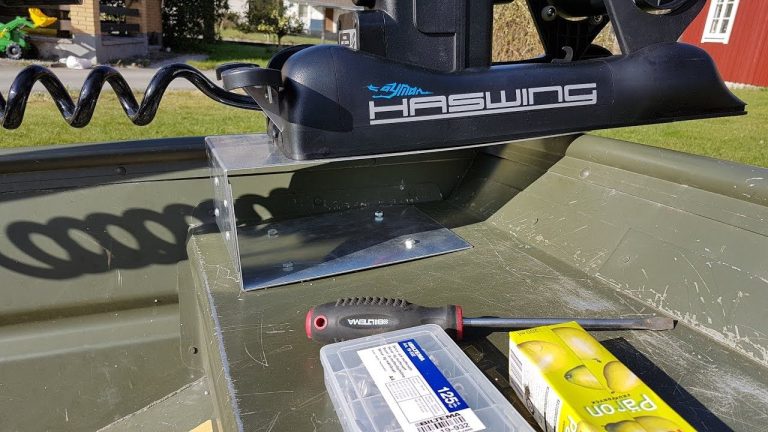
Homemade Bow Mount Trolling Motor Bracket: A DIY Guide
Imagine being out on the water, gliding smoothly towards your favorite fishing spot, guided by your very own homemade bow mount trolling motor bracket. Not only does it offer the satisfaction of a DIY project, but it also presents a practical and cost-effective solution for boaters looking to enhance their trolling motor setup without breaking…
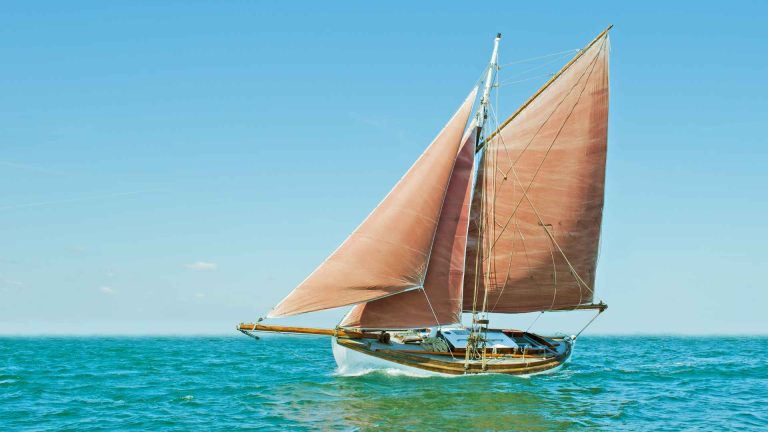
How Much Is Wind Too Much for Boating: Safe Boating Guide
Picture yourself cruising along the open waters, the sun shining down, and the wind gently brushing against your face. Boating is a thrilling and liberating experience that allows us to connect with nature and create lasting memories. However, amidst the excitement, it’s essential to recognize the crucial role that wind plays in boating safety. Understanding…
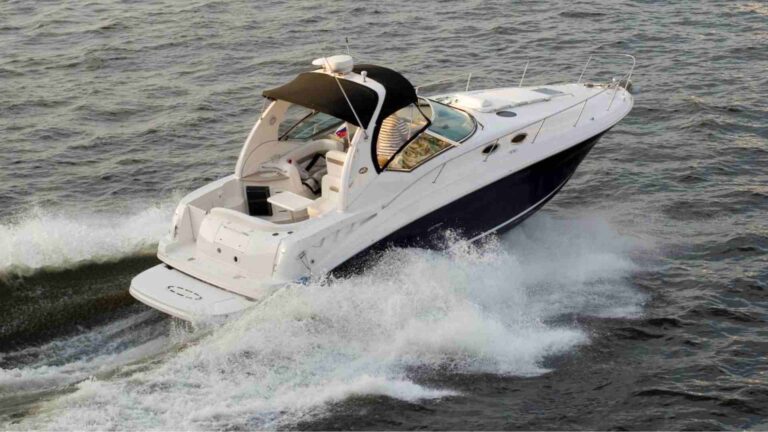
What Determines If a Speed Is Safe for Your Boat?
The allure of the open water beckons boat enthusiasts to venture forth, seeking adventure and tranquility amidst the vast expanse. While the thrill of speeding across the waves is undeniable, it’s paramount to remember that safety should always be the top priority. Determining a safe speed for your boat is not a one-size-fits-all approach; it…
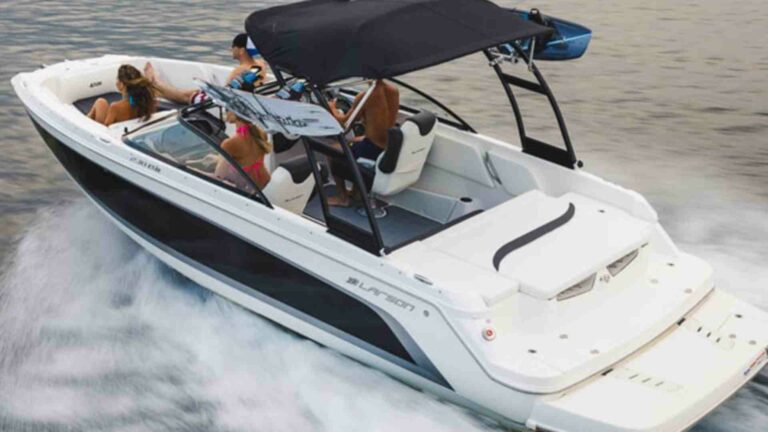
Are Larson Boats Good & Reliable Enough to Own?
Larson boats, with their sleek lines and diverse offerings, often tempt both seasoned captains and recreational boaters seeking adventure on the water. But before casting off with a Larson, let’s dive deep into the murky waters of reputation and reality, asking the crucial question: are Larson boats good and reliable enough to own? Sunlit Shores…
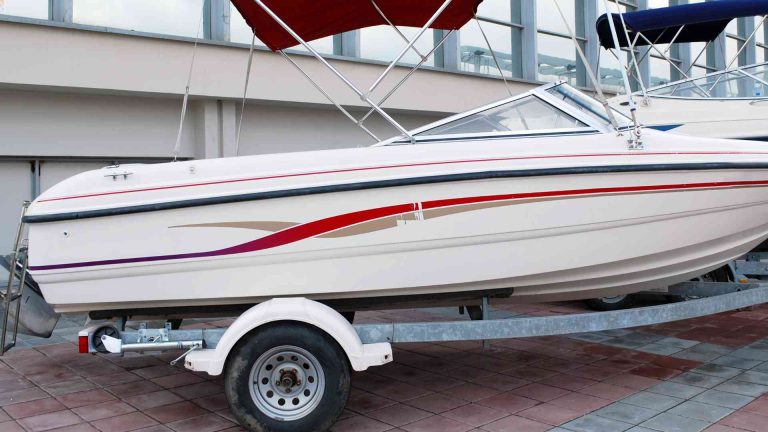
9 Key Considerations When Selecting Boat Trailer Tires
Setting out on the water, with the boat hitched securely to its trailer, is a moment of anticipation and excitement for any boating enthusiast. Yet, amidst the thrill, there’s a vital component that often remains unsung but holds immense importance: the boat trailer tires. These unassuming circles of rubber are the unsung heroes of towing,…

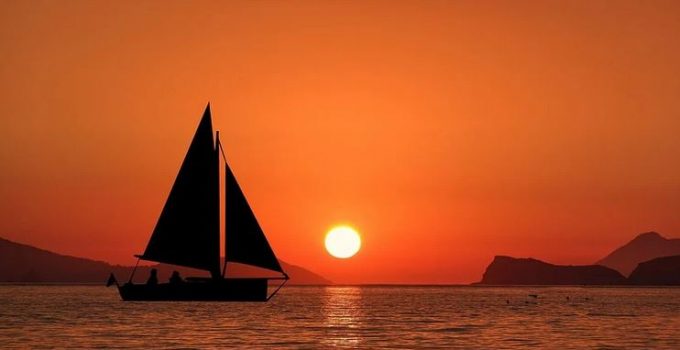
Parts of a Sailboat: The Definitive Guide
Sailing is a sport that has a lot of terms that may sound like a foreign language. Port, Starboard, beam, stern, bow, etc. Some of these terms, you might have heard of before, but many of them will be new to you.
Below Are Some Of The Most Basic Parts Of A Sailboat:
Below I have discussed some most basic parts of a sailboat that are found common in almost all kinds of sailboats.
Port side – This is the left side of the boat when viewed from the back of the boat looking forward.
Starboard side – This is the right side of the boat when viewed from the back of the boat looking forward.
Stern – This is the rear of the boat.
Bow – This is the front of the boat.
Beam – This is the widest point of the boat.
LOA – Length Overall – Length of the boat at its longest point. Most of the time, the boat is longer above the water than it is at the waterline and below.
Cockpit – This is the part of the boat where the crew sits when riding in the boat. This is usually in the rear of the boat but could be in the center, depending on the style of the boat.
Rudder – Located below the waterline and connected to the stern of the boat, this is used to make the boat turn. It is connected to either a steering wheel or a tiller. When the rudder is turned from side to side, it changes the angle that the water flows under the boat. This change in the direction of the water flow is what makes the boat turn.
Tiller – This is usually a wooden lever or arm that is connected to the rudder and allows you to turn the boat.
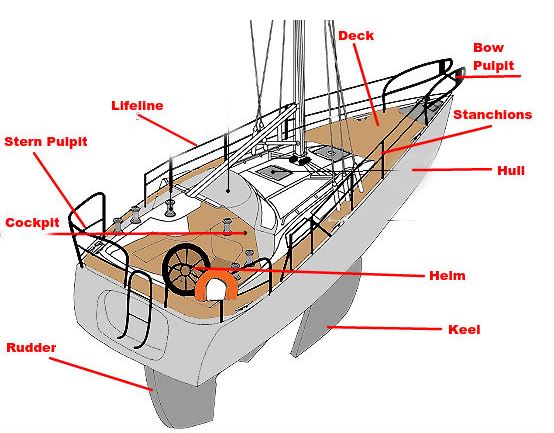
Helm – This is the area of the boat where the person who is piloting the boat is either sitting or standing.
Helmsman – The person that is piloting the boat and at the helm.
Steering wheel – This is connected to the rudder via cables or pulleys and is used in place of a tiller to steer the boat.
Hull – This is the entire body of the boat.
Deck – This is the flat surface on the top of the boat.
Keel – This is a fin connected to the bottom of the sailboat. The keel is weighted and provides a counterbalance to the sail and the wind blowing against the sail. Without this keel, the boat would tip over when the wind blew against it. The keel comes in many shapes and sizes and does several other important things to allow you to sail better, these will be covered in other posts.
Bow Pulpit – This is the metal tubing that surrounds the bow (front) of the boat.
Stern Pulpit – The metal tubing that surrounds the stern (rear) of the boat.
Lifeline – A wire cable running from the bow pulpit to the stern pulpit and connected to the deck in several different locations. This is a safety feature designed to keep people from falling off the deck of a sailboat.
Stanchions – Two-foot tall metal tubing that is used to connect the lifeline to the deck.
Some Specific Parts of a Sailboat
For this next part, I am going to talk about what is above the deck, the rigging. The rig includes the sails, the supporting cables, and everything that controls all of this. These are the parts of a sailboat that make it a sailboat and not just a mere boat.
Everything we went over, prior to this, had fairly normal, easy-to-remember names. Now we are going to learn about some more complicated sounding parts of a sailboat. Even though the names are complicated, it is stuff that you will use every time you sail, so it will be easy to remember. Ready? Great, let’s learn more!
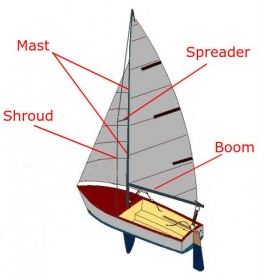
Mast – This is the main part of the sailboat that makes it look like a sailboat and also pretty much everything else is attached to it.
Boom – The horizontal beam that extends out from the mast towards the stern (rear) of the boat.
Standing Rigging – In order for the mast and the boom to remain upright, something has to hold it up. This is what the standing rigging does. Many of the cables that you see on a sailboat are only there to help hold the mast up.
Shrouds – These are the cables that run down the port (left) and starboard (right) side of the mast. These keep the mast from falling to the left or right. They are attached to the deck on the sides of the boat. Sometimes there are upper and lower shrouds, depending on the height of the mast.
Spreaders – These are attached to the mast about halfway down and push the shrouds out further than they would be if they were attached straight down to the deck. This provides a more effective angle of support for the shroud.
Chainplates – These are plates on the deck that provide a great anchor for the shrouds, and stays, to attach too. Without these, it would be hard to attach a cable to the deck and it not get ripped out.
Backstay – This is a wire cable that runs from the top of the mast to the stern (rear) of the boat. This keeps the mast from falling forward.
Forestay (aka Headstay) – This is a wire cable that runs from the top of the mast to the bow (front) of the boat. This keeps the mast from falling backward.

Mainsail – This is the large sail that is attached to the mast and the boom. This sail is usually the first sail raised and does the majority of the work when sailing.
Batten – These are either plastic, wood, or possibly fiberglass. They are inserted into pockets on the mainsail and are used to help shape the sail. We will discuss why the shape of the sail is important in another post.
Jib – This is a sail that is attached to the forestay (head stay). There are many different sizes of sails that can go on this forestay, depending on the type of sailing being done or the weather. This sail is a very important sail and is used almost as much as the mainsail.
Roller Furling Drum – This is a tube that fits over the forestay and one end of the jib is inserted inside it. This gives the sailor the ability to roll up the jib and wrap it around the forestay for storage. This is the easiest way to store the job when not in use. Some newer masts are actually using a similar system for the mainsail, but that is only for the newer boats.
Gooseneck – This is a turnbuckle that attaches the boom to the mast. The boom is not attached in a fixed manner, it uses this buckle to allow it to move around and be somewhat flexible. The problem with this is that it also allows the boom to be pulled up when the sail is full.
Boom Vang – This is a series of pulleys and ropes that are used to hold the boom down when the sail is full. This helps the gooseneck be flexible without allowing the boom to just fold up.
Boom Topping Lift – This is a wire cable that runs from the top of the mast all the way down the mainsail to the boom. It attaches to the end of the boom and keeps the boom from falling down. So the Boom Vang keeps the boom from going up and the Topping Lift keeps the boom from falling down.
Now you know a lot more about the rigging used on a sailboat. You can see that these terms are strange for a novice sailor to learn, but trust me, you get used to them, it just takes practice. There are more parts, but I want to go over those parts in more detail in other posts.
I know I was overloaded when I first went to training and wished I had spent more time learning these terms. Sailing class is much more fun when you can learn to sail and not have to worry about what they are talking about!
Do you have more to add about the parts of a sailboat or do you have a question about this post? Please leave a comment and make this post even better and more educational.
Related Posts

Nevertheless it was not until 2008 that the group received approval to refurbish and develop the resort. Greta Horst Boynton
Save my name, email, and website in this browser for the next time I comment.

Parts of a Sailboat

Last Updated by
Daniel Wade
September 28, 2022
Sailboats share many parts with other boats, such as keels, decks, and sometimes engines. But parts like halyards, sheets, and blocks are unique to sailboats.
Sailboats require four main parts to operate: a hull, mast, sail, and rudder. The hull is the body of the boat, and all other parts are directly or indirectly connected to it. The mast is a long pole that serves as a guide and mounting point for the sail. The sail catches the wind and propels the boat, and the rudder directs the boat and acts as its steering.
Here are all the main parts of a typical cruising sailboat , including hardware, lines, controls, cabin items, and a rundown of common sailing terminology.
Table of contents
Port, Starboard, Bow, Stem, and Stern
Before we get into the parts of a sailboat, let’s get a handle on sailboat direction. The bow of the boat is the front (forward), and the stern is the rear (aft). The stem is the forward-most part of the bow and determines its shape. These words describe the general area of front and back.
When determining port and starboard, picture looking down on the boat with the bow oriented forward. The port side is the left side of the boat, and the starboard is the right side. Now picture yourself at the controls of your boat.
If your lookout sees an obstacle off the port bow, which direction should you look? That’s right—the obstacle is forward and to the left of you. Now, we’ll go over the basic parts of a sailboat.
Basic Parts of a Sailboat
What are the basic parts of a sailboat? These are items that are essential to the operation of the boat and universal across most sailing craft. Every sailor should know where these parts are and what they do. Here are nine fundamental sailboat parts, their function, and why they’re important.
The hull is the ‘boat’ itself. It comprises the frame of the boat, the skin that keeps the water out and serves as the mounting point for everything else on the boat (both directly and indirectly). Simply put, if you punch a hole in the hull, water will come into the boat. Sailboat hulls are constructed most commonly out of fiberglass or hardwood (such as white oak), but some boat hulls are made out of aluminum, steel, and even a material called ferrocement.
The deck is the platform that covers the hull. It’s the place where you walk when you’re not inside the boat. Most people would consider the deck as any place ‘on top’ of the hull. The deck serves as a mounting point for essential boat hardware such as the mast and winches. We’ll get into those later; just think of the deck as the visible top area of the vessel. Decks are often made of fiberglass as well, but traditional boats use teak wood planking in this area. You’ll often find abrasive anti-slip material on the deck, as sailors often walk across it in wet conditions.
The keel is the structural backbone of the boat. It’s located in the bottom of the hull and serves as a sort of ‘spine’ to which all frame members are mounted during construction. The keel is an essential part of the boat and cannot be broken or damaged. You’ll often hear the term ‘keelboat’ in the sailing community. This word describes a sailboat with a long and deep keel, which is like a thin fin that runs the length of the hull. Keelboats are seaworthy vessels, as the elongated hull adds stability and keeps the boat on a straight track.
Centerboard
Many sailboats don’t have a long, deep keel, but they still need some sort of fin to keep the boat tracking straight. To substitute a long keel, many boats utilize a dagger-like board called a centerboard . This plate protrudes underneath the center of the boat, usually between one and three feet below the bottom of the hull. Centerboards are often retractable, which is great for towing and beaching. Centerboards are most common on small sailboats designed for inland or coastal cruising.
The cockpit is usually located in the rear of the boat. It features seating for the crew and controls for the steering, sails, and engine. The cockpit is the command center of the sailboat and often features storage lockers under the seats. Many cockpits are self-draining, which means they’re located above the water line and clear themselves of water accumulation. Some sailboats have enclosed cockpits for off-shore sailing. In a typical cruising sailboat , the cockpit usually takes up ⅓ of the total length of the boat or less.
The mast is the big pole extending from the deck of the sailboat. It connects the sail to the boat and serves as a frame for all sails carried by the vessel. The mast is a key part of the sail plan and helps determine what kind of boat you’re looking at. Most sailboats have just one mast, but others have numerous masts. A schooner, for example, has two masts and a specific sail plan. A yawl also has two, but each mast serves a separate function.
The rudder steers the boat and is located on or under the stern of the vessel. Rudders are an essential part of the boat, and they’re particularly sensitive to impact or misalignment. On some boats, the rudder is completely invisible when in the water. Other boats have retractable rudders for beaching or towing. Fundamentally, a rudder is just a plate that’s hinged to move side to side. It’s connected to the tiller or the helm, which we’ll cover in a bit.
The sail is what propels the boat, and most boats have more than one. The aft (rear) sail on a single-masted boat is called the mainsail , and it’s the largest of the two primary sails. The triangular forward (front) sail is called the jib, and it’s generally smaller than the mainsail. Other sails include the spinnaker, which is like a loosely-mounted parachute that flies in front of the boat during conditions of low wind.
The boom is a hinged rod that extends perpendicular to the mast. It’s mounted on the lower part of the mast, and it controls the side-to-side position of the mainsail. The best way to remember the boom is to consider what happens when it swings side to side. If you’re not paying attention, a swinging boom could give you a nice crack on the head. Think of the boom as the throttle of the boat. If you’re properly pointed relative to the wind, pulling in the boom will increase the speed of the boat. This is where the bottom of the sail connects to the mast. The boom is also connected to the deck and adjustable using a winch and a crank.
Here is some of the hardware you’ll find on a typical sailboat. These items are usually mounted to the hull, on the deck, or to the mast. Boat hardware consists of control systems and other items that are essential to the operation or integrity of the boat.
Cleats are the universal mounting points for ropes on the deck. Cleats are used for tying up to the dock, securing lines, and tethering important items that can’t fall overboard. There’s a special kind of knot called a ‘cleat knot,’ which is essential to learn before sailing. A properly tied cleat will stay secure in almost all conditions, and it’ll be easy to untie if the need arises. An important distinction must be made for clam cleats, which are spring-loaded sets of jaws that secure rigging lines that need to be adjusted frequently.
Block is a nautical word for a pulley. Blocks (pulleys) are everywhere on a sailboat, and they’re an essential part of the rigging system. Blocks distribute and regulate force. For example, a deck-mounted block can change the direction of a line from vertical to horizontal, allowing you to apply a horizontal force to lift something vertically. Blocks also reduce the force required to lift heavy loads and help make adjustments more precise.
Winches are cylindrical mechanical devices that transmit force. Winches are often located on either side of the boat. They’re multi-directional like a socket wrench and feature one-way locking mechanisms for raising, lowering, tightening, and loosening lines. Winches have a hole in the top for a crank, which makes it easy to wind rope in and out. Winches are present on almost every medium to large sailboat. They’re either manual or electrically-powered.
A hatch is a watertight or water-resistant door used to enter the cabin or storage compartment of a boat. Hatches can be flush with the deck and hinged, threaded like a large screw, or they can slide back and forth. The purpose of a hatch is to keep water out when closed and allow easy access to the interior parts of the boat.
Tiller and Helm
The tiller and helm are used to control the direction of the rudder and steer the boat. Usually, a boat has either a tiller or a helm. The tiller is the most basic steering control and consists of a simple rod connected to the rudder or rudder shaft. Tillers move side to side and point in the opposite direction that the boat steers. The helm is essentially a steering wheel, and it operates the same way that a car steering wheel does. The helm is connected to the rudder by complex mechanical or hydraulic linkage.
Mast and Sail Components
Mast and sail components are referred to as ‘rigging’ in most cases. These items are part of the wind-powered propulsion system of the boat. You’ll operate these systems to control the speed of the boat. Here are three common sail components that you’ll need to understand before hitting the water.
Stays are the lines that secure the mast to the boat. Usually, the mast is bolted or tied to the deck of the boat; but much of the load and pressure created by the wind is transferred to the stays. Stays are usually made of strong stainless steel cable. Losing a stay at sea is a serious problem, as these small cables keep the mast from collapsing.
Halyards are the ropes used to hoist and lower the sail on the mast. They also hoist flags, spars, and other components that need to be raised and lowered. Halyards are usually found on the mast and are fixed to cleats or winches around the boat.
Sheets and halyards are often confused, but they serve a very different function. Sheets are the control lines of the sail. These ropes control how far in or out the sail is, and they’re usually found connected to the jib (jib sheet) and the mainsail (mainsheet). Sheets are controlled by winches and blocks and secured onto cleats or clam cleats on the deck. Sheets can be controlled from the cockpit of the boat.
Navigation components are the parts of the sailboat used to find direction and alert other boats of your position. These four items aren’t the only navigation items found on sailboats, but they’re the most common.
This item should be self-explanatory, but it’s essential nonetheless. A compass is arguably the most basic and important marine navigation item. It shows you what direction you’re heading. Sailboat compasses are precise instruments designed to display an accurate heading no matter how much the boat rolls up and down or side to side. Compasses are usually mounted in the cockpit, in clear view of the captain.
Charts are old-fashioned navigational tools and indicate important information such as water depth and the location of ship channels. Learning to read and purchasing charts is essential, even in the age of modern GPS navigation. When all else fails, a chart can help guide you and your vessel to safety and away from hazardous areas. No electricity is required.
Navigation Lights
Navigation lights are mandatory beacons located around the boat. These lights help other boats figure out where you are and where you’re going. Sailboats are required to have red and green bow lights. Red indicates port, and green indicates starboard. This is how boats determine if they’re looking at your bow or stern. Other lights, such as a white stern light, a mast light, are also necessary during specific circumstances. Check your state requirements for lighting.
VHF radios are the standard marine over-the-air communication system. You can use a VHF radio to communicate with the coast guard, other boats, harbors, towing services, and drawbridges. It’s important to learn and write down the specific channels and call signs for each situation, as you need to be able to properly communicate on the radio.
The cabin is the ‘below decks’ area of the sailboat and usually contains living quarters for the captain and crew. Not all boats have cabins, and cabin size varies widely. Some sailboats have rudimentary cabins with basic sleeping accommodations and sitting headroom. Other boats have full standing headroom, shower and wash facilities, full-size kitchens, and separate staterooms for sleeping and sitting. The cabin is usually located forward of the cockpit. Here are some common sailboat parts located within the cabin.
The berth is the sleeping area of a boat. Berths are often convertible, which means they fold or rearrange into a table and seating area. There are numerous kinds of berths. The ‘V’ or ‘vee’ berth is a triangle-shaped sleeping area located in the bow of the boat. Side berths typically convert into couches or settees, and pole berths are essentially cots that roll up and stow away easily.
The bilge is the bottommost interior part of the boat. It’s usually located under the floor in the cabin. When water finds its way into the boat, it drains down to the bilge and gets pumped out by bilge pumps. Bilge pumps are an essential piece of hardware, as they keep the boat dry and prevent sinking. Some boats have a wet bilge, which means it’s always full of water (and supposed to be). Most boats have a dry bilge.
Portlights are watertight windows located in the upper part of the cabin. They can usually be opened or secured using threaded latches. Portlights are generally smaller than traditional portholes and offer a watertight barrier between the inside and outside of the cabin. They’re also useful for ventilation.
Gimballed Utilities
A gimbal is a special type of hinge that keeps an item vertical when the boat rolls. Oil lamps are commonly fitted to gimbals, so they stay upright when the boat bobs around. Stoves are also gimballed, which is extremely useful for cooking or boiling water when the weather gets rough.
Head is the nautical term for a toilet. Most medium-sized sailboats have compact wash facilities that sailors refer to as the ‘head,’ or a porta-potty at the bare minimum. A sailboat’s bathroom usually consists of a marine toilet, a sink, and often a shower with a drain in the floor.
Related Articles
I've personally had thousands of questions about sailing and sailboats over the years. As I learn and experience sailing, and the community, I share the answers that work and make sense to me, here on Life of Sailing.
by this author
Sailboat Parts
Learn About Sailboats
Most Recent

What Does "Sailing By The Lee" Mean?
October 3, 2023

The Best Sailing Schools And Programs: Reviews & Ratings
September 26, 2023
Important Legal Info
Lifeofsailing.com is a participant in the Amazon Services LLC Associates Program, an affiliate advertising program designed to provide a means for sites to earn advertising fees by advertising and linking to Amazon. This site also participates in other affiliate programs and is compensated for referring traffic and business to these companies.
Similar Posts

Affordable Sailboats You Can Build at Home
September 13, 2023

Best Small Sailboat Ornaments
September 12, 2023

Discover the Magic of Hydrofoil Sailboats
December 11, 2023
Popular Posts

Best Liveaboard Catamaran Sailboats
December 28, 2023

Can a Novice Sail Around the World?
Elizabeth O'Malley
June 15, 2022

4 Best Electric Outboard Motors

How Long Did It Take The Vikings To Sail To England?

10 Best Sailboat Brands (And Why)
December 20, 2023

7 Best Places To Liveaboard A Sailboat
Get the best sailing content.
Top Rated Posts
Lifeofsailing.com is a participant in the Amazon Services LLC Associates Program, an affiliate advertising program designed to provide a means for sites to earn advertising fees by advertising and linking to Amazon. This site also participates in other affiliate programs and is compensated for referring traffic and business to these companies. (866) 342-SAIL
© 2024 Life of Sailing Email: [email protected] Address: 11816 Inwood Rd #3024 Dallas, TX 75244 Disclaimer Privacy Policy
Sailboats Explained
"...let us tell you the story of a sailing boat..."
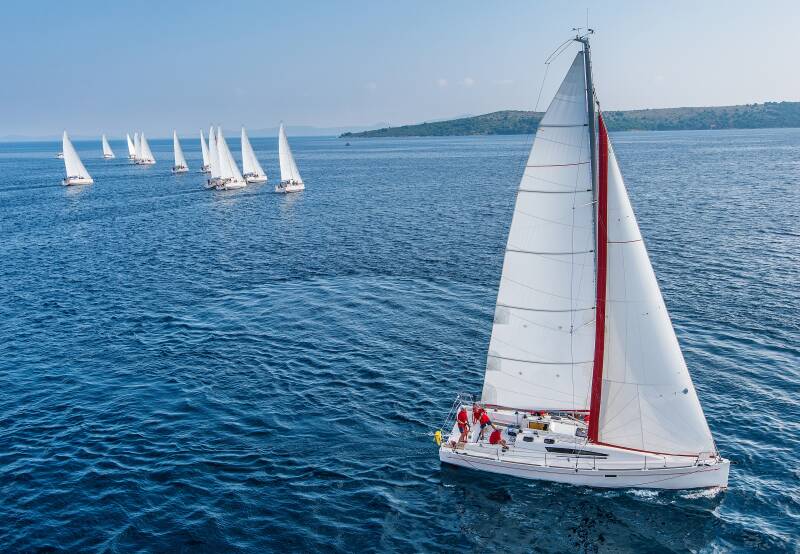
Stern, Helm, Bow and Sides of a Sailboat
When approaching a sailing yacht , you will notice its basic shapes and curves, front and back of a boat, a big pole in the middle, etc. So, let’s start with those basic parts of a sailboat. In Mediterranean countries, yachts will mostly be docked with their back part to the shore or peer. That back of a boat is called a stern . Yachts have a little bridge on the stern which helps you enter from the peer, and that bridge is called passarella in sailor slang.
On a sailing yacht, you will find one of its basic parts - the steering wheel on the stern of the yacht, and the correct sailing term for the wheel is the helm. Grab the helm and face forward toward the front of the sailing yacht. The front part of the sailing yacht is a bow , the right side is starboard side , and the left side is port side. The cockpit, located in the front, around and behind the helm, serves as a space for relaxation, dining, and recreational activities with the skipper, and is an important part of understanding parts of a sailboat and the front and back of a boat.
Cockpit and Mast of a Sailboat
While sailing, a cockpit area is the part of a sailboat that is turned into a workspace for sailors. The big pole that rises over the sailing yacht is a mast and the other pole that is connected under 90 degrees to the mast is a boom . It is called the boom since it can hit you in the head in some conditions, and at that point you will just hear a “boom”, so you need to always be careful while sailing as well as familiarize yourself with sailboat diagrams. While you are still at the helm, you can learn some more about boats. Right in front of you or on your sides you will find round devices around which ropes are wrapped. These devices are called winches and are used to lift sails and all kinds of heavy objects.
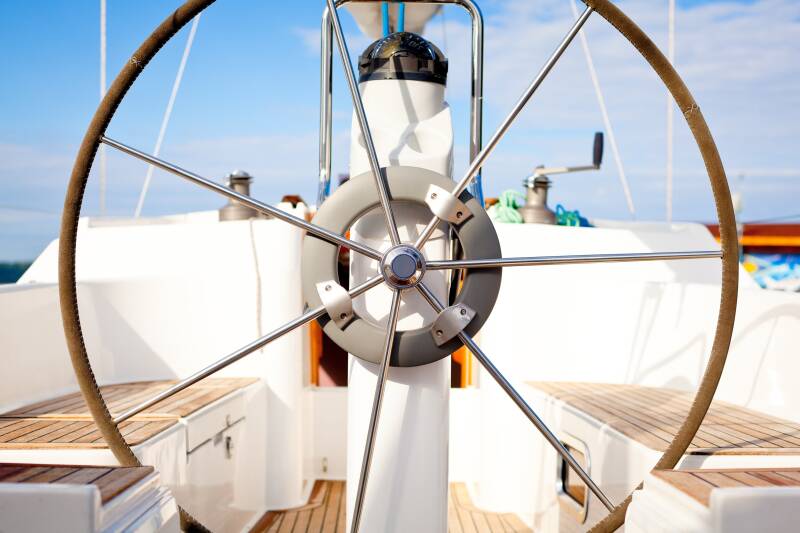
Find a sailboat in your dream destination
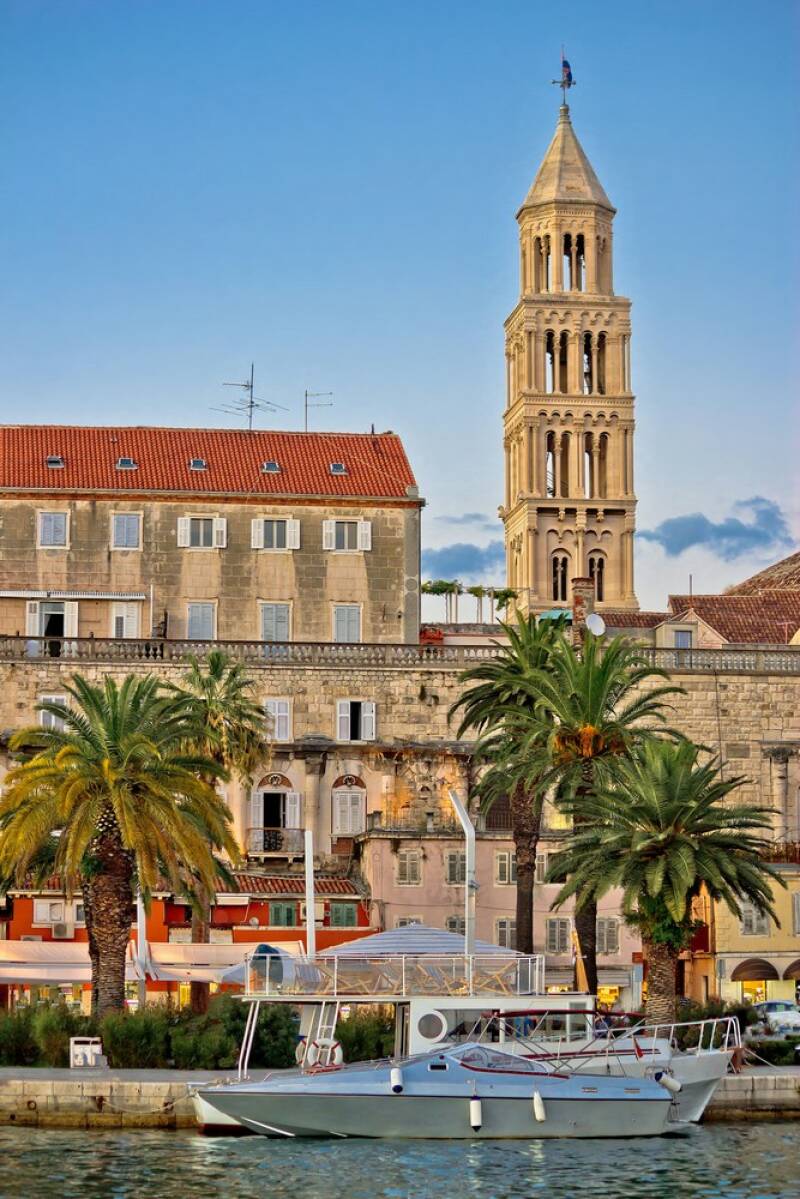
Discover sailboats in Croatia

Discover sailboats in Greece

Discover sailboats in Italy
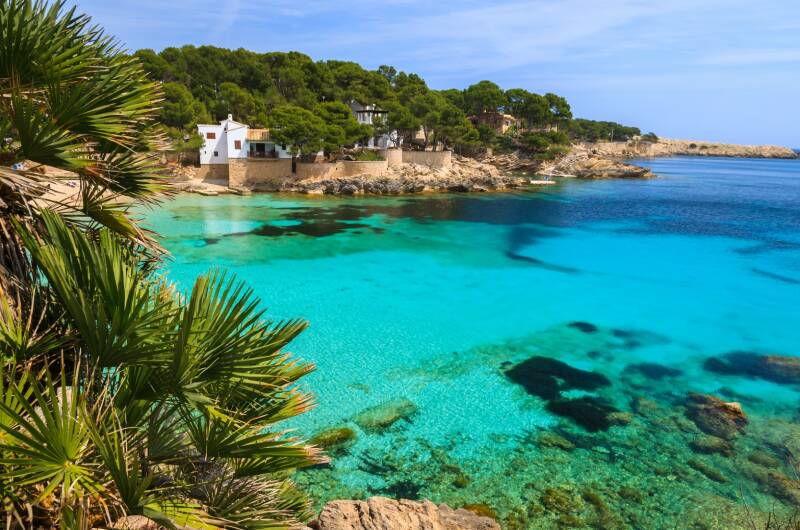
Discover sailboats in Spain

Discover sailboats in Turkey
The saloon area of a sailboat.
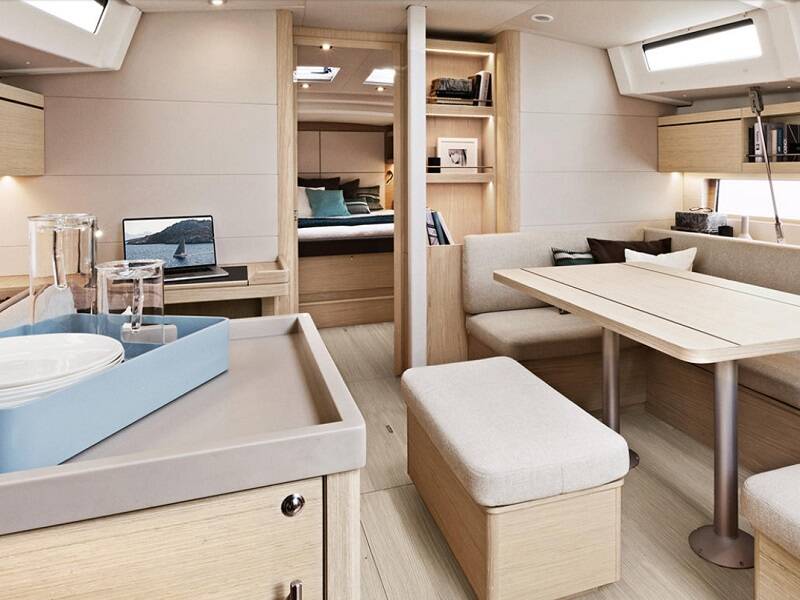
Once you enter the interior part of a sailboat, you will find yourself in the saloon area. This is a common gathering space for the crew. Within the saloon, you will find the galley or kitchen , which is equipped with all the necessary appliances for cooking. There is also a captain's desk that is equipped with navigation charts , electrical switches, tools , and safety equipment . These are all basic parts of a boat interior, used for sailing and navigation.
Further toward the bow, you have sofas for relaxation which can be used as a dining area. One thing about boats is that those sofas can be combined with a table and be converted into additional berths/beds for your guests.
Cabins in the Bow and Stern of a Sailboat
In the bow area of a sailboat, you will find one, two, or even three cabins , depending on the size of the yacht. These cabins are designed to provide a comfortable sleeping space for the crew. The cabins can have a double bed or bunk beds, so in each case, two people can fit comfortably per cabin. In the stern of the yacht, there are also one or two cabins, depending on the size and design of the sailboat. These cabins are also an important part of the sailboat, providing accommodation for crew members while sailing.
Halyards, Types of Sails, and Sheets of a Sailboat
Now when you know the basic parts of a sailboat, we can leave the port and sail out into freedom, which one can experience only while sailing the open seas. To lift the sails up, we will be using halyards , ropes which are connected to the sails on one side and to the winches on the other side, enabling us to lift the sails easily. There are two main types of sails on sailboats, a main sail (triangle shape) and a genoa sail (front sail). In addition to these two main types of sails, you can encounter a spinnaker sail for downwind sailing and a gennaker sail for upwind sailing.
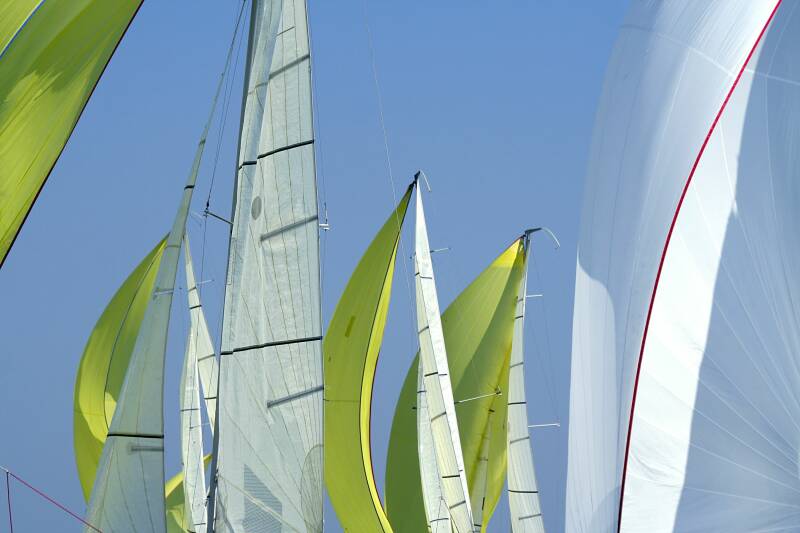
The gennaker is used in conditions when the wind is shifting and starting to blow into the port or starboard side of the yacht. While sailing, the main sail is controlled with a main sheet , which is a rope connected to the main sail and with which we control the tension of the main sail. The front sail genoa is controlled with a jib sheet . When we exit the sail boat marina, we can sail into the wind - windward, or down the wind - downwind. One thing about sailboats is that they cannot sail directly into the wind by the laws of physics. Most commercial sailing yachts can sail the closest of 45 degrees towards the origin of the wind direction.

We use cookies to provide you with the best service on our website. If you stay on our website, you consent to our Cookies Policy .
Tell us about your dream holiday, and we'll make sure you get a personalised offer at the best price on the market.
Thank you for your message. We will get back to you as soon as possible.
We're looking forward to learn more about your dream holiday. The more info you send us, the more detailed and personalized offer we can provide.
You have succesfully submitted the details of your sailing trip. Your detailed and personalized offer is on its way.

Catamaran Parts Explained: Interactive Guide (For Beginners)
As an Amazon Associate, we earn from qualifying purchases. We may also earn commissions if you purchase products from other retailers after clicking on a link from our site.
Learning a new skill can sometimes be time-consuming, and learning to sail also means learning a new language with tons and tons of new words that, in the beginning, makes no sense at all.
Some of the words you will read about in this article stem from the early days of sailing. Some are only a decade old; in this article, I have tried to compile all the basic terminology that I believe a beginner needs if he or she wants to understand sailing and catamarans.
Feel free to use this article as a resource and come back to it when you want to look something up or just to learn more!
Table of Contents
Main sections on a catamaran
- Hulls; are what separates a cat from other sailboats, a catamaran has two hulls, a trimaran three, and a regular sailboat, aka monohull, has one. The hull is the part of the sailboat which makes it float and to where all other things are attached. The hulls are usually divided into sections, such as usable and non-usable area. An example of a usable area is the engine room.
- Cockpit ; is from where the boat is maneuvered; it is to here that all halyards, sheets, etc. go. The cockpit contains navigation and steering equipment and is from where the sails, rudder, and engine are controlled.
- Deck; is the top part(roof) of a catamaran covering the hulls and bridge deck. The deck is made hard enough to walk on. To the deck, attaches lifelines and other equipment.
- Sugarscoops ; are the aftmost part that gets their name from their scoop-shaped appearance; this is where the deck/cockpit meets that water and usually encompasses a stair or ladder for easy access depending on the size of the boat.
- Cabin; is basically any area on the inside of the boat that is protected from the weather and is made to offer the crew space to rest, eat, and hangout. Inside the cabin, you will find berths (beds), a galley (kitchen), and sometimes specialized areas for repairs or storage.
- Bridgedeck; connects the two hulls; the inside is the cabin, the top part is the deck, and the entire unit is called the bridge deck. Bridge deck clearance, the bridge deck’s height above the water, is an important factor on a catamaran since a too small clearance will create excess noise and vibrations and fatigue not only the crew but also the boat.
Main areas on a catamaran
Bow (front).
Nothing complicated here; the bow is just a nautical term for the foremost part of your boat. This is where the waves and the sea first meet the hull and depending on the type of boat, the bow(s) can be shaped differently.
Center (Middle)
The part between the bow and the stern is rarely called the center part( middle) of a boat; more common is to speak about the specific area situated within the middle part of the vessel, such as the cabin or the mast.
- Cockpit; as mentioned above, here you will (usually) find everything that you need to maneuver and navigate the boat, such as a compass, GPS, sheets, steering wheel, and throttles for the engines. Some boats may not be set up this way and require you to move around the boat to access certain controls.
Cabin (inside of the boat)
The boat’s interior is where you will find everything that is made for the crew’s enjoyment; it is a place to eat, sleep, rest up, and hide away from nasty weather.
- Berths; is a bed; sailors need to sleep too!
- Galley ; is another name for kitchen, usually set up in a very primitive way with a gas stove on a stabilized platform to ensure your food won’t get tossed around.
- Navstation; or navigation station, is a place, usually with a table, chair, and equipment for planning and logging a journey.
Stern (Back)
Stern is the name for the rearmost part of the boat; there is no clear definition as to where the stern stops and other parts begin, so it is something that the crew will have to figure out on their own through good communication.
Communicating directions on a sailboat
Not only will you have to know the different names of different areas on the boat, but it will also be essential to communicate clearly in what direction something is happening, for example, in a situation where you, the captain, want the crew to observe in a specific direction or pick up a piece of gear somewhere on the boat.
Communication on a sailboat is vital when you want to sail safely and efficiently; here, I have listed the words or phrases used to communicate a direction.
- Forward; easy as it sounds, it is the same direction as where the bows are pointing. When giving directions towards or beyond the bow, you will use the word “forward” for example; the fender is located forward of the mast.
- Aft ; is the behind the boat. When you are giving directions towards the stern, you will use the word “aft”; for example, the cockpit is located aft of the mast.
- Port ; this will be your left side. Fun fact, in the good old days, you would always dock with the port on your left side; hence port is the left side. If you ever forget which one is which, “port” has 4 letters and so has the word”left”!
- Starboard ; is your right side!
Types of sails
Sails come in very different shapes and sizes and are a science in itself; in this article, I will focus on the mainsail and three common types of staysail.
- Mainsail; is, per definition, the sail attached to the mast; its sideways movements are controlled by the boom. When the mainsail is triangular in shape, as on most modern sailboats, it is called a Bermuda rig. Most mainsail uses something called battens.
- Staysail; mainly comes in two versions, a staysail that does not overlap the mainsail is called a jib. A staysail that is larger and thus overlaps the mainsail is called a genoa.
- Spinnaker ; is a big balloon-like sail that replaces the jib when sailing downwind.
Parts of a sail
- Luff; the front part of the sail, is connected to the mast through a rail system which makes it possible to hoist or reef.
- Leech; the back part of the sail.
- Foot; the bottom part that reaches from the clew to the tack.
- Clew; back bottom corner.
- Tack; is the front bottom corner (remember “tacking”?).
- Head; is the top triangle of the sail and this is where the mainsail halyard attaches.
- Battens; are pieces of flexible material sewn into the mainsail to increase its aerodynamic shape. Battens can be full length or partial length.
Standing rigging
Everything that keeps the sails and mast upright are parts of the standing rigging; it is comprised of wires, cables, and lightweight metal structures.
- Forestay; usually a metal wire running from the top of the mast to the bow, is sometimes combined with an inner forestay that connects to the mast at a lower point. If the forestay attaches to the top of the mast, the setup is called a masthead rig; if it attaches lower, it is called a fractional rig.
- Backstay ; same as the forestay but attaches to the stern; most catamarans do not employ a backstay system but instead moves the side stays aft.
- Shroud ; much like the forestay but stabilizes the mast sideways and runs from the top to the port or starboard side. Spreaders are used to change the angle of the wire against the mast and better support the mast.
- Sidestay ; connects to the mast below the shrouds and is not pushed outwards with spreaders. On a catamaran, these attach aft of the mast to eliminate the need for a backstay; this makes it possible for a fully battened mainsail with a large roach.
- Jumpers; are used on a fractional rig with diamond shrouds to add structural integrity to the mast without adding excess weight.
- Bowsprit; is a pole amidship at the bow that allows for separation of the tacks (foremost, lower part of the sail) for increasing sail efficiency when using two headsails.
Other stabilizing parts
- Spreaders; act to lessen the angle between the shrouds and the mast; a wider angle will result in forces acting sideways (stabilizing) instead of up and down (bending). This increases stability and decreases the risk of unwanted bending of the mast.
Running rigging
The running rigging on a catamaran is any piece of equipment used to control the shape of the sails, including what is needed to raise them.
- Sheet; are the ropes (or wire, cables, etc.) that connect to the clew of a sail; on a catamaran, it connects to the staysail (genoa or jib, depending on the shape).
- Mainsheet ; is the rope that makes it possible to change the mainsail’s angle; the mainsail can only move in a port to starboard direction(right and left) and not up and down.
- Staysail sheet ; is called after whatever type of sail it is connected to, i.e., jib sheet or genoa sheet. Worth notice is that since the staysail operates on both sides of the catamaran (depending on if your tacking or gybing), it is connected with two ropes, one for the port side and one for the starboard side.
- Halyards ; are the ropes that connect to the top of a sail and make hoisting (or raising) possible. Halyards have different names depending on what sail they are raising, such as Mainsail halyard or jib halyard. Not to be confused with sheets that act upon the sail once they are already hoisted. If the staysail is using a roller furling, then “hosting” is done differently.
- Furling line; is used together with a roller furling and makes it possible to spool up the sail on the forestay instead of raising and lowering. This makes for a faster and easier way to reduce sail area.
- Reefing lines; reefing is when you lower parts of your sail to reduce the sail area and reduce the boat’s power and speed; reefing lines are put through holes in the mainsail and attach to the boom.
- Boom vang; is connected between the boom and deck; it is used to change the mainsail’s shape by pulling downward on the boom. (not very common on Catamarans)
In this category, we will look at the hulls and some of the vital parts that attach to them under the waterline.
- Hulls; differ in their shapes depending on the boat’s purpose, a racing cat would have narrower hulls to reduce drag, and a cruising cat wider hulls to encompass more storage.
- Rudder; is what changes the direction of the boat. When water passes around the rudders(two on a catamaran), it creates a “pushing force” that makes the boat turn. The rudder is connected to a steering wheel or a tiller at the cockpit through chains and linkage.
- Centerboard and daggerboards ; are sorts of keels that can be raised or lowered to attain certain sailing characteristics. When the keel is up, drag is lower, and so is the draft (how deep the boat sticks in the water). A small draft makes it possible to travel in very shallow waters. The difference between a daggerboard and a centerboard is that a centerboard swivels into place, and a daggerboard is pulled straight up.
- Mini-keel; is just what it sounds like; it is a keel but very small (a few inches deep) and has no ballast.
- Crossbeam ; is a multihull-only feature and keeps the two hulls from moving in relation to each other. If the crossbeam is damaged or nonexistent, the bridge deck is the only thing that keeps the hulls in place. This will increase wear and sooner or later lead to cracks, or even worse, separation of hull and bridge deck.
Most catamarans have two engines, one on each hull aft the stern; usually, they are internal with only the propeller in the water. The other option, which is cheaper and most often found on smaller boats, is to have one outboard engine placed amidship (middle).
- Inboard ; engines are situated in a compartment inside the boat at the stern. On an inboard engine, the propeller and the shaft are the only parts outside the hull. Sometimes the prop shaft (propeller shaft) is replaced by a sail drive.
- Outboard ; is a standalone engine usually mounted on the bridge deck amidship(if only one is used) or mounted at the sterns when used in pairs. They are linked together with pushing rods and wires so it can be manipulated from the cockpit.
- Saildrive ; is a type of gearbox that is quieter and vibrates less than a regular propeller and shaft setup.
- Propeller and shaft; are the most common and cheapest way to propel your boat. It is basically just a watertight axel that sticks out of the hull, and at the end of it, you’ll find the propeller.
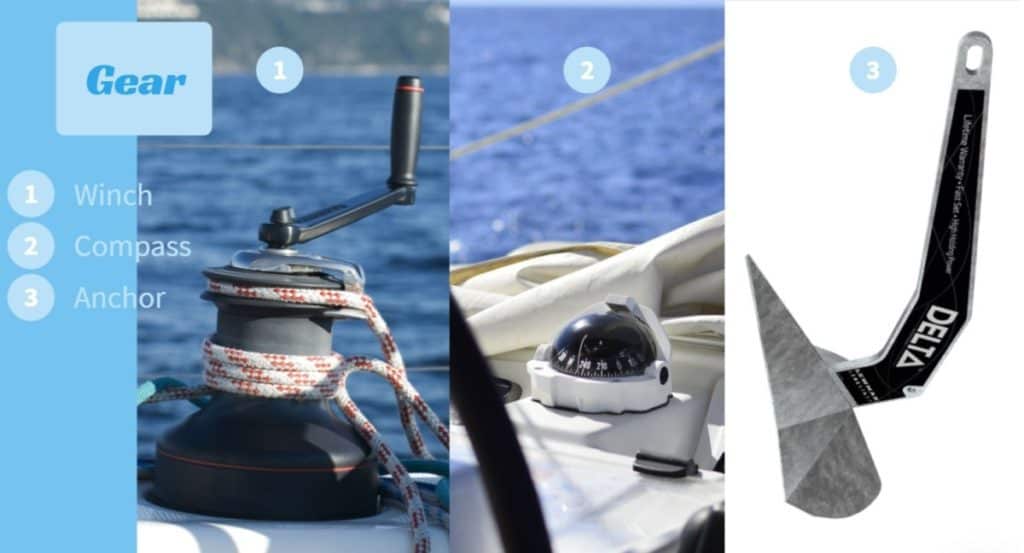
There are so many pieces of gear aboard a catamaran that an all-encompassing article would probably fill up the entire internet. Below I have listed the most common equipment that you will most likely encounter on any sailboat.
- Winches; makes handling lines and ropes much easier. Instead of pulling them with your bare hands, you loop them around your winch and use the handle to crank. Winches come in mechanical style or electrical style.
- Anchors ; is basically just a big hook made to stick to the bottom of the sea. Anchors have different shapes and weights depending not only on the seabed but also on the boat’s weight and size.
- Navigation ; compass, GPS, and maps are all vital pieces of equipment making your trip safe.
- Cleats ; is any equipment that is made to fasten a rope. Cleats come in different configurations; jam, cam, rope clutch, or the most common horn cleat.
- Block ; is a device that can be used in pairs as a pulley (to reduce the force needed to lift something) or on its own to reduce the friction of a rope when the rope can not be drawn in a straight line.
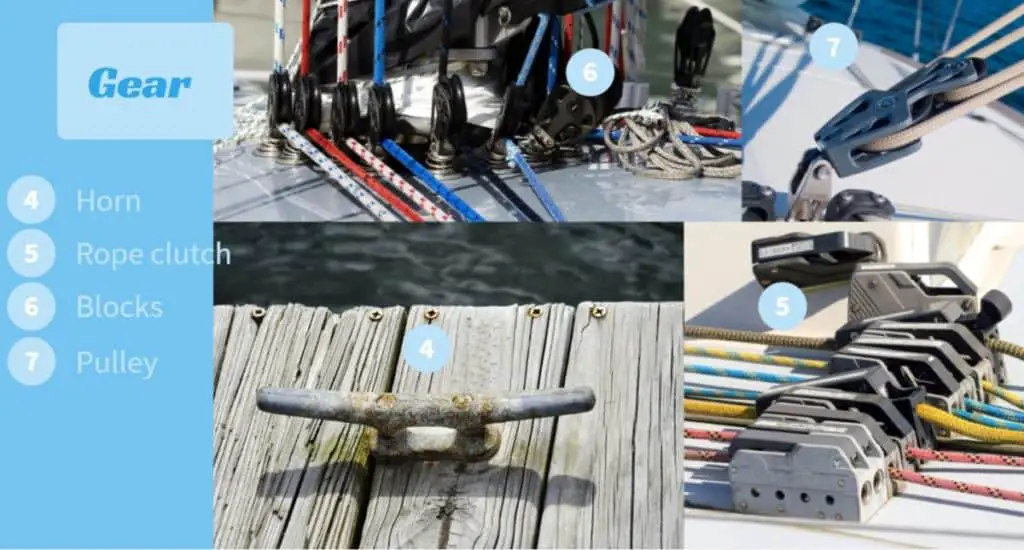
Owner of CatamaranFreedom.com. A minimalist that has lived in a caravan in Sweden, 35ft Monohull in the Bahamas, and right now in his self-built Van. He just started the next adventure, to circumnavigate the world on a Catamaran!
Leave a Reply Cancel reply
Your email address will not be published. Required fields are marked *
Save my name and email in this browser for the next time I comment.
Recent Posts
Must-Have Boat Gear for Catamaran Sailors!
Sailing is probably the most gear-intensive activity I've ever done; there are so many decisions to be made about what gear to buy now, for tomorrow, and what to definitely never buy. The gear on...
6 Best Trailerable Trimarans For Bluewater and Coastal Sailing
Having a boat costs a lot of money, even when you are not using it, marina fees, etc. And once it is in the water most sailors never go very far from their "home marina" and sailing will be somewhat...


Parts of a Boat Explained
Captain tyler brady.
- October 5, 2022
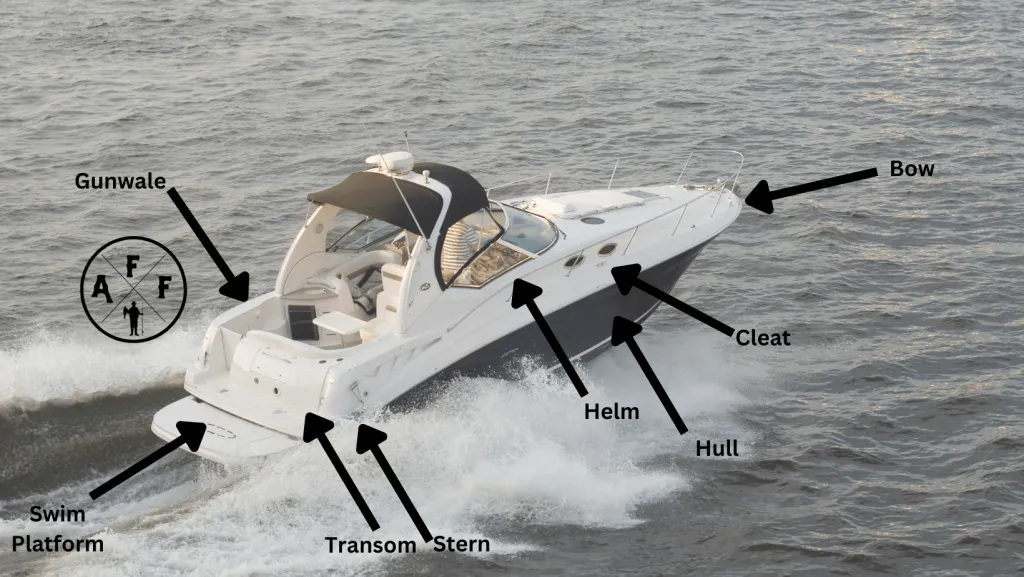
Boat enthusiasts and first-time boat buyers, this post is for you!
We’re going to break down the anatomy of a boat so that you have a better understanding of where different areas are on the vessel. This list will help you when it comes time to buy your boat or speak with a professional about maintaining your boat.
Learning about the parts of a boat is the first step on your journey to becoming an expert in all things boating!
Refer to the list to learn all the different boat parts!
Parts of a Boat Defined
- Aft – The back/stern of the boat
- Beam – The beam of a boat is its width at its widest point
- Bridge – The bridge is an elevated area on the boat where the captain steers the vessel. It’s also a great place to get a good view of everything around you.
- Bow – The bow is the front or forward part of the vessel
- Bilge – The bilge is the lowest internal part of a boat’s hull
- Bulkhead – A bulkhead is a wall that divides compartments on a boat
- Cabin – A cabin is an interior part of a boat that can be enclosed and is often used as a place to sleep while onboard a vessel
- Casting Deck/ Swim Platform – A casting deck or swim platform is the area at the bow or stern of the boat designated for casting while fishing or for entering and exiting the water while swimming.
- Cleat – A cleat is a fitting located on the gunwale of a boat or dock used to secure a rope for anchors, docking, fenders, etc.
- Deadrise – The deadrise of a boat is the angle between the hull and the keel
- Deck – The deck is the flat walking surface of a boat
- Forward – The front part of a boat
- Freeboard – Freeboard is the distance from the waterline to the deck of a vessel.
- Hatch – A hatch is an opening in the deck that provides access to parts of a boat below deck like storage compartments
- Head – The head is a room on a vessel that contains a toilet and sink
- Helm – The helm is the area of a boat where the captain or primary operator stands while driving or piloting the vessel
- Hull – The boat hull is the main body of the vessel that keeps it afloat
- Keel – The keel is a structural element located at the bottom centerline of a boat that helps with stabilization and tracking.
- Livewell – A Livewell is a tank on a fishing boat that is used to store live bait
- Port Side – Port side is the left side of a boat when looking towards the bow.
- Propeller – The propeller is a device located at the stern of a vessel that provides thrust to move the boat through the water
- Pulpit – The pulpit is a railing located at the bow of a vessel
- Running Lights – Running lights are navigation lights located at a vessel’s bow that indicate which way the vessel is moving.
- Starboard Side – Starboard side is the right side of a boat when you are looking towards the bow.
- Stern – The stern is the back or aft part of a vessel.
- Superstructure -The superstructure is the area above the deck that contains the cabin, bridge, hatches, etc. (more commonly used with larger ships compared to a personal watercraft)
- Throttle – The throttle is a lever located at the helm that controls the speed of the vessel
- Rub Rail – A rub rail is a protective trim piece located along a vessel’s gunwale that helps protect the hull from impact.
- Transom – The transom is the flat area located at the stern of the vessel where the outboard motor is mounted
- Waterline – The waterline is the line where the hull of a vessel meets the water’s surface
- Windshield – The windshield is a glass or Lexan panel located at the bow of a boat that helps to deflect wind and spray while underway
- Underside – The underside is the bottom of the hull that is below the waterline
Wrapping Up
There you have it! A complete list of the different parts that make up the anatomy of a boat. Of course, many more details and pieces make up a vessel, but these are the main components you should be familiar with. Now that you know your way around a bit, and become familiar with safe boating practices , then it’s time to get out there and enjoy boating!
Check out the following pages for guides on all the fishing gear you need to get out on the water:
- Best Fish Finders
- Best Fishing Rods
- Best Fishing Reels
- Best Fishing Line
Save 40% on fishing and outdoor gear!
We have partnered with Bass Pro Shops to offer the best deals on high-quality fishing and outdoor gear to our readers. If you click on the button below, we will take you to their exclusive discount page.

CHIRP Sonar

NMEA2000: What is it and Why Do You Need It?

Pressure Washing a Boat: Essential Tips and Techniques

Octopus Hooks vs Circle Hooks: Unraveling the Key Differences

Fishing Sinker Weight Chart: Essential Guide for Anglers

Graphite vs Carbon Fiber Fishing Rods: A Comprehensive Comparison for Anglers

Fishing Rods Storage Ideas: Efficient Solutions for Anglers

Best Bass Boat Brands: Top Picks and Expert Insights

Fishing Reels Made in the USA: Comprehensive Guide and Top Picks
Leave a comment cancel reply.
Save my name, email, and website in this browser for the next time I comment.
- Weird But True
- Sex & Relationships
- Viral Trends
- Human Interest
- Fashion & Beauty
- Food & Drink
trending now in Lifestyle

Bride calls out wedding guest's 'ridiculous' RSVP: 'Nothing I can...

I'm a doc — and this embarrassing health issue is actually very...

I'm a cardiologist — this is the best fruit to eat for a...

Disgusted travelers film couple amid 'sex act' on British Airways...

Dear Abby: I've called my situationship 100 times with no answer...

Bride and groom blasted for 15 outrageous wedding-day rules for...

Lesbians reach orgasm more often than heterosexual women — our...

NJ mom gives birth in a Maserati -- then defends dissertation...
Breaking news, lesbians reach orgasm more often than heterosexual women — our ‘sex scripts’ explain why: study.
- View Author Archive
- Get author RSS feed
Thanks for contacting us. We've received your submission.

It takes one to know one.
The so-called “orgasm gap” between sexual partners is a lot narrower among lesbians than heterosexual couples, according to a new study published in Social Psychological and Personality Science .
That doesn’t mean men are bad at sex: “These results could be interpreted to mean that sex with men is inherently worse or that men are ‘bad lovers,’ but that is not necessarily true,” study author and Rutgers University PhD candidate Grace Wetzel told PsyPost.
Previous research has revealed that a robust 95% of men reach climax during sex compared to just 65% of women. Yet, 86% of women in relationships with women reported regular orgasms when their partners were female.
Researchers found a disparity in sexual “scripts” — or “our pre-existing expectations for how a sexual encounter will typically go” — between men, women and lesbians that could help heterosexual couples begin to reconcile the orgasm gap.
“The orgasm gap as a cultural phenomenon has become a hot topic in recent years. We wanted to investigate why women who have sex with men tend to have less orgasms than women who have sex with women. This research helps us to understand why women tend to face worse sexual outcomes when having sex with men,” said Wetzel.

The study was divided into two parts.
Wetzel’s team recruited 449 women — 59.5% heterosexual and 40.5% lesbian — aged 18 and up and sexually active within the past year to ask probing questions about their sex lives.
Regardless of their sexual orientation, women valued the ability to achieve orgasm with their partners and desired similar experiences during sex. Unfortunately, that’s where man of their similarities ended.
Lesbians reported receiving more clitoral stimulation during sex — the key to unlocking the orgasm for many, if not most women. They also had higher expectations for regularly reaching climax than women who have sex with men and put in more work to get there. The findings support the idea that lesbians are more proactive about orgasming because they’ve come to expect that from their partners, whereas regularly disappointed heterosexual women were more likely to be discouraged by their lack of success.
“Women experience and expect more clitoral stimulation when they have sex with other women than when they have sex with men, which helps to explain the orgasm gap between these two groups of women,” Wetzel told PsyPost.

In another experiment, Rutgers researchers asked 481 cisgender bisexual women to imagine a romantic dinner scene leading to a sexual encounter with either a man or woman.
Those who were assigned a woman as their proverbial date were more likely to expect to receive clitoral stimulation and thus reach climax than those presented with male partners — suggesting that women’s low expectations of men contribute to their unsuccessful outcomes.
“The problem here is the dominant sexual script associated with heterosexual sex, which does not include sufficient clitoral stimulation or sufficient focus on women’s pleasure. Heterosexual couples can create their own sexual scripts that work for the people involved,” Wetzel explained. “Couples can include more clitoral stimulation in their sexual encounters to create sexual relationships that are fulfilling for all partners.”
Researchers warned that the opinions shared by study participants may be more of a reflection of what they believe should occur rather than an accurate report of their lived experience.
“While this study focuses on orgasm as an important sexual outcome and a useful marker of inequity, it is important to note that this is not the only sexual outcome that matters for couples and does not mean that orgasm is necessary for ‘good sex’,” Wetzel noted. “In pursuing a partner’s orgasm, it’s essential to never put pressure on a partner to orgasm, as this coercion can make orgasm less likely, less pleasurable, and can lead to negative relationship outcomes.”
Share this article:
- Life & Culture
- Music Reviews
Sting gets personal in St. Petersburg with the Florida Orchestra: Review
- Gabrielle Calise Times staff
ST. PETERSBURG — Sting offered his blessing right after his second tune: Yes, we could rock out in front of the Florida Orchestra.
“I know we’re in a classical space, and you’re not supposed to clap in the middle of a song,” the singer told the crowd at the Mahaffey Theater on Friday night. “You can tonight, OK?”
Then he launched into “Every Little Thing She Does Is Magic.” The crowd gave in, clapping and singing along with “eees” and “ooohs.”
Sting was in Tampa in February for a sold-out Raymond James Stadium gig alongside Billy Joel . But he’s a lover of the arts, and he knows Tampa Bay is obsessed with him, so he returned to star in two fundraiser concerts with the Florida Orchestra on Thursday and Friday. The orchestra’s star-studded gala concerts drive major funds each year; past guest performers have included Josh Groban, Seal, Itzhak Perlman and Yo-Yo Ma.
The shows marked Sting’s second time performing with the Florida Orchestra during their annual fundraiser. In 2017, he came for the nonprofit’s 50th anniversary. Tickets this time ranged from $100 to $1,500 for a spot in the front row. On both nights, all 2,012 seats sold out.
The concert on Friday — featuring 18 songs, an intermission and an encore — was equal parts intimate and indulgent.
Sting and members of his touring band sat onstage with the Florida Orchestra, playing special arrangements of his lush pop and rock tracks. Before just about every song, Englishman #1 (Sting) walked the crowd through his lyrics, offering behind-the-scenes commentary on his characters. Then Englishman #2 (musical director Michael Francis) conducted the Florida Orchestra as it fleshed out a rich soundtrack.
If you closed your eyes during “Fields of Gold” and let your imagination take over, it was easy to picture the endless barley outside Sting’s Wiltshire manor. The orchestra’s delicate violin section and soft patter of drums called to mind foxes scampering through a forest in “End of the Game.” You could practically taste the spray of saltwater off a dock during the songs from Sting’s nautical musical “The Last Ship” or hear the clip-clop of a horse in “I Hung My Head.”
For most of the show, Sting planted his leather-clad butt on a stool and crooned. At 72, his voice still mesmerized, even if he had to skip or rasp through some of the high notes.
The high-dollar event allotted ample time for both solo material and hits from his band the Police (sadly, sans “Message in a Bottle.”) Ahead of “Roxanne,” Sting rehashed the fateful night when his fledgling band stayed in a hotel filled with ladies of the night. He posed the question: Is “Every Breath You Take” an appropriate wedding song or a stalker anthem? In a cowboy hat, Sting gushed over Hank Williams and confessed to a lifelong cowboy fascination. Before “I Hung My Head,” he surveyed his audience to see if they felt the same.
Explore Tampa Bay’s sights and bites
Subscribe to our free Do & Dine newsletter
You’re all signed up!
Want more of our free, weekly newsletters in your inbox? Let’s get started.
“I was obsessed by TV westerns, and I’ll be able to figure out the median age of the audience if I say ‘Rawhide,’” he said to a roar of cheers.
“‘Maverick’?”
More cheers.
“My favorite — ‘Bonanza’!?”
Throughout the show, the orchestra took Sting’s already emotional songs to new heights. They brought the drama with shimmering percussion and strings during “Desert Rose,” then let a booming brass section shine during “King of Pain.”
The mood grew tender during an encore of “Fragile” as Sting strummed a special guitar made of wood from pieces of a migrant boat. A group of Italian prisoners gave him the handmade instrument.
“You know, an instrument is like a human being. They respond to love and care,” he explained. “Eventually, after seven hours of playing, this thing started to tell a story.”
A fitting end for a night of stories.
Sting and the Florida Orchestra’s St. Petersburg setlist on Friday
1. Roxanne (by the Police)
2. Englishman In New York
3. Every Little Thing She Does Is Magic (by the Police)
4. Fields of Gold
5. When We Dance
6. I Hung My Head
7. Why Should I Cry for You?
8. End of the Game
9. Shape of my Heart
10. Fortress Around Your Heart
11. The Last Ship (from the soundtrack of “The Last Ship”)
12. Practical Arrangement (from the soundtrack of “The Last Ship”)
13. What Say You, Meg? (from the soundtrack of “The Last Ship”)
14. What Could Have Been (from the soundtrack of “Arcane League of Legends”)
15. King of Pain (by the Police)
16. Every Breath You Take (by the Police)
17. Desert Rose
18. Fragile
Gabrielle Calise is a culture reporter who covers music, nostalgia and offbeat Florida trends. Reach her at [email protected].
MORE FOR YOU
- Advertisement
ONLY AVAILABLE FOR SUBSCRIBERS
The Tampa Bay Times e-Newspaper is a digital replica of the printed paper seven days a week that is available to read on desktop, mobile, and our app for subscribers only. To enjoy the e-Newspaper every day, please subscribe.

IMAGES
VIDEO
COMMENTS
The hull is what most people would consider 'the boat'. It's the part that provides buoyancy and carries everything else: sails, masts, rigging, and so on. Without the hull, there would be no boat. The hull can be divided into different parts: deck, keel, cabin, waterline, bilge, bow, stern, rudder, and many more.
The main parts of a sailboat. Hull - The main structure. Keel - The fin under the boat. Rudder - To steer the boat. Mast and Rigging - Supporting the sails. Boom - Supporting the mainsail. Sails - The canvas used to harness the energy of the wind. The starboard and port side of the boat. Windward and Leeward.
If you're a beginner sailor, you want a quick and solid overview of the different sailboat parts. In this video, I go over the four main segments of the sail...
How Do the Different Parts of a Sailboat Work Together? Explained Step by Step. When it comes to sailboats, the art of sailing involves the perfect coordination and harmony among various parts. Every component has a specific purpose and contributes to the overall functioning of the vessel. In this article, we will delve into each part of a ...
A basic sailboat is composed of at least 12 parts: the hull, the keel, the rudder, the mast, the mainsail, the boom, the kicking strap (boom vang), the topping lift, the jib, the spinnaker, the genoa, the backstay, and the forestay. Read all the way through for the definition of each sailboat part and to know how they work.
Short answer parts of the boat: The main parts of a boat include the hull (the bottom part that touches water), deck (top surface), bow (front end), stern (back end), and keel (the centerline running beneath). ... Sailing Simplicity Explained Rigging is the intricate system of ropes (or lines) and fittings used to control sails on sailboats ...
Rigging. The rigging refers to the network of cables, wires, and lines that support and control the sails. This includes components such as shrouds, forestays, backstays, and halyards. Rigging plays a crucial role in maintaining the mast's stability, tensioning the sails, and controlling their position.
Catamaran Sailboat Parts Explained. For the most part, the components of a catamaran share the same terms and labels that they would on a monohull. Cats often have a few extra features with other names, however. Hulls A catamaran is made with two hulls connected together. Each hull has an interior, just like a monohull sailboat does.
In part 4 of Sailboat Parts Explained, we're taking a quick look at the different names for sail sides, corners and mast parts as well.Make your sailing drea...
The Parts of a Sailboat Below the Waterline Keels & Rudders. This Gallant 53 has a long-fin keel and a spade rudder. Keels provide three key attributes in varying amounts depending on their design: directional stability, ballast, and lift to windward.
Close-Hauled. Sailing as close to the wind as possible, with the sail set at a sharp angle to the boat. Beam Reach. Sailing perpendicular to the wind, with the sail set at a right angle to the boat. Broad Reach. Sailing with the wind at a diagonal angle behind the boat, with the sail angled away from the boat. Running.
Main parts of a sailboat are explained for a Bermuda rigged sloop. This is the most widespread modern type of sailing boat and it is the boat type considered in this blog, as well as in Your First Sailing Handbook.For overview of other sailboat types and their classification see our post: Types of Sailboats. The sloop normally sails with two sails: one mainsail and one foresail that is called ...
In part 2 of our series on sailboat parts, I go over all the main parts of the hull. I'll show you a diagram and give you a clear overview of things like the...
The rigging on a sailboat consists of a system of ropes, wires, and chains that support the mast and sails. It can be divided into two main categories: standing rigging and running rigging. Standing rigging includes the shrouds and stays, which are responsible for providing support to the mast.
Sailboats have various types of sails, including the mainsail, headsail (jib/genoa), and specialty sails like spinnakers. The mainsail is the primary sail attached to the main mast, while the headsail is located at the front of the boat. Spinnakers are large, lightweight sails used for sailing downwind.
Helmsman - The person that is piloting the boat and at the helm. Steering wheel - This is connected to the rudder via cables or pulleys and is used in place of a tiller to steer the boat. Hull - This is the entire body of the boat. Deck - This is the flat surface on the top of the boat. Keel - This is a fin connected to the bottom of ...
Sailboats require four main parts to operate: a hull, mast, sail, and rudder. The hull is the body of the boat, and all other parts are directly or indirectly connected to it. The mast is a long pole that serves as a guide and mounting point for the sail. The sail catches the wind and propels the boat, and the rudder directs the boat and acts ...
The gennaker is used in conditions when the wind is shifting and starting to blow into the port or starboard side of the yacht. While sailing, the main sail is controlled with a main sheet, which is a rope connected to the main sail and with which we control the tension of the main sail.The front sail genoa is controlled with a jib sheet.. When we exit the sail boat marina, we can sail into ...
Parts of a sail. Luff; the front part of the sail, is connected to the mast through a rail system which makes it possible to hoist or reef. Leech; the back part of the sail. Foot; the bottom part that reaches from the clew to the tack. Clew; back bottom corner.
Bow - The bow is the front or forward part of the vessel. Bilge - The bilge is the lowest internal part of a boat's hull. Bulkhead - A bulkhead is a wall that divides compartments on a boat. Cabin - A cabin is an interior part of a boat that can be enclosed and is often used as a place to sleep while onboard a vessel.
The study was divided into two parts. Wetzel's team recruited 449 women — 59.5% heterosexual and 40.5% lesbian — aged 18 and up and sexually active within the past year to ask probing ...
AI created a replica she carries in her phone. In April, the 21-year-old from Rhode Island got her old voice back. Not the real one, but a voice clone generated by artificial intelligence that she ...
In part 3 of our series on sailboat parts, we dive into two types of rigging: standing rigging and running rigging. I use a 3D model and some diagrams to giv...
She explained that although the boy entered the UK via Kent, he came to Northern Ireland through the National Transfer Scheme. He made an asylum claim, but his claim was deemed "inadmissible ...
The concert on Friday — featuring 18 songs, an intermission and an encore — was equal parts intimate and indulgent. The Florida Orchestra, led by Michael Francis, played 18 songs with Sting on ...